Siemens RF600R RFID UHF Reader User Manual SIMATIC RF600
Siemens AG RFID UHF Reader SIMATIC RF600
Siemens >
Contents
- 1. User manual 01
- 2. User manual 02
- 3. User manual 03
- 4. User manual 04
- 5. User manual 05
User manual 01

Answers for industry.
SIMATIC Ident
RFID SYSTEMS
SIMATIC RF600
System Manual · 05/2012
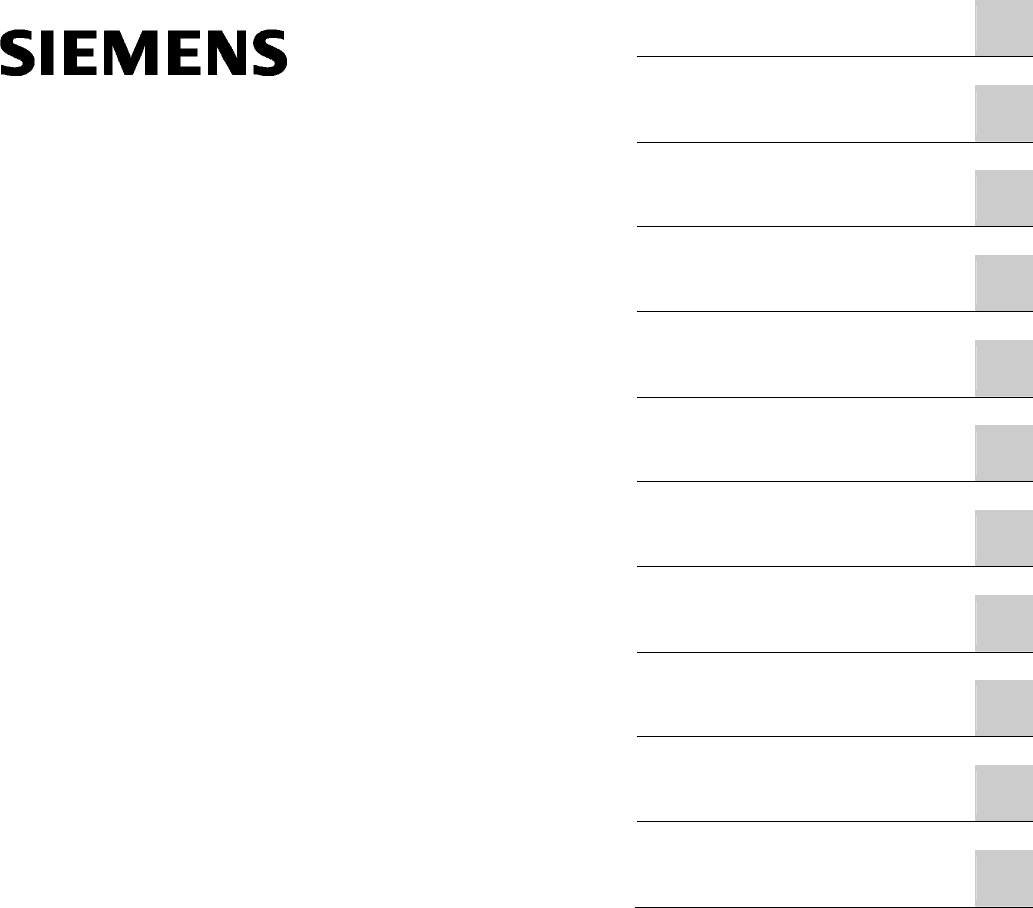
SIMATIC RF600
_
_________________
_
_
_________________
_
_
_________________
_
_
_________________
_
_
_________________
_
_
_________________
_
_
_________________
_
_
_________________
_
_
_________________
_
_
_________________
_
_
_________________
_
SIMATIC Ident
RFID systems
SIMATIC RF600
System Manual
05/2012
J31069-D0171-U001-A13-7618
Introduction
1
Safety Information
2
System overview
3
RF600 system planning
4
Readers
5
Antennas
6
Transponder/tags
7
Integration into networks
8
System diagnostics
9
Accessories
10
Appendix
A
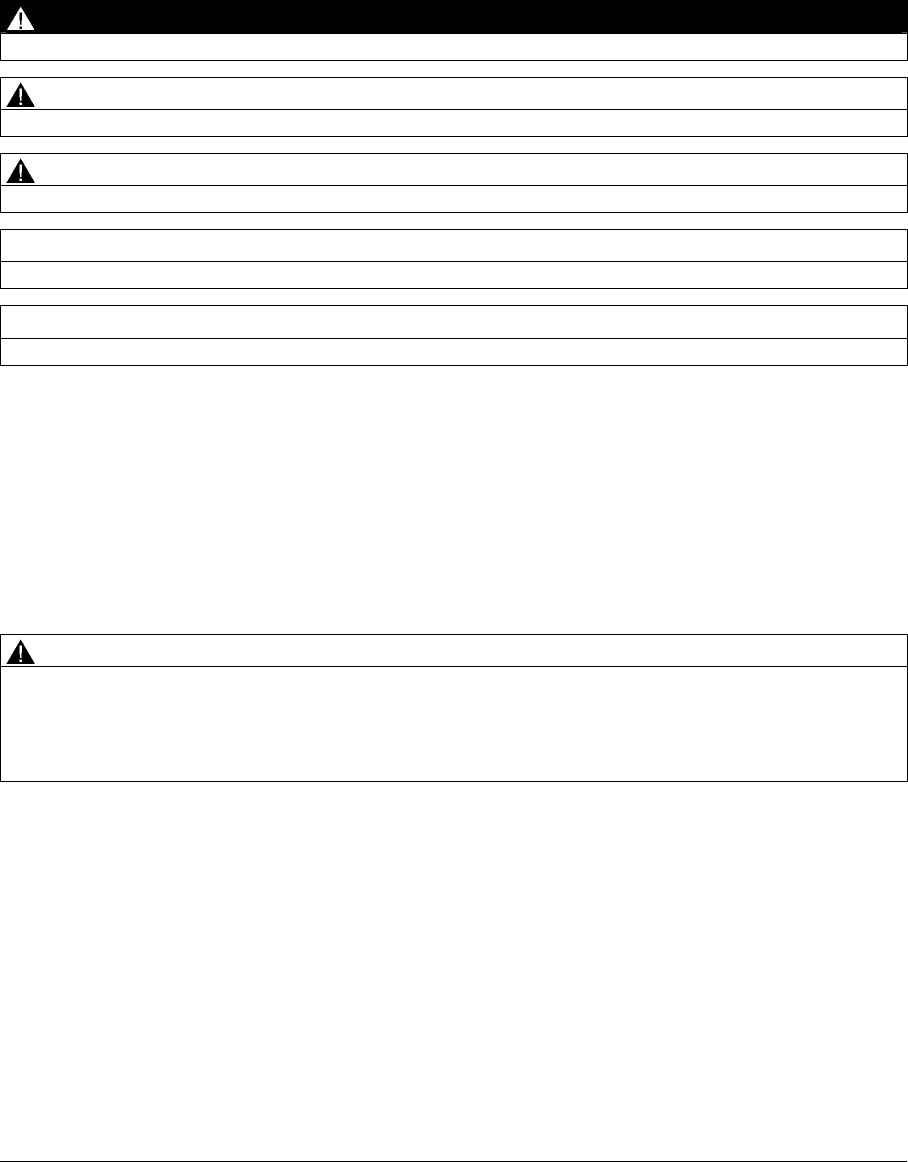
Legal information
Legal information
Warning notice system
This manual contains notices you have to observe in order to ensure your personal safety, as well as to prevent
damage to property. The notices referring to your personal safety are highlighted in the manual by a safety alert
symbol, notices referring only to property damage have no safety alert symbol. These notices shown below are
graded according to the degree of danger.
DANGER
indicates that death or severe personal injury will result if proper precautions are not taken.
WARNING
indicates that death or severe personal injury may result if proper precautions are not taken.
CAUTION
with a safety alert symbol, indicates that minor personal injury can result if proper precautions are not taken.
CAUTION
without a safety alert symbol, indicates that property damage can result if proper precautions are not taken.
NOTICE
indicates that an unintended result or situation can occur if the relevant information is not taken into account.
If more than one degree of danger is present, the warning notice representing the highest degree of danger will
be used. A notice warning of injury to persons with a safety alert symbol may also include a warning relating to
property damage.
Qualified Personnel
The product/system described in this documentation may be operated only by personnel qualified for the specific
task in accordance with the relevant documentation, in particular its warning notices and safety instructions.
Qualified personnel are those who, based on their training and experience, are capable of identifying risks and
avoiding potential hazards when working with these products/systems.
Proper use of Siemens products
Note the following:
WARNING
Siemens products may only be used for the applications described in the catalog and in the relevant technical
documentation. If products and components from other manufacturers are used, these must be recommended
or approved by Siemens. Proper transport, storage, installation, assembly, commissioning, operation and
maintenance are required to ensure that the products operate safely and without any problems. The permissible
ambient conditions must be complied with. The information in the relevant documentation must be observed.
Trademarks
All names identified by ® are registered trademarks of Siemens AG. The remaining trademarks in this publication
may be trademarks whose use by third parties for their own purposes could violate the rights of the owner.
Disclaimer of Liability
We have reviewed the contents of this publication to ensure consistency with the hardware and software
described. Since variance cannot be precluded entirely, we cannot guarantee full consistency. However, the
information in this publication is reviewed regularly and any necessary corrections are included in subsequent
editions.
Siemens AG
Industry Sector
Postfach 48 48
90026 NÜRNBERG
GERMANY
Order number: J31069-D0171-U001
Ⓟ 05/2012 Technical data subject to change
Copyright © Siemens AG 2005, -,
2012.
All rights reserved
SIMATIC RF600
System Manual, 05/2012, J31069-D0171-U001-A13-7618 3
Table of contents
1 Introduction.............................................................................................................................................. 13
1.1 Preface.........................................................................................................................................13
1.2 Abbreviations and naming conventions .......................................................................................14
1.3 Navigating in the system manual.................................................................................................15
2 Safety Information.................................................................................................................................... 17
2.1 General safety instructions ..........................................................................................................17
2.2 Safety instructions for third-party antennas as well as for modifications to the RF600
system..........................................................................................................................................18
2.3 Safety distance to transmitter antenna ........................................................................................19
2.3.1 Safety distance between transmitter antenna and personnel......................................................19
2.3.2 Minimum distance to antenna in accordance with ETSI..............................................................20
2.3.3 Minimum distance to antenna in accordance with FCC (USA)....................................................21
3 System overview...................................................................................................................................... 23
3.1 RF System SIMATIC RF600........................................................................................................23
3.1.1 Application areas of RF600..........................................................................................................25
3.1.2 System components (hardware/software) ...................................................................................26
3.1.3 Features.......................................................................................................................................29
4 RF600 system planning ........................................................................................................................... 31
4.1 Overview ......................................................................................................................................31
4.2 Possible system configurations....................................................................................................31
4.2.1 Scenario for material handling control .........................................................................................32
4.2.2 Scenario for workpiece identification ...........................................................................................34
4.2.3 Scenario for Intra logistics............................................................................................................36
4.2.4 Scenario incoming goods, distribution of goods and outgoing goods .........................................38
4.3 Antenna configurations ................................................................................................................39
4.3.1 Antenna configuration example ...................................................................................................39
4.3.2 Possibilities and application areas for antenna configurations....................................................41
4.3.3 Tag orientation in space...............................................................................................................45
4.3.4 Specified minimum and maximum spacing of antennas .............................................................45
4.3.5 Mutual interference of readers (antennas)...................................................................................48
4.3.6 Read and write range...................................................................................................................51
4.3.7 Static/dynamic mode....................................................................................................................52
4.3.8 Operation of several readers within restricted space ..................................................................52
4.3.8.1 Dense Reader Mode....................................................................................................................52
4.3.8.2 Optimizing tag reading accuracy .................................................................................................52
4.3.8.3 Optimization of robustness of tag data accesses for readers that are operated
simultaneously .............................................................................................................................53
4.3.8.4 Frequency hopping ......................................................................................................................53
4.3.9 Guidelines for selecting RFID UHF antennas..............................................................................54
4.3.9.1 Note safety information................................................................................................................54

Table of contents
SIMATIC RF600
4 System Manual, 05/2012, J31069-D0171-U001-A13-7618
4.3.9.2 Preconditions for selecting RFID UHF antennas ........................................................................ 54
4.3.9.3 General application planning....................................................................................................... 54
4.3.9.4 Antennas ..................................................................................................................................... 57
4.3.9.5 Antenna cables ........................................................................................................................... 68
4.3.9.6 Application example .................................................................................................................... 70
4.4 Environmental conditions for transponders/tags......................................................................... 71
4.5 The response of electromagnetic waves in the UHF band......................................................... 72
4.5.1 The effect of reflections and interference.................................................................................... 72
4.5.2 Influence of metals...................................................................................................................... 72
4.5.3 Influence of liquids and non-metallic substances........................................................................ 73
4.5.4 Influence of external components ............................................................................................... 73
4.6 Regulations applicable to frequency bands ................................................................................ 74
4.6.1 Regulations for UHF frequency bands in Europe ....................................................................... 74
4.6.2 Regulations for UHF frequency ranges in Argentina .................................................................. 75
4.6.3 Regulations for UHF frequency ranges in Bolivia ....................................................................... 75
4.6.4 Regulations for UHF frequency ranges in Brazil......................................................................... 75
4.6.5 Regulations for UHF frequency ranges in Canada ..................................................................... 75
4.6.6 Regulations for UHF frequency bands in China.......................................................................... 76
4.6.7 Regulations for UHF frequency ranges in India.......................................................................... 77
4.6.8 Regulations for UHF frequency ranges in Mexico ...................................................................... 77
4.6.9 Regulations for UHF frequency ranges in Russia....................................................................... 78
4.6.10 Regulations for UHF frequency bands in Singapore (866-869 MHz band) ................................ 79
4.6.11 Regulations for UHF frequency ranges in South Africa .............................................................. 79
4.6.12 Regulations for UHF frequency ranges in South Korea.............................................................. 80
4.6.13 Regulations for UHF frequency bands in Thailand ..................................................................... 81
4.6.14 Regulations for UHF frequency bands in the USA ..................................................................... 81
4.7 Guidelines for electromagnetic compatibility (EMC) ................................................................... 82
4.7.1 Overview ..................................................................................................................................... 82
4.7.2 What does EMC mean?.............................................................................................................. 82
4.7.3 Basic rules................................................................................................................................... 83
4.7.4 Propagation of electromagnetic interference ..............................................................................85
4.7.5 Prevention of interference sources ............................................................................................. 87
4.7.6 Equipotential bonding.................................................................................................................. 88
4.7.7 Cable shielding............................................................................................................................ 89
5 Readers................................................................................................................................................... 93
5.1 RF620R reader ........................................................................................................................... 94
5.1.1 Description .................................................................................................................................. 94
5.1.1.1 Ordering data .............................................................................................................................. 95
5.1.1.2 Status display.............................................................................................................................. 97
5.1.1.3 Pin assignment of the RS422 interface....................................................................................... 98
5.1.1.4 Pin assignment of the connecting cable ..................................................................................... 98
5.1.1.5 Grounding connection ................................................................................................................. 99
5.1.2 Planning application.................................................................................................................... 99
5.1.2.1 Minimum mounting clearances of two readers ........................................................................... 99
5.1.2.2 Antenna diagram for RF620R (ETSI)........................................................................................ 100
5.1.2.3 Antenna diagram for RF620R (FCC) ........................................................................................ 103
5.1.2.4 Interpretation of directional radiation patterns........................................................................... 106
5.1.2.5 Antenna/read point configurations ............................................................................................ 106
5.1.3 Installing/Mounting .................................................................................................................... 107

Table of contents
SIMATIC RF600
System Manual, 05/2012, J31069-D0171-U001-A13-7618 5
5.1.3.1 Mounting/Installing FCC.............................................................................................................107
5.1.4 Configuration/integration............................................................................................................108
5.1.4.1 Transmission protocols ..............................................................................................................109
5.1.5 Technical data............................................................................................................................109
5.1.5.1 Mechanical data.........................................................................................................................109
5.1.5.2 Technical data according to EPC and ISO ................................................................................111
5.1.5.3 Maximum number of readable tags ...........................................................................................112
5.1.6 Dimension drawings...................................................................................................................113
5.1.7 Certificates and approvals .........................................................................................................114
5.1.7.1 Country-specific certifications ....................................................................................................114
5.1.7.2 FCC information.........................................................................................................................115
5.1.7.3 IC-FCB information ....................................................................................................................116
5.2 RF630R reader ..........................................................................................................................117
5.2.1 Description .................................................................................................................................117
5.2.1.1 Ordering data .............................................................................................................................118
5.2.1.2 Status display.............................................................................................................................119
5.2.1.3 Pin assignment of the RS422 interface .....................................................................................120
5.2.1.4 Pin assignment of the connecting cable ....................................................................................121
5.2.1.5 Grounding connection................................................................................................................121
5.2.2 Planning application...................................................................................................................122
5.2.2.1 Minimum mounting clearances of two antennas of different readers ........................................122
5.2.2.2 Antenna/read point configurations .............................................................................................122
5.2.3 Installing/Mounting .....................................................................................................................123
5.2.3.1 Mounting/Installation ..................................................................................................................123
5.2.4 Configuration/integration............................................................................................................124
5.2.4.1 Transmission protocols ..............................................................................................................125
5.2.5 Technical data............................................................................................................................125
5.2.5.1 Mechanical data.........................................................................................................................125
5.2.5.2 Technical data according to EPC and ISO ................................................................................127
5.2.5.3 Maximum number of readable tags ...........................................................................................128
5.2.6 Dimension drawings...................................................................................................................129
5.2.7 Certificates and approvals .........................................................................................................130
5.2.7.1 FCC information.........................................................................................................................131
5.2.7.2 IC-FCB information ....................................................................................................................132
5.3 RF640R reader ..........................................................................................................................133
5.3.1 Description .................................................................................................................................133
5.3.1.1 Overview ....................................................................................................................................133
5.3.1.2 Ordering data .............................................................................................................................134
5.3.1.3 Status display.............................................................................................................................136
5.3.1.4 Pin assignment of the digital I/O interface .................................................................................137
5.3.1.5 Connection scheme for the digital I/O interface.........................................................................138
5.3.1.6 Pin assignment for power supply...............................................................................................143
5.3.1.7 Pin assignment for Industrial Ethernet interface........................................................................144
5.3.1.8 Grounding connection................................................................................................................144
5.3.2 Planning the use ........................................................................................................................145
5.3.2.1 Selecting the antenna ................................................................................................................145
5.3.2.2 Internal antenna .........................................................................................................................145
5.3.2.3 External antenna........................................................................................................................153
5.3.3 Installing / mounting ...................................................................................................................153
5.3.4 Configuration/integration............................................................................................................154
5.3.5 Technical data............................................................................................................................155

Table of contents
SIMATIC RF600
6 System Manual, 05/2012, J31069-D0171-U001-A13-7618
5.3.5.1 Mechanical data ........................................................................................................................ 155
5.3.5.2 Technical data according to EPC and ISO ............................................................................... 157
5.3.6 Dimension drawings.................................................................................................................. 158
5.3.7 Certificates and approvals......................................................................................................... 159
5.3.7.1 FCC information ........................................................................................................................ 160
5.3.7.2 IC-FCB information ................................................................................................................... 160
5.4 RF670R reader ......................................................................................................................... 162
5.4.1 Description ................................................................................................................................ 162
5.4.1.1 Overview ................................................................................................................................... 162
5.4.1.2 Ordering data ............................................................................................................................ 163
5.4.1.3 Status display............................................................................................................................ 165
5.4.1.4 Pin assignment of the digital I/O interface ................................................................................ 166
5.4.1.5 Connection scheme for the digital I/O interface........................................................................166
5.4.1.6 Pin assignment for power supply.............................................................................................. 171
5.4.1.7 Pin assignment for Industrial Ethernet interface .......................................................................172
5.4.1.8 Grounding connection ............................................................................................................... 172
5.4.2 Planning the use ....................................................................................................................... 173
5.4.2.1 Antenna/read point configurations ............................................................................................ 173
5.4.3 Installing / mounting .................................................................................................................. 174
5.4.4 Configuration/integration........................................................................................................... 174
5.4.4.1 Configuration............................................................................................................................. 174
5.4.5 Technical data........................................................................................................................... 176
5.4.5.1 Mechanical data ........................................................................................................................ 176
5.4.5.2 Technical data according to EPC and ISO ............................................................................... 178
5.4.6 Dimension drawings.................................................................................................................. 179
5.4.7 Certificates and approvals......................................................................................................... 180
5.4.7.1 FCC information ........................................................................................................................ 182
5.4.7.2 IC-FCB information ................................................................................................................... 183
5.5 Reader RF680M........................................................................................................................ 184
5.5.1 Description ................................................................................................................................ 184
5.5.2 Field of application and features ............................................................................................... 184
6 Antennas ............................................................................................................................................... 187
6.1 Overview ................................................................................................................................... 187
6.2 RF620A antenna....................................................................................................................... 189
6.2.1 Description ................................................................................................................................ 189
6.2.2 Ordering data ............................................................................................................................ 190
6.2.3 Installation and assembly.......................................................................................................... 190
6.2.3.1 RF620A mounting types............................................................................................................ 190
6.2.4 Connecting an antenna to the reader ....................................................................................... 190
6.2.4.1 Overview ................................................................................................................................... 190
6.2.4.2 Connecting RF620A to an RF600 reader ................................................................................. 192
6.2.5 Parameter settings of RF620A for RF620R/RF630R ............................................................... 192
6.2.6 Parameter settings of RF620A for RF640R/RF670R ............................................................... 193
6.2.7 Alignment of transponders to the antenna................................................................................ 194
6.2.8 Antenna patterns....................................................................................................................... 197
6.2.8.1 Antenna pattern ETSI................................................................................................................ 197
6.2.8.2 Antenna pattern FCC ................................................................................................................ 200
6.2.8.3 Interpretation of directional radiation patterns........................................................................... 203
6.2.9 Read/write ranges ..................................................................................................................... 203
6.2.10 Technical data........................................................................................................................... 207

Table of contents
SIMATIC RF600
System Manual, 05/2012, J31069-D0171-U001-A13-7618 7
6.2.11 Dimension drawing ....................................................................................................................208
6.2.12 Approvals & certificates .............................................................................................................209
6.3 Antenna RF640A .......................................................................................................................210
6.3.1 Description .................................................................................................................................210
6.3.2 Ordering data .............................................................................................................................211
6.3.3 Installation and assembly...........................................................................................................211
6.3.3.1 RF640A mounting types ............................................................................................................211
6.3.3.2 RF640A mounting types ............................................................................................................212
6.3.4 Connecting an antenna to the reader ........................................................................................212
6.3.4.1 Bending radii and bending cycles of the cable ..........................................................................213
6.3.5 Parameter settings of RF640A for RF620R/RF630R ................................................................214
6.3.6 Parameter settings of RF640A for RF640R/RF670R ................................................................215
6.3.7 Antenna patterns........................................................................................................................217
6.3.7.1 Antenna radiation patterns in the ETSI frequency band............................................................217
6.3.7.2 Antenna radiation patterns in the FCC frequency band ............................................................222
6.3.7.3 Interpretation of directional radiation patterns ...........................................................................226
6.3.8 Technical data............................................................................................................................227
6.3.9 Dimension drawing ....................................................................................................................229
6.3.10 Approvals & certificates .............................................................................................................230
6.4 Antenna RF642A .......................................................................................................................231
6.4.1 Description .................................................................................................................................231
6.4.2 Ordering data .............................................................................................................................232
6.4.3 Installation and assembly...........................................................................................................232
6.4.3.1 RF640A mounting types ............................................................................................................232
6.4.4 Connecting an antenna to the reader ........................................................................................233
6.4.4.1 Bending radii and bending cycles of the cable ..........................................................................234
6.4.5 Alignment of transponders to the antenna.................................................................................235
6.4.6 Parameter settings of RF642A for RF620R/RF630R ................................................................238
6.4.7 Parameter settings of RF642A for RF640R/RF670R ................................................................239
6.4.8 Antenna patterns........................................................................................................................240
6.4.8.1 Antenna radiation patterns in the ETSI frequency band............................................................240
6.4.8.2 Antenna radiation patterns in the FCC frequency band ............................................................242
6.4.8.3 Interpretation of directional radiation patterns ...........................................................................244
6.4.9 Technical data............................................................................................................................244
6.4.10 Dimension drawing ....................................................................................................................246
6.4.11 Approvals & certificates .............................................................................................................247
6.5 RF660A antenna........................................................................................................................248
6.5.1 Description .................................................................................................................................248
6.5.2 Installation and assembly...........................................................................................................249
6.5.2.1 RF660A mounting types ............................................................................................................249
6.5.3 Connecting an antenna to a reader ...........................................................................................250
6.5.3.1 Bending radii and bending cycles of the cable ..........................................................................251
6.5.4 Parameter settings of RF660A for RF620R/RF630R ................................................................251
6.5.5 Parameter settings of RF660A for RF640R/RF670R ................................................................252
6.5.6 Antenna patterns........................................................................................................................253
6.5.6.1 Antenna pattern .........................................................................................................................253
6.5.7 Interpretation of directional radiation patterns ...........................................................................256
6.5.8 Technical data............................................................................................................................257
6.5.9 Dimension drawing ....................................................................................................................258
6.5.10 Approvals & certificates .............................................................................................................259
6.5.10.1 CE mark .....................................................................................................................................259

Table of contents
SIMATIC RF600
8 System Manual, 05/2012, J31069-D0171-U001-A13-7618
6.5.10.2 FCC approvals .......................................................................................................................... 260
6.6 Mounting types.......................................................................................................................... 261
6.6.1 Overview ................................................................................................................................... 261
6.6.2 Ordering data ............................................................................................................................ 261
6.6.3 Mounting with antenna mounting kit ......................................................................................... 262
7 Transponder/tags................................................................................................................................... 265
7.1 Overview ................................................................................................................................... 265
7.1.1 Tags in different sizes and types .............................................................................................. 265
7.1.2 Mode of operation of transponders/tags ...................................................................................266
7.1.3 Transponder classes and generations......................................................................................266
7.1.4 Electronic Product Code (EPC) ................................................................................................ 268
7.1.5 SIMATIC memory configuration of the RF600 transponders and labels .................................. 270
7.2 SIMATIC RF630L Smartlabel.................................................................................................... 277
7.2.1 Features .................................................................................................................................... 277
7.2.2 Ordering data ............................................................................................................................ 278
7.2.3 Minimum spacing between labels ............................................................................................. 278
7.2.4 Memory configuration of the smart label................................................................................... 279
7.2.5 Technical data........................................................................................................................... 279
7.2.6 Dimension drawings.................................................................................................................. 282
7.3 SIMATIC RF680L Smartlabel.................................................................................................... 284
7.3.1 Features .................................................................................................................................... 284
7.3.2 Delivery format .......................................................................................................................... 285
7.3.3 Ordering data ............................................................................................................................ 285
7.3.4 Minimum spacing between labels ............................................................................................. 286
7.3.5 Memory configuration of the smart label................................................................................... 286
7.3.6 Mounting on metal..................................................................................................................... 287
7.3.7 Technical data........................................................................................................................... 288
7.3.7.1 Mechanical data ........................................................................................................................ 288
7.3.7.2 Electrical data............................................................................................................................ 288
7.3.7.3 Memory specifications............................................................................................................... 289
7.3.7.4 Environmental conditions.......................................................................................................... 289
7.3.8 Certificates and approvals......................................................................................................... 289
7.3.9 Dimension drawing.................................................................................................................... 290
7.4 SIMATIC RF610T...................................................................................................................... 291
7.4.1 Features .................................................................................................................................... 291
7.4.2 Ordering data ............................................................................................................................ 292
7.4.3 Safety instructions for the device/system.................................................................................. 292
7.4.4 Minimum spacing between labels ............................................................................................. 292
7.4.5 Memory configuration of the transponder ................................................................................. 293
7.4.6 Technical data........................................................................................................................... 293
7.4.6.1 Mechanical data ........................................................................................................................ 293
7.4.6.2 Electrical data............................................................................................................................ 293
7.4.6.3 Memory specifications............................................................................................................... 294
7.4.6.4 Environmental conditions.......................................................................................................... 294
7.4.7 Certificates and approvals......................................................................................................... 295
7.4.8 Dimension drawing.................................................................................................................... 295
7.5 SIMATIC RF620T...................................................................................................................... 296
7.5.1 Characteristics .......................................................................................................................... 296
7.5.2 Ordering data ............................................................................................................................ 297

Table of contents
SIMATIC RF600
System Manual, 05/2012, J31069-D0171-U001-A13-7618 9
7.5.3 Planning the use ........................................................................................................................297
7.5.3.1 Reading range when mounted on non-metallic carriers............................................................297
7.5.3.2 Directional radio pattern of the transponder on non-metallic surfaces ......................................297
7.5.3.3 Optimum antenna/transponder positioning with planar mounting of the transponder on
metal ..........................................................................................................................................300
7.5.3.4 Reading range when mounted on flat metallic carrier plates.....................................................301
7.5.3.5 Influence of conducting walls on the reading range...................................................................301
7.5.3.6 Directional radio pattern of the transponder on metallic surfaces .............................................303
7.5.3.7 Reading range when mounted on ESD carrier materials ..........................................................304
7.5.3.8 Communication with multiple transponders ...............................................................................306
7.5.4 Mounting instructions .................................................................................................................307
7.5.5 Memory configuration of the transponder ..................................................................................308
7.5.6 Technical Specifications ............................................................................................................308
7.5.6.1 Mechanical data.........................................................................................................................308
7.5.6.2 Electrical data.............................................................................................................................308
7.5.6.3 Memory specifications ...............................................................................................................309
7.5.6.4 Environmental conditions...........................................................................................................309
7.5.6.5 Chemical resistance of the transponder RF620T ......................................................................310
7.5.7 Certificates and approvals .........................................................................................................313
7.5.8 Dimension drawing ....................................................................................................................314
7.6 SIMATIC RF625T ......................................................................................................................315
7.6.1 Characteristics ...........................................................................................................................315
7.6.2 Ordering data .............................................................................................................................315
7.6.3 Planning the use ........................................................................................................................316
7.6.3.1 Optimum antenna/transponder positioning with planar mounting of the transponder on
metal ..........................................................................................................................................316
7.6.3.2 Reading range when mounted on flat metallic carrier plates.....................................................317
7.6.3.3 Reading range when mounted on non-metallic carrier materials ..............................................318
7.6.3.4 Influence of conducting walls on the reading range...................................................................318
7.6.3.5 Mounting in metal.......................................................................................................................319
7.6.3.6 Directional radiation pattern of the transponder.........................................................................320
7.6.4 Mounting instructions .................................................................................................................323
7.6.5 Memory configuration of the transponder ..................................................................................323
7.6.6 Technical Specifications ............................................................................................................323
7.6.6.1 Mechanical data.........................................................................................................................323
7.6.6.2 Electrical data.............................................................................................................................324
7.6.6.3 Information on memory..............................................................................................................324
7.6.6.4 Environmental conditions...........................................................................................................325
7.6.6.5 Chemical resistance of the RF625T transponder ......................................................................325
7.6.7 Certificates and approvals .........................................................................................................326
7.6.8 Dimension drawing ....................................................................................................................327
7.7 SIMATIC RF630T ......................................................................................................................328
7.7.1 Characteristics ...........................................................................................................................328
7.7.2 Ordering data .............................................................................................................................329
7.7.3 Planning application...................................................................................................................329
7.7.3.1 Optimum antenna/transponder positioning with plane mounting of the transponder on
metal ..........................................................................................................................................329
7.7.3.2 Reading range when mounted on flat metallic carrier plates.....................................................332
7.7.3.3 Influence of conducting walls on the reading range...................................................................332
7.7.3.4 Directional radiation pattern of the transponder.........................................................................334
7.7.4 Mounting instructions .................................................................................................................335

Table of contents
SIMATIC RF600
10 System Manual, 05/2012, J31069-D0171-U001-A13-7618
7.7.5 Memory configuration of the transponder ................................................................................. 335
7.7.6 Technical specifications ............................................................................................................ 336
7.7.6.1 Mechanical data ........................................................................................................................ 336
7.7.6.2 Electrical data............................................................................................................................ 336
7.7.6.3 Memory specifications............................................................................................................... 337
7.7.6.4 Environmental conditions.......................................................................................................... 337
7.7.6.5 Chemical resistance of the transponder ................................................................................... 338
7.7.7 Certificates and approvals......................................................................................................... 339
7.7.8 Dimension drawing.................................................................................................................... 340
7.8 SIMATIC RF640T Gen 2........................................................................................................... 341
7.8.1 Characteristics .......................................................................................................................... 341
7.8.2 Ordering data ............................................................................................................................ 342
7.8.3 Planning the use ....................................................................................................................... 342
7.8.3.1 Optimum antenna/transponder positioning with plane mounting of the transponder on
metal.......................................................................................................................................... 342
7.8.3.2 Reading range when mounted on flat metallic carrier plates.................................................... 343
7.8.3.3 Reading range when mounted on non-metallic carriers ........................................................... 344
7.8.3.4 Influence of conducting walls on the reading range.................................................................. 344
7.8.3.5 Directional radiation pattern of the transponder........................................................................ 345
7.8.3.6 Use of the transponder in the Ex protection area ..................................................................... 347
7.8.3.7 Use of the transponder in hazardous areas for gases.............................................................. 347
7.8.3.8 Use of the transponder in hazardous areas for dusts............................................................... 348
7.8.3.9 Use of the transponder in the Ex protection area ..................................................................... 349
7.8.3.10 Use of the transponder in hazardous areas for gases.............................................................. 349
7.8.3.11 Use of the transponder in hazardous areas for dusts............................................................... 352
7.8.4 Mounting instructions ................................................................................................................ 354
7.8.5 Memory configuration of the transponder ................................................................................. 354
7.8.6 Technical Specifications............................................................................................................ 355
7.8.6.1 Mechanical data ........................................................................................................................ 355
7.8.6.2 Electrical data............................................................................................................................ 355
7.8.6.3 Memory specifications............................................................................................................... 356
7.8.6.4 Environmental conditions.......................................................................................................... 356
7.8.6.5 Chemical resistance of the RF640T transponder ..................................................................... 357
7.8.7 Certificates and approvals......................................................................................................... 359
7.8.7.1 Manufacturer's declaration RF640T Gen 2 UHF Tool Tag Version 1....................................... 359
7.8.8 Dimension drawing.................................................................................................................... 360
7.9 SIMATIC RF680T...................................................................................................................... 361
7.9.1 Characteristics .......................................................................................................................... 361
7.9.2 Ordering data ............................................................................................................................ 362
7.9.3 Planning the use ....................................................................................................................... 362
7.9.3.1 Reading range when mounted on non-metallic carriers ........................................................... 363
7.9.3.2 Directional radiation pattern of the transponder on non-metallic surfaces ............................... 364
7.9.3.3 Optimum antenna/transponder positioning with plane mounting of the transponder on
metal.......................................................................................................................................... 366
7.9.3.4 Reading range when mounted on plane metallic carrier plates................................................ 367
7.9.3.5 Influence of conducting walls on the reading range.................................................................. 367
7.9.3.6 Directional radiation pattern of the transponder on metallic surfaces....................................... 370
7.9.4 Mounting instructions ................................................................................................................ 371
7.9.5 Memory configuration of the transponder ................................................................................. 371
7.9.6 Technical specifications ............................................................................................................ 372
7.9.6.1 Mechanical data ........................................................................................................................ 372

Table of contents
SIMATIC RF600
System Manual, 05/2012, J31069-D0171-U001-A13-7618 11
7.9.6.2 Electrical data.............................................................................................................................372
7.9.6.3 Memory specifications ...............................................................................................................373
7.9.6.4 Environmental conditions...........................................................................................................373
7.9.6.5 Chemical resistance of the RF680T transponder ......................................................................374
7.9.7 Certificates and approvals .........................................................................................................375
7.9.8 Dimension drawing ....................................................................................................................375
8 Integration into networks........................................................................................................................ 377
8.1 Overview of parameterization of RF600 reader.........................................................................377
8.2 Integration in IT networks via the user application.....................................................................377
8.3 Integration in SIMATIC networks ...............................................................................................378
9 System diagnostics................................................................................................................................ 385
9.1 Flashing codes of the RF600 readers with Ethernet interface...................................................385
9.2 Error messages RF600 reader ..................................................................................................385
9.3 Error messages and flash codes for RF620R/RF630R .............................................................386
10 Accessories ........................................................................................................................................... 393
10.1 Wide-range power supply unit for SIMATIC RF systems ..........................................................393
10.1.1 Features.....................................................................................................................................393
10.1.2 Scope of supply .........................................................................................................................394
10.1.3 Ordering data .............................................................................................................................394
10.1.4 Safety Information......................................................................................................................395
10.1.5 Connecting.................................................................................................................................396
10.1.6 Technical specifications .............................................................................................................397
10.1.7 Pin assignment of DC outputs and mains connection ...............................................................399
10.1.8 Dimension drawing ....................................................................................................................400
10.1.9 Certificates and approvals .........................................................................................................401
A Appendix................................................................................................................................................ 403
A.1 Certificates and approvals .........................................................................................................403
A.2 Service & support.......................................................................................................................405
Glossary ................................................................................................................................................ 407
Index...................................................................................................................................................... 421

Table of contents
SIMATIC RF600
12 System Manual, 05/2012, J31069-D0171-U001-A13-7618
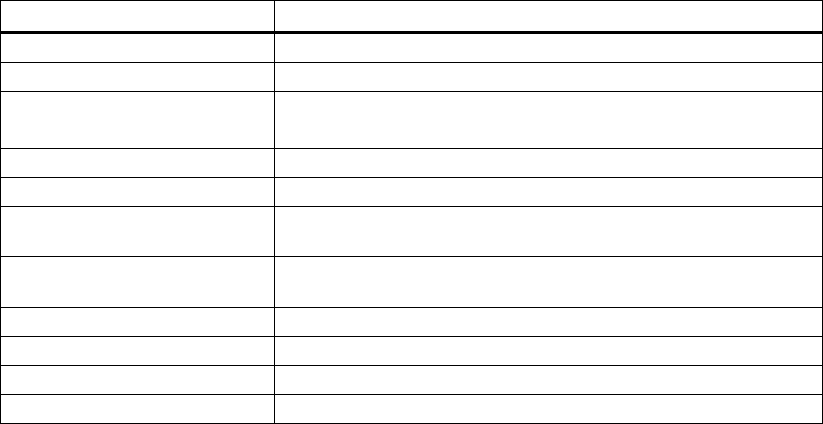
SIMATIC RF600
System Manual, 05/2012, J31069-D0171-U001-A13-7618 13
Introduction 1
1.1 Preface
Purpose of this document
This system manual contains the information needed to plan and configure the RF600
system.
It is intended both for programming and testing/debugging personnel who commission the
system themselves and connect it with other units (automation systems, further
programming devices), as well as for service and maintenance personnel who install
expansions or carry out fault/error analyses.
Scope of this documentation
This documentation is valid for all supplied variants of the SIMATIC RF600 system and
describes the products supplied as of May 2012. If you are using older firmware versions,
please refer to the 08/2011 edition of the documentation.
Registered trademarks
SIMATIC ® is a registered trademark of the Siemens AG.
History
Edition Comment
11/2005 First edition
03/2006 2nd revised edition
04/2006 3rd revised and extended edition
Details in the technical descriptions were revised.
06/2006 4th revised and extended edition
07/2008 5th revised and extended edition
11/2008 6th revised and extended edition:
new RF620R and RF630R readers
07/2009 7th revised and extended edition:
FCC approval RF620R/RF630R
10/2009 8th revised and expanded edition for multitag mode
12/2009 9th revised and extended edition
06/2010 10th revised and extended edition
09/2010 11th revised edition

Introduction
1.2 Abbreviations and naming conventions
SIMATIC RF600
14 System Manual, 05/2012, J31069-D0171-U001-A13-7618
Edition Comment
08/2011 12th revised and expanded edition
New reader RF640R, new antennas RF640A and RF642A
05/2012 13th revised and extended edition
Declaration of conformity
The EC declaration of conformity and the corresponding documentation are made available
to authorities in accordance with EC directives. Your sales representative can provide these
on request.
Observance of installation guidelines
The installation guidelines and safety instructions given in this documentation must be
followed during commissioning and operation.
1.2 Abbreviations and naming conventions
The following terms/abbreviations are used synonymously in this document:
Read/write device (SLG) Reader
Mobile data memory, MDS, data carrier,
smart label
Transponder, tag
Interface module, ASM Communications module, CM
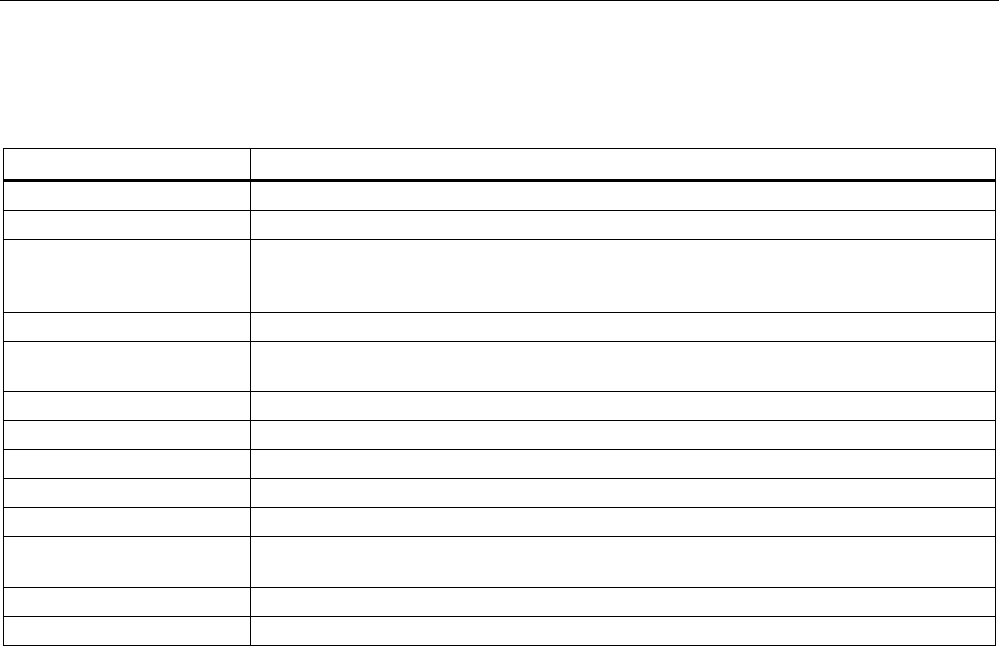
Introduction
1.3 Navigating in the system manual
SIMATIC RF600
System Manual, 05/2012, J31069-D0171-U001-A13-7618 15
1.3 Navigating in the system manual
Structure of contents Contents
Table of contents Organization of the documentation, including the index of pages and sections
Introduction Purpose, layout and description of the important topics.
Safety Information Refers to all the valid technical safety aspects which have to be adhered to while installing,
commissioning and operating the product/system and with reference to statutory
regulations.
System overview Overview of all RF identification systems, system overview of SIMATIC RF600.
RF600 system planning Information about possible applications of SIMATIC RF600, support for application
planning, tools for finding suitable SIMATIC RF600 components.
Readers Description of readers which can be used for SIMATIC RF600.
Antennas Description of antennas which can be used for SIMATIC RF600.
Transponder/tags Description of transponders which can be used for SIMATIC RF600.
Integration into networks Integration of the RF600 reader to higher-level systems, control.
System diagnostics Description of the flash codes and error codes of the reader.
Accessories Connecting cable, wide-range power supply unit, technical data, ordering lists, dimension
drawings
Appendix Service and support, contact partners, training centers.
List of abbreviations List of all abbreviations used in the document.

Introduction
1.3 Navigating in the system manual
SIMATIC RF600
16 System Manual, 05/2012, J31069-D0171-U001-A13-7618
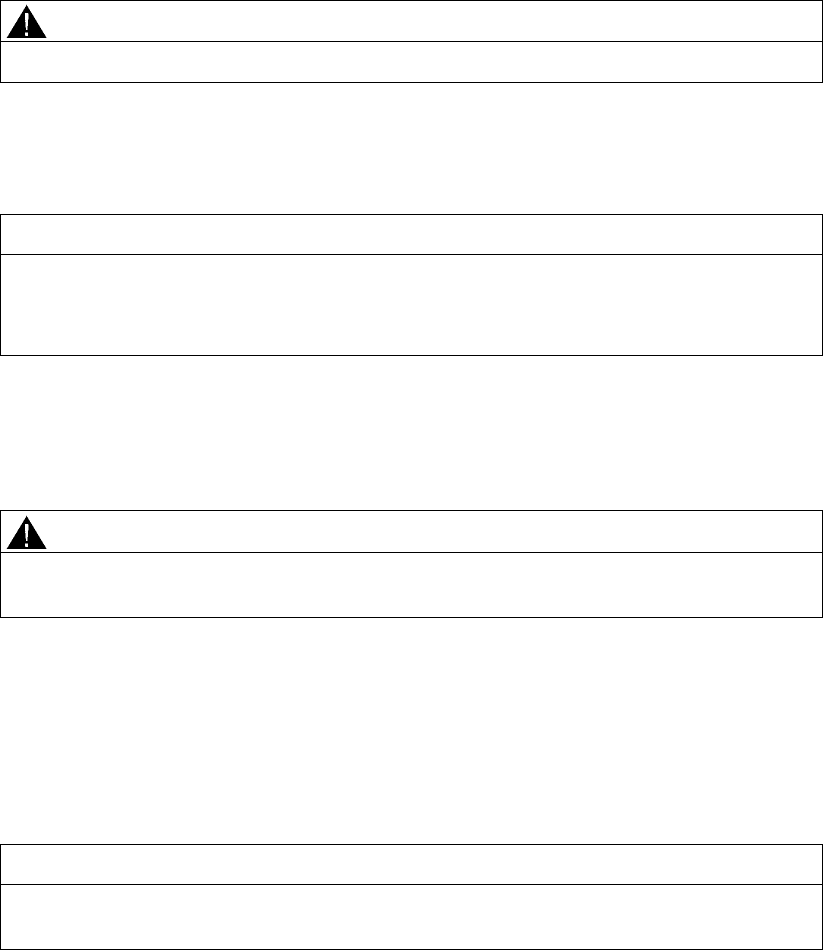
SIMATIC RF600
System Manual, 05/2012, J31069-D0171-U001-A13-7618 17
Safety Information 2
2.1 General safety instructions
CAUTION
Please observe the safety instructions on the back cover of this documentation.
SIMATIC RFID products comply with the salient safety specifications to VDE/DIN, IEC, EN,
UL and CSA. If you have questions about the admissibility of the installation in the
designated environment, please contact your service representative.
CAUTION
Alterations to the devices are not permitted.
Failure to observe this requirement shall constitute a revocation of the radio equipment
approval, CE approval and manufacturer's warranty.
Repairs
Repairs may only be carried out by authorized qualified personnel.
WARNING
Unauthorized opening of and improper repairs to the device may result in substantial
damage to equipment or risk of personal injury to the user.
System expansion
Only install system expansion devices designed for this device. If you install other upgrades,
you may damage the system or violate the safety requirements and regulations for radio
frequency interference suppression. Contact your technical support team or where you
purchased your device to find out which system expansion devices may safely be installed.
CAUTION
If you cause system defects by improperly installing or exchanging system expansion
devices, the warranty becomes void.

Safety Information
2.2 Safety instructions for third-party antennas as well as for modifications to the RF600 system
SIMATIC RF600
18 System Manual, 05/2012, J31069-D0171-U001-A13-7618
2.2 Safety instructions for third-party antennas as well as for
modifications to the RF600 system
Always observe the following general safety instructions before selecting a component from
a different vendor:
The manufacturer accepts no responsibility for functional suitability or legal implications for
the installation of third-party components.
NOTICE
Loss of radio equipment approvals
A
lterations to the SIMATIC RF600 devices themselves are not permitted. Failure to observe
this requirement shall constitute a revocation of the CE, FCC, UL, CSA radio equipment
approvals and the manufacturer's warranty.
Modifications to the SIMATIC RF600 system
CAUTION
Damage to the system
If you install unsuitable or unapproved extensions, you may damage the system or violate
the safety requirements and regulations for radio frequency interference suppression.
Contact your technical support team or where you purchased your device to find out which
system extensions may safely be installed.
CAUTION
Loss of warranty
If you cause defects on the SIMATIC RF600 system by improperly installing or exchanging
system expansions, the warranty becomes void.
NOTICE
Loss of validity for type tests and certificates
SIMATIC RFID products comply with the salient safety specifications to VDE/DIN, IEC, EN,
UL and CSA. When using RFID components which do not belong to the RF600 range of
products, the validity of all type tests as well as all certificates relevant to the RF600 are
canceled: CE, FCC, UL, CSA.
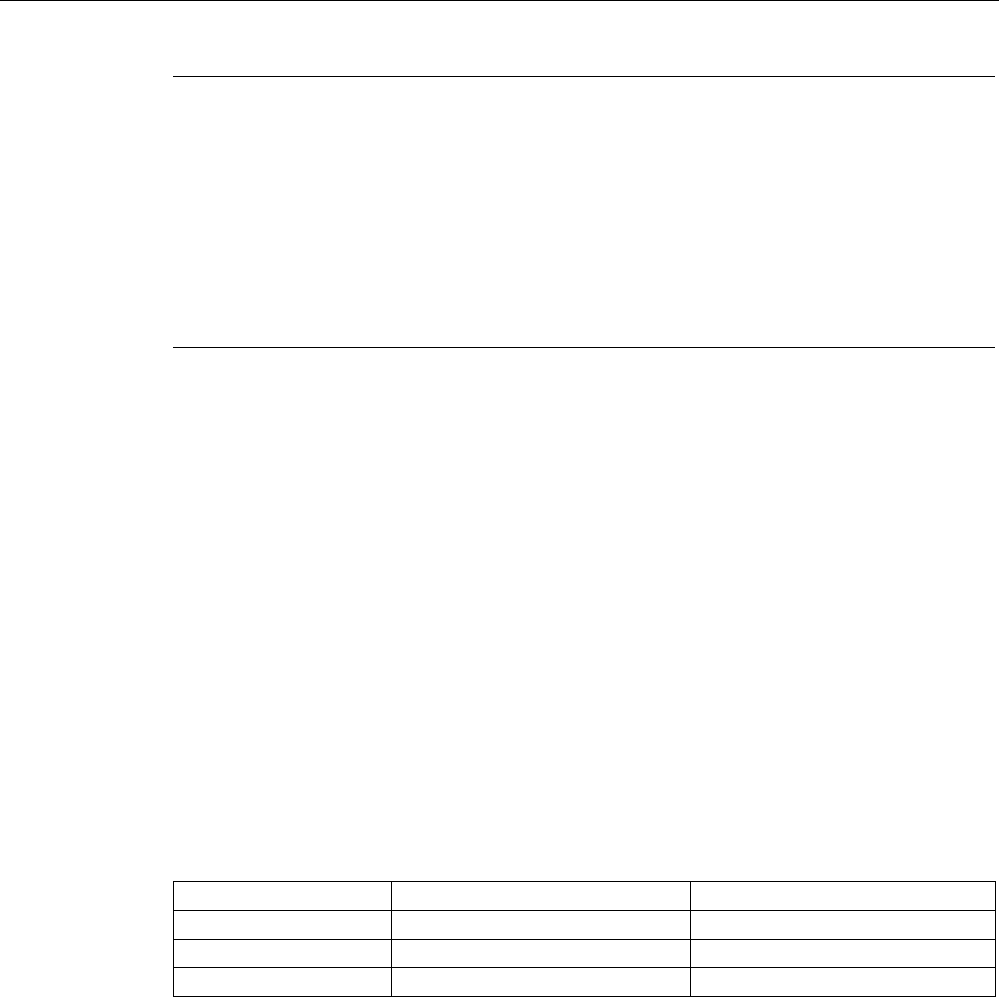
Safety Information
2.3 Safety distance to transmitter antenna
SIMATIC RF600
System Manual, 05/2012, J31069-D0171-U001-A13-7618 19
Note
User responsibility for modified product
As a user of the modified product, you accept responsibility for use of the complete RFID
product comprising both SIMATIC RF600 components and third-party RFID components.
This particularly applies to modification or replacement of:
• Antennas
• Antenna cables
• readers
• Power supply units with connection cables
2.3 Safety distance to transmitter antenna
2.3.1 Safety distance between transmitter antenna and personnel
For antenna configurations where it is possible to be briefly or constantly within the
transmission range of the antennas, as in loading ramps, for example, minimum distances
must be maintained.
Limits
The ICRP (International Commission of Radiological Protection) has worked out limit values
for human exposure to HF fields that are also recommended by the ICNIRP (International
Commission of Non Ionizing Radiological Protection). In German legislation on emissions
(since 1997), the following limit values apply. These can vary according to frequency:
Frequency f [MHz] Electrical field strength E [V/m] Magnetic field strength H [A/m]
10 - 400 27,5 0,073
400 - 2.000 1.375 x f1/2 0.0037 x f1/2
2.000 - 300.000 61 0,16
The limit values for the 900 MHz reader antenna alternating field are thus:
Electrical field strength: E = 41.25 V/m
Magnetic field strength: H = 0.111 A/m
HF power density: E x H = 4.57 W/m2
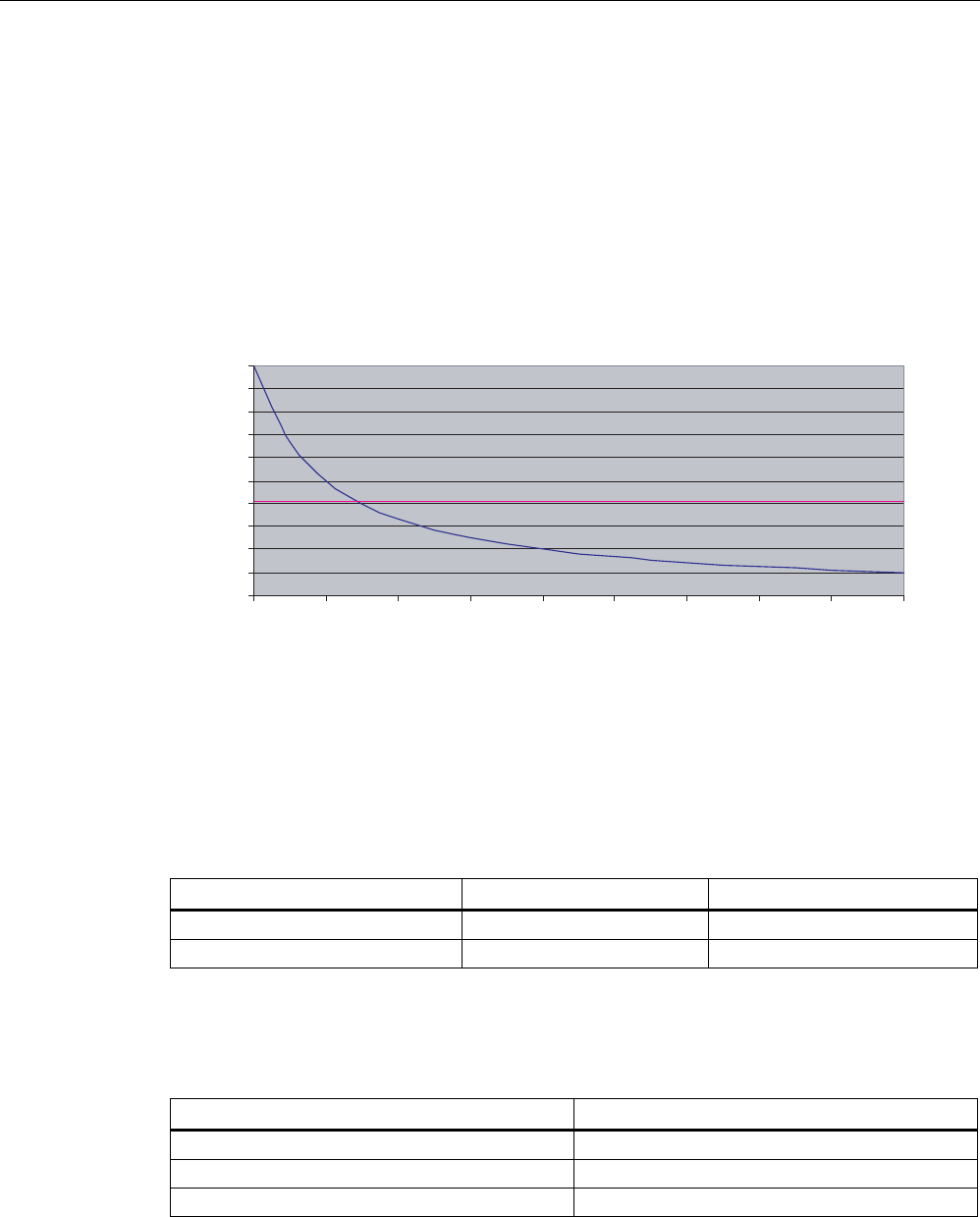
Safety Information
2.3 Safety distance to transmitter antenna
SIMATIC RF600
20 System Manual, 05/2012, J31069-D0171-U001-A13-7618
2.3.2 Minimum distance to antenna in accordance with ETSI
Minimum distance to antenna in accordance with ETSI (EU, EFTA, Turkey)
At a transmission frequency of 900 MHz, the wavelength of the electromagnetic wave λ is
approximately 0.34 m. For distances less than 1 λ in the near field, the electrical field
strength (1/r) diminishes exponentially to the power three over distance, and for distances
greater than 1 λ, it diminishes exponentially to the power two over distance.
0
10
20
30
40
50
60
70
80
90
100
0,1 0,2 0,3 0,4 0,5 0,6 0,7 0.8 0.9 1
(OHFWULFDOILHOGVWUHQJWKDWDGLVWDQFHIURPWKH7;DQWHQQDIRU3 :(53
'LVWDQFHP
)LHOGVWUHQJWK9P
The horizontal line at 41.25V/m marks the "safety limit value".
For the maximum permissible transmit power (1/r2) in accordance with ETSI (2W ERP), the
"safety distance" d = 0.24 m. This means that personnel should not remain closer than 24cm
to the transmitter antenna for extended periods (more than several hours without
interruption). Remaining within the vicinity of the antenna for a brief period, even for repeated
periods (at a distance < 0.24 m), is harmless according to current knowledge.
Distance to transmitter antenna [m] Feld strength [V/m] % of limit value
1 10 24
5 2 5
If the transmitter power is set lower than the highest permissible value (2 watts ERP), the
"safety distance" reduces correspondingly.
The values for this are as follows:
Radiated power ERP [W] Safety distance to transmitter antenna [m]
2.0 0.24
1.0 0.17
0.5 0.12
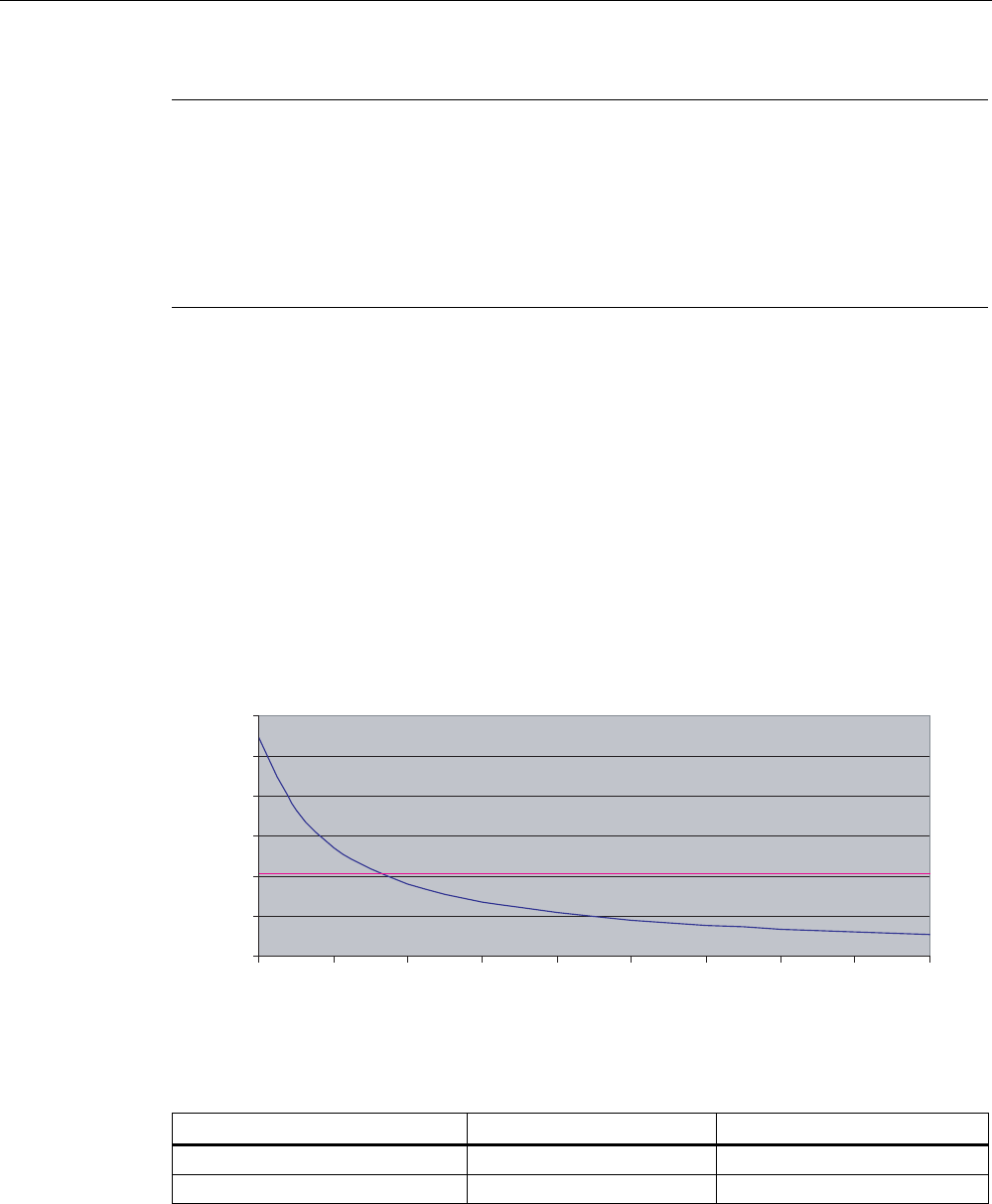
Safety Information
2.3 Safety distance to transmitter antenna
SIMATIC RF600
System Manual, 05/2012, J31069-D0171-U001-A13-7618 21
Note
Reduced maximum radiated power with RF620R/RF630R readers
The SIMATIC RF620R (ETSI) reader has a maximum radiated power of 0.5 W ERP. The
maximum safety distance is therefore 0.12 m.
The SIMATIC RF630R (ETSI) reader has a maximum transmitter power of 0.5 W. The
radiated power therefore depends on the antenna cable and the type of antenna used, but
must not exceed the 2 W ERP.
2.3.3 Minimum distance to antenna in accordance with FCC (USA)
Minimum distance to antenna in accordance with FCC (USA)
For the maximum permissible radiated power in accordance with FCC (4W EIRP), the
"safety distance" d = 0.26 m. This means that personnel should not remain closer than 26
cm to the transmitter antenna for extended periods (several hours without interruption).
Remaining within the vicinity of the antenna for brief period, even repeated periods (at a
distance < 0.26 m) is harmless to health according to current knowledge.
0
20
40
60
80
100
120
0.1 0.2 0.3 0.4 0.5 0.6 0.7 0.8 0.9 1
(OHFWULFDOILHOGVWUHQJWKDWDGLVWDQFHIURPWKH7;DQWHQQDIRU3 :(,53
'LVWDQFHP
)LHOGVWUHQJWK9P
The horizontal line at 41.25 V/m marks the "safety limit value".
Distance to transmitter antenna [m] Feld strength [V/m] % of limit value
1 10.9 26
5 2.2 5.3
If the transmit power is set lower than the highest permissible value (4 watts EIRP), the
"safety distance" reduces correspondingly.
The values for this are as follows:
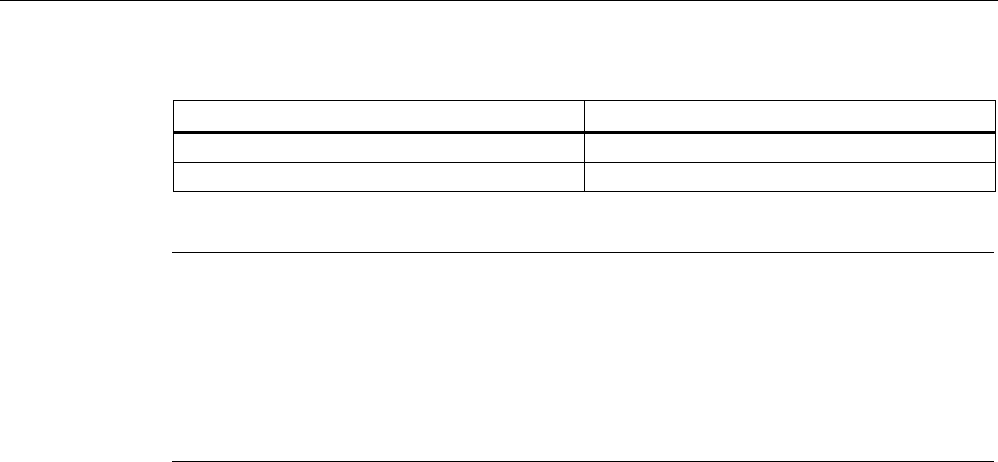
Safety Information
2.3 Safety distance to transmitter antenna
SIMATIC RF600
22 System Manual, 05/2012, J31069-D0171-U001-A13-7618
Radiated power EIRP [W] Safety distance to transmitter antenna [m]
4.0 0.26
<2.5 >0.20
Generally a safety distance of at least 0.2 m must be maintained.
Note
Reduced maximum radiated power with RF620R/RF630R readers
The SIMATIC RF620R (FCC) reader has a maximum transmit power of 0.5 W. Thus the
radiated power of 4 W EIRP cannot be exceeded with the internal antenna.
The SIMATIC RF630R (FCC) reader has a maximum transmit power of 0.5 W. The radiated
power therefore depends on the antenna cable and the type of antenna used, but must not
exceed the 4 W EIRP.
SIMATIC RF600
System Manual, 05/2012, J31069-D0171-U001-A13-7618 23
System overview 3
3.1 RF System SIMATIC RF600
SIMATIC RF600 is an identification system that operates in the UHF range. UHF technology
supports large write/read distances with passive tags.
The SIMATIC RF670R readers (write/read devices), fitted for example on the gates of a
warehouse, automatically record every movement of goods, and signal these to the higher-
level systems. The data are filtered and compressed there by data management software at
the control level in order, for example, to generate the receiving department transaction for
the ERP (Enterprise Resource Planning) system at the business administration control level.
At the same time, the delivery can be automatically checked for correctness and
completeness prior to storage by means of the electronic delivery list.
The general automation and IT structure of a company is shown in the following figure. This
comprises several different levels that are described in detail below.
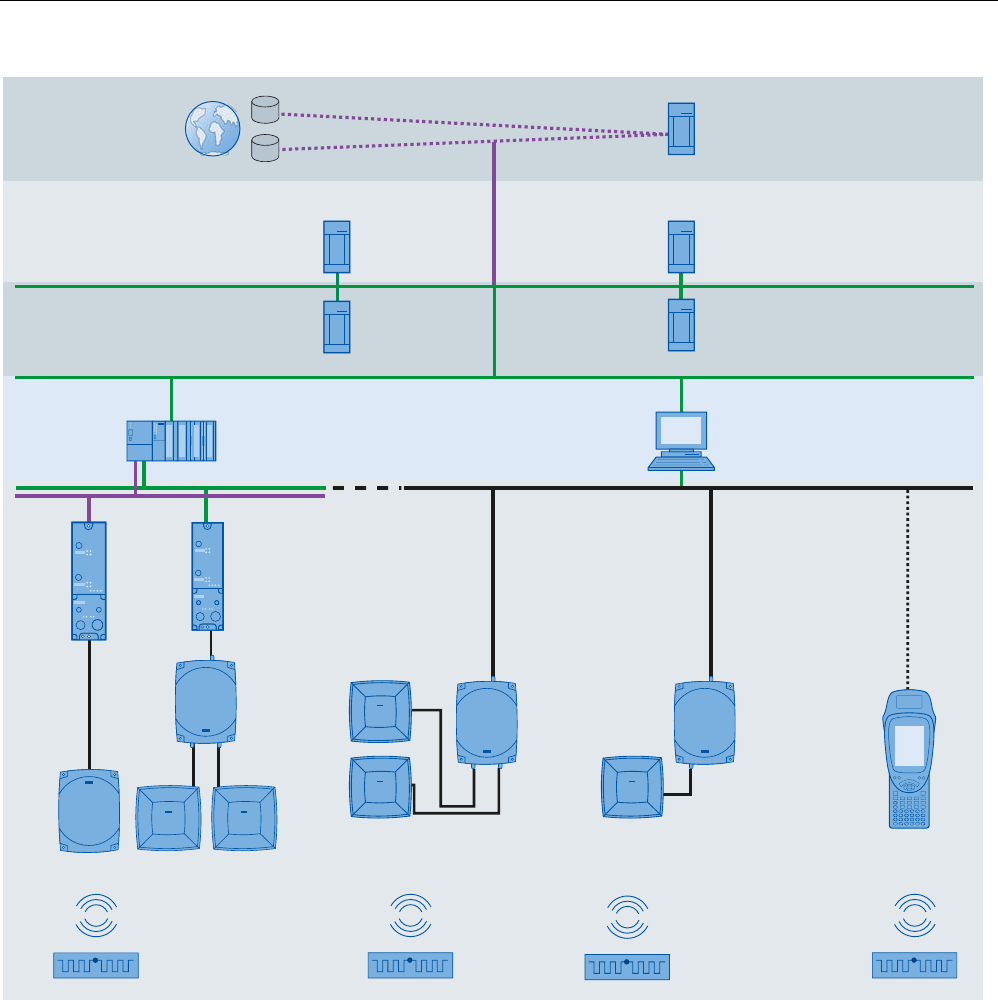
System overview
3.1 RF System SIMATIC RF600
SIMATIC RF600
24 System Manual, 05/2012, J31069-D0171-U001-A13-7618
5)5
5)5
5)5
ONS oder EDI
2EMHFW1DPH6HUYLFH
(OHFWURQLF'DWD,QWHUFKDQJH
Acquisition level
Global Integration
Business administration
control
Production control
SCM
6XSSO\&KDLQ
0DQDJHPHQW
MES
0DQXIDFWXULQJ
([HFXWLRQ6\VWHP
WMS
:DUHKRXVH
0DQDJHPHQW6\VWHP
ERP
(QWHUSULVH5HVRXUFH
3ODQQLQJ
RFID Data & Device
Management
6,0$7,&5)0$1$*(5
mobile handheld
terminals
6,0$7,&5)0
SPS
6,0$7,&6
Stationary
read/write devices
6,0$7,&
5)55)5
Control level
Stationary
read/write devices
6,0$7,&5)5
5)5
Stationary
read/write devices
6,0$7,&5)5
Figure 3-1 System overview of SIMATIC RF600
● Acquisition level
This level contains the RFID readers that read the appropriate tag data and transfer them
to the next highest level.
● Control level
At the control level , the RFID data are collected, preprocessed and presented to the
production control and business administration control levels for further processing.

System overview
3.1 RF System SIMATIC RF600
SIMATIC RF600
System Manual, 05/2012, J31069-D0171-U001-A13-7618 25
● Production control
The Manufacturing Execution System (MES) closes the gap between the data that arise
in the automation environment (control level) and the logistical and commercial processes
of the company (business administration control). MES solutions are used, for example,
for defining and performing production processes.
● Business administration control
This level covers planning and control of the equipment used. For this purpose,
Enterprise Resource Planning (ERP) systems and Supply Chain Management (SCM)
systems are used with modules for cost accounting, financial bookkeeping and personnel
management.
● Global integration
Product information can be exchanged here at an inter-company level. This can be
performed over the Internet with the help of special services.
3.1.1 Application areas of RF600
RFID (radio frequency identification) permits interruption-free tracking and documentation of
all delivered, stocked and shipped goods in the incoming goods, warehouse, production
logistics and distribution departments. A small data medium - referred to as SmartLabel,
transponder or tag - is attached to every item, package or pallet, and contains all important
information. The data medium receives the power it requires via an antenna which is also
used for data transmission.
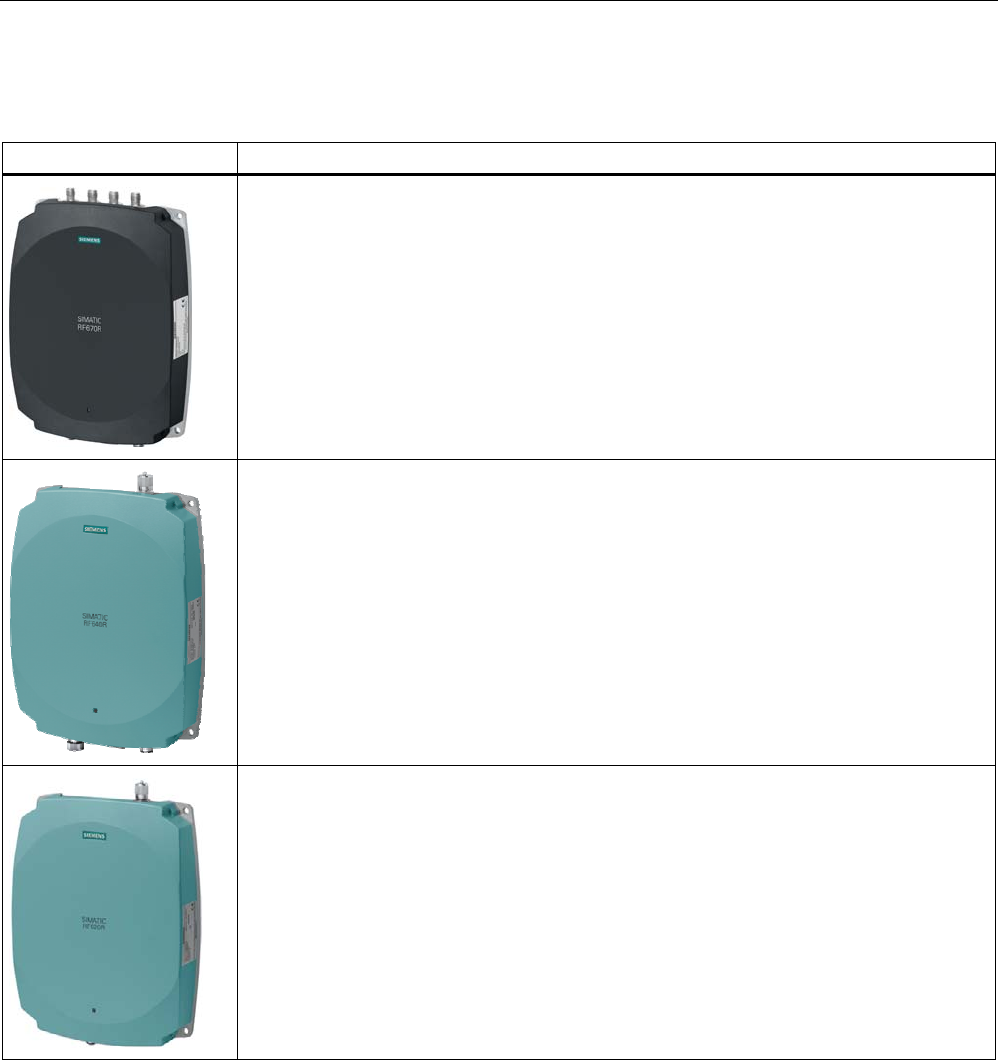
System overview
3.1 RF System SIMATIC RF600
SIMATIC RF600
26 System Manual, 05/2012, J31069-D0171-U001-A13-7618
3.1.2 System components (hardware/software)
RF600 products Description
Due to its compact format and high degree of protection, the RF670R reader is ideally suited
to applications in production logistics and distribution. The integrated data processing makes
it easier to use in complex scenarios and reduces the IT integration costs. Integration is
performed using an XML protocol, TCP/IP and Ethernet.
Due to its compact format and high degree of protection, the RF640R reader is ideally suited
to applications in production logistics and distribution. The integrated data processing makes
it easier to use in complex scenarios and reduces the IT integration costs. Integration is
performed using an XML protocol, TCP/IP and Ethernet. It has an integrated circular
polarized antenna.
The RF620R reader creates with its connection to a SIMATIC controller optimum
preconditions for production-related application scenarios and/or production-related logistics
applications by RFID. It has an integrated circular polarized antenna.
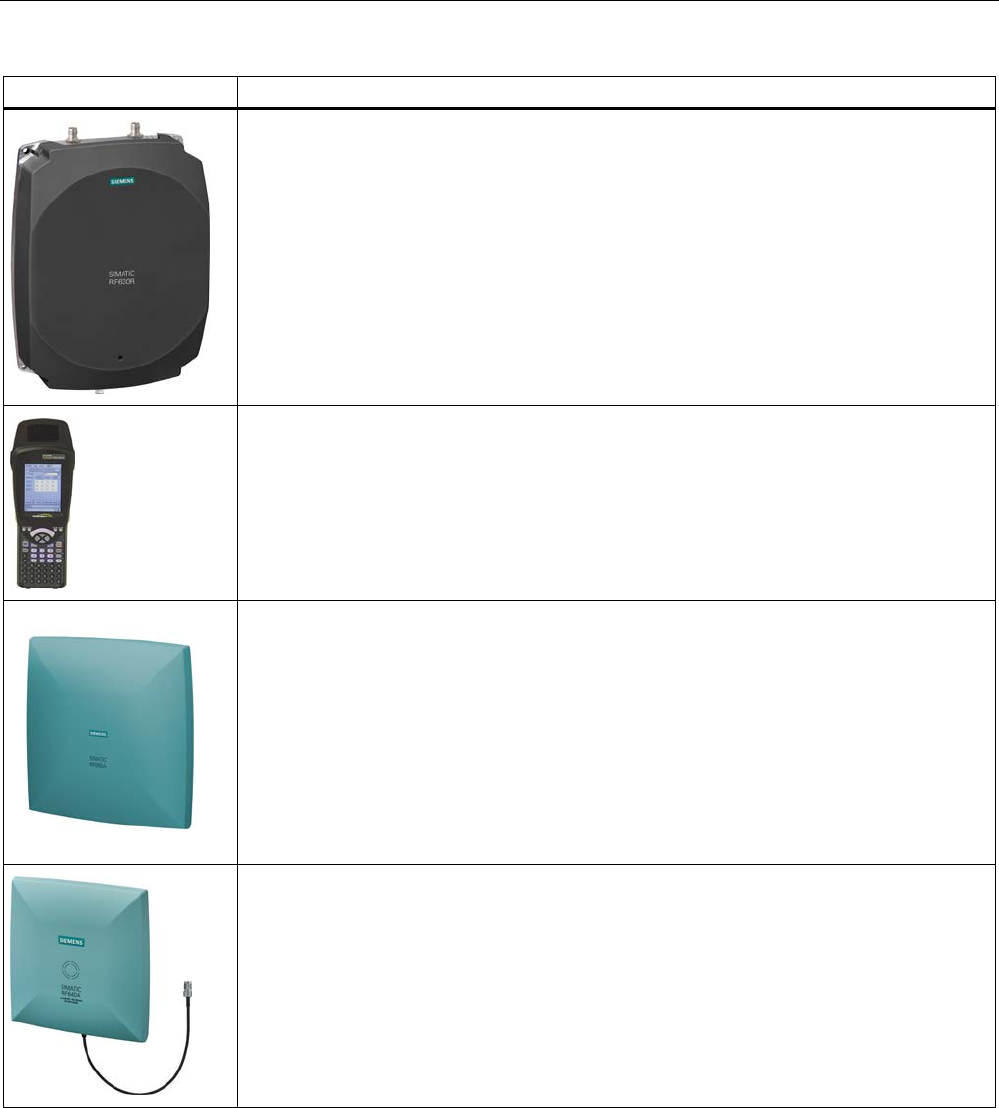
System overview
3.1 RF System SIMATIC RF600
SIMATIC RF600
System Manual, 05/2012, J31069-D0171-U001-A13-7618 27
RF600 products Description
The RF630R reader creates with its connection to a SIMATIC controller optimum
preconditions for production-related application scenarios and/or production-related logistics
applications by RFID. It has 2 connections for external antennas.
SIMATIC RF680M expands the RF600 RF identification system with a powerful mobile
reader for applications in the areas of logistics, production and service. In addition, it is an
indispensable aid for startup and testing.
Also the RF660A antennas are equipped for the harsh conditions in production and logistics
environments due to their high IP67 degree of protection.
Up to 4 antennas can be connected to the RF670R reader depending on the application and
up to two can be connected to the RF630R reader. One antenna can be connected to the
RF640R or RF620R readers as an alternative to the internal antenna.
The SIMATIC RF640A is a circular antenna of medium size for universal applications, for
example material flow and logistics systems.
Depending on the application, up to 4 antennas can be connected to the RF670R reader and
up to two antennas can be connected to the RF630R reader. One antenna can be connected
to the RF640R or RF620R reader as an alternative to the internal antenna.
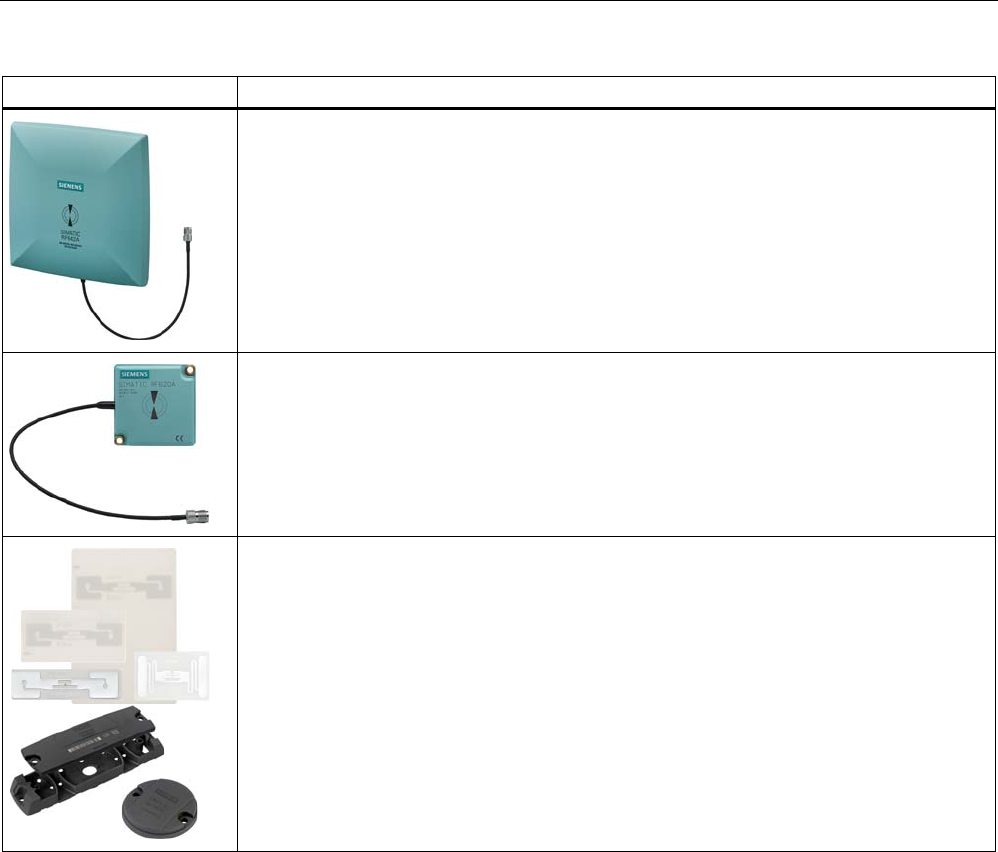
System overview
3.1 RF System SIMATIC RF600
SIMATIC RF600
28 System Manual, 05/2012, J31069-D0171-U001-A13-7618
RF600 products Description
SIMATIC RF642A is a linear antenna of medium size for environments where a lot of metal
occurs.
Depending on the application, up to 4 antennas can be connected to the RF670R reader and
up to two antennas can be connected to the RF630R reader. One antenna can be connected
to the RF640R or RF620R reader as an alternative to the internal antenna.
The SIMATIC RF620A is an antenna of compact, industry-standard design. It is suitable for
UHF transponders with normal (far field) antenna characteristics.
Depending on the application, up to 4 antennas can be connected to the RF670R reader and
up to two antennas can be connected to the RF630R reader. One antenna can be connected
to the RF640R or RF620R reader as an alternative to the internal antenna.
The RF600 tag family offers the right solution for every application:
The RF640T tool tag for industrial requirements is highly resistant to oils and can be directly
mounted on metal.
The RF620T container tag for industrial requirements is rugged and highly resistant to
detergents.
The RF630L Smart Labels made of plastic or paper can be used in many different
applications: The application areas range from simple identification such as electronic
barcode replacement/supplementation, through warehouse and distribution logistics, right up
to product identification
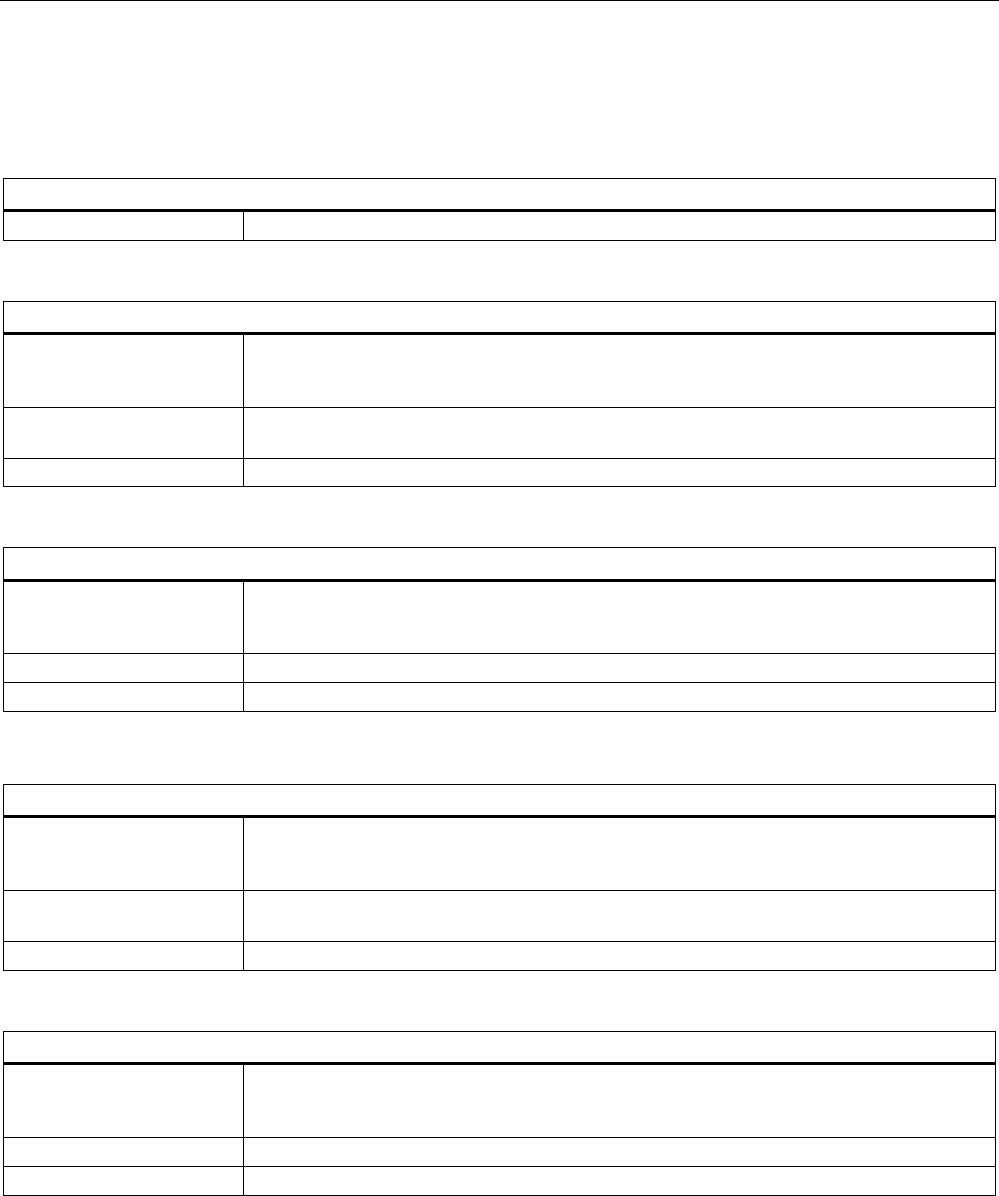
System overview
3.1 RF System SIMATIC RF600
SIMATIC RF600
System Manual, 05/2012, J31069-D0171-U001-A13-7618 29
3.1.3 Features
The RF600 identification system has the following performance features:
RFID system RF600
Type Contactless RFID (Radio Frequency IDentification) system in the UHF band
RF620R reader
Transmission frequency 865-868 MHz (EU, EFTA, Turkey)
902-928 MHz (USA)
920.125 - 924.875 MHz (CHINA)
Writing/reading range Internal antenna: < 2 m
External antenna: < 2.5 m
Standards EPCglobal Class 1, Gen 2
RF630R reader
Transmission frequency 865-868 MHz (EU, EFTA, Turkey)
902-928 MHz (USA)
920.125 - 924.875 MHz (CHINA)
Writing/reading range 0.1 - 2 m
Standards EPCglobal Class 1, Gen 2
RF640R reader
Transmission frequency 865-868 MHz (ETSI: EU; EFTA, Turkey)
902-928 MHz (FCC: USA)
920.125 - 924.875 MHz (CMIIT: CHINA)
Writing/reading range Internal antenna: < 3,5 m
External antenna: < 4 m
Standards EPCglobal Class 1, Gen 2
RF670R reader
Transmission frequency 865-868 MHz (ETSI: EU; EFTA, Turkey)
902-928 MHz (FCC: USA)
920.125 - 924.875 MHz (CMIIT: CHINA)
Writing/reading range < 4 m
Standards EPCglobal Class 1, Gen 2
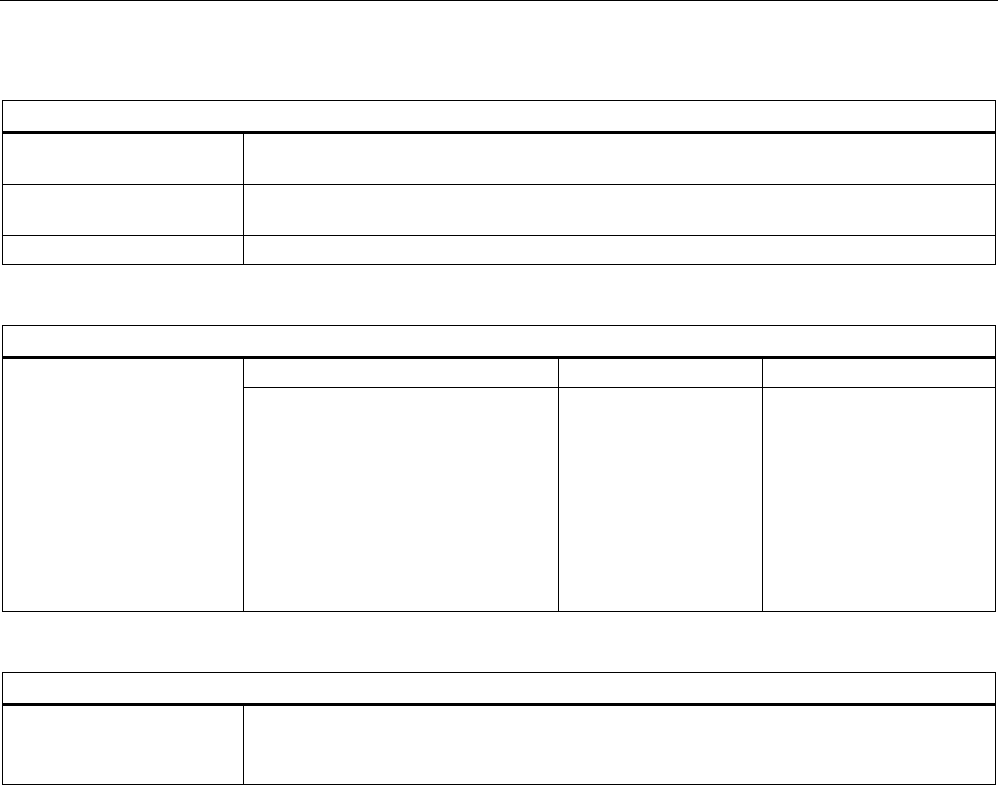
System overview
3.1 RF System SIMATIC RF600
SIMATIC RF600
30 System Manual, 05/2012, J31069-D0171-U001-A13-7618
RF680M mobile handheld terminal
Transmission frequency 865-868 MHz (EU, EFTA, Turkey)
902-928 MHz (USA)
Writing/reading range Europe < 2 m
USA < 1 m
Standards EPCglobal Class 1, Gen 2
Transponder/tags
Tags / Smart Labels Designation Standards supported Version
Smart Labels
Smart Label
ISO card
Container tag
Disc tag
Powertrain tag
Tool tag
Heat-resistant tag
RF630L
RF680L
RF610T
RF620T
RF625T
RF630T
RF640T (Gen 2)
RF680T
EPCglobal Class 1, Gen 2
EPCglobal Class 1, Gen 2
EPCglobal Class 1, Gen 2
EPCglobal Class 1, Gen 2
EPCglobal Class 1, Gen 2
EPCglobal Class 1, Gen 2
EPCglobal Class 1, Gen 2
EPCglobal Class 1, Gen 2
Software
RF-MANAGER Basic V2 PC software for assigning parameters to the RF670R and RF640R readers
System requirement:
Windows XP, SP2 and higher
SIMATIC RF600
System Manual, 05/2012, J31069-D0171-U001-A13-7618 31
RF600 system planning 4
4.1 Overview
You should observe the following criteria for implementation planning:
● Possible system configurations
● Antenna configurations
● Environmental conditions for transponders
● The response of electromagnetic waves in the UHF band
● Regulations applicable to frequency bands
● EMC Directives
4.2 Possible system configurations
The SIMATIC RF600 system is characterized by a high level of standardization of its
components. This means that the system follows the TIA principle throughout: Totally
Integrated Automation. It provides maximum transparency at all levels with its reduced
interface overhead. This ensures optimum interaction between all system components.
The RF600 system with its flexible components offers many possibilities for system
configuration. This chapter shows you how you can use the RF600 components on the basis
of various example scenarios.
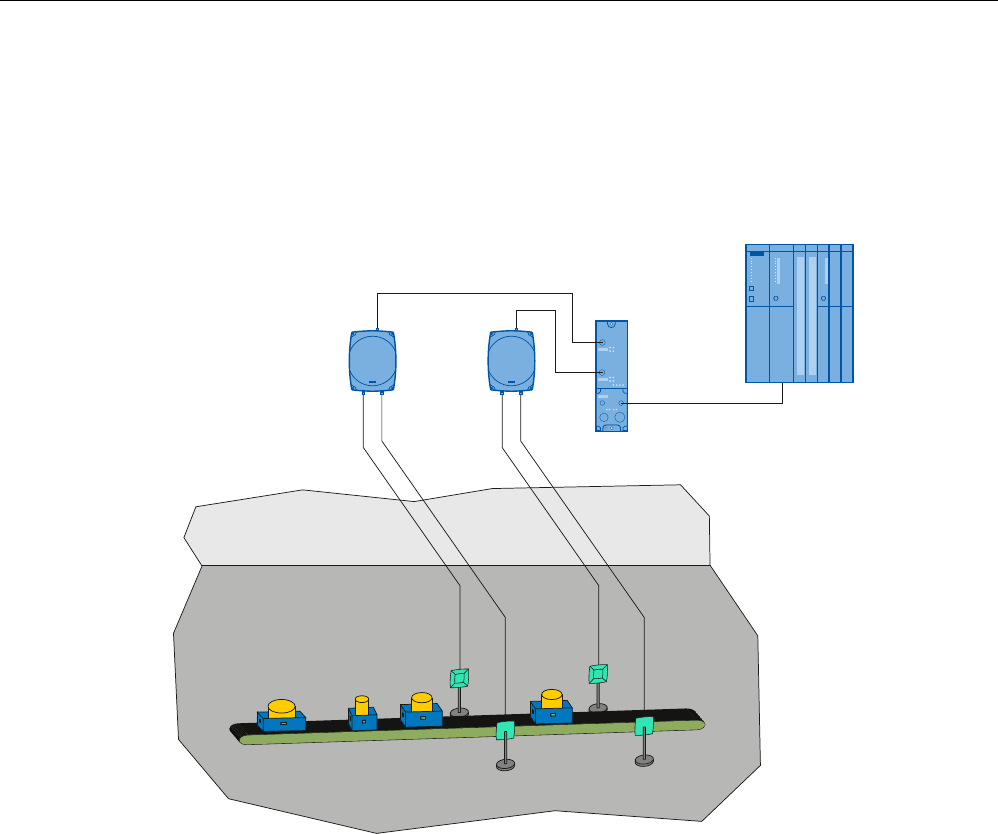
RF600 system planning
4.2 Possible system configurations
SIMATIC RF600
32 System Manual, 05/2012, J31069-D0171-U001-A13-7618
4.2.1 Scenario for material handling control
This scenario shows a possible solution for monitoring and controlling the infeed of material
to a production line. The objective is to provide the right material at the right time. This can
be particularly useful in plants with frequently changing manufacturing scenarios for ensuring
that incorrect infeed and downtimes are minimized.
6,0$7,&6
FRQWUROOHU
5)5 6,0$7,&
5)&
5)5
Features of the scenario
The conveyor moves different transport containers past the readers in an arbitrary alignment.
The RFID tag is, however, always applied to the transport containers with the same
alignment. The tags in this scenario are transponders of type SIMATIC RF620T.
The conveyor has a maximum width of 80 cm in this example. The transport velocity is up to
2 m/s. With this arrangement only a single RFID tag has to be detected each time (single-
tag).
In this scenario a SIMATIC RF630R is used as the reader. Optimum reading reliability is
ensured by two external SIMATIC RF660A antennas in a portal arrangement. Where the
distances to, or between, the materials containers are extremely short the SIMATIC RF620A
is an excellent alternative. The SIMATIC°RF630R reader reads the information from the tags
on the transport containers and transfers it via a communication module to the SIMATIC S7
controller which controls the process in accordance with the tag information.
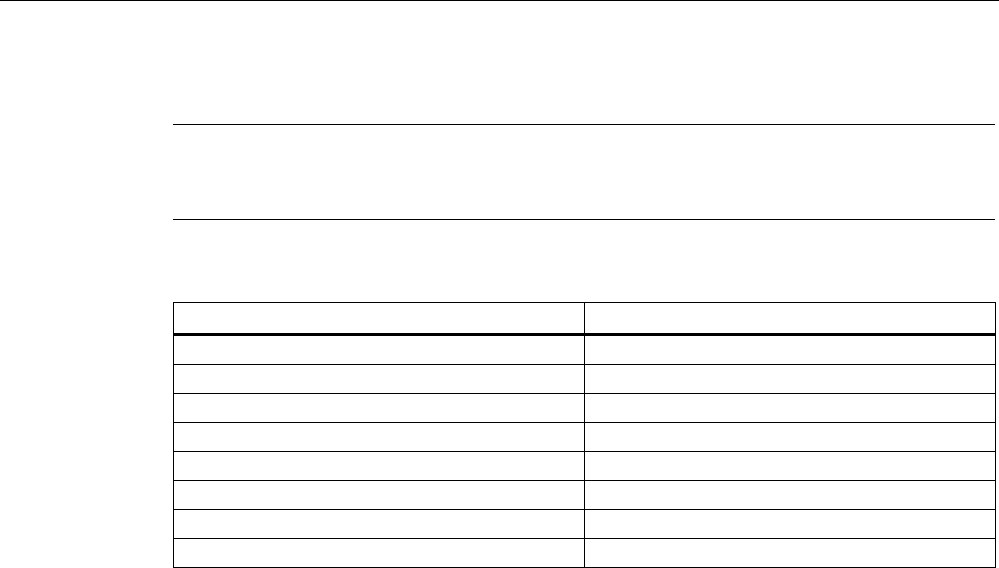
RF600 system planning
4.2 Possible system configurations
SIMATIC RF600
System Manual, 05/2012, J31069-D0171-U001-A13-7618 33
Summary of the features
Note
Note that the following features show sample values for the scenario. The specific data for
your application may deviate from these values.
Feature
Single-tag Yes
Multi-tag No
Read velocity Max. 2 m/s
Orientation of the RFID tag Not defined
Carrier material of the tag Metal or non-metal
Reading range Approx. 1 m
Reader density High
Interference High
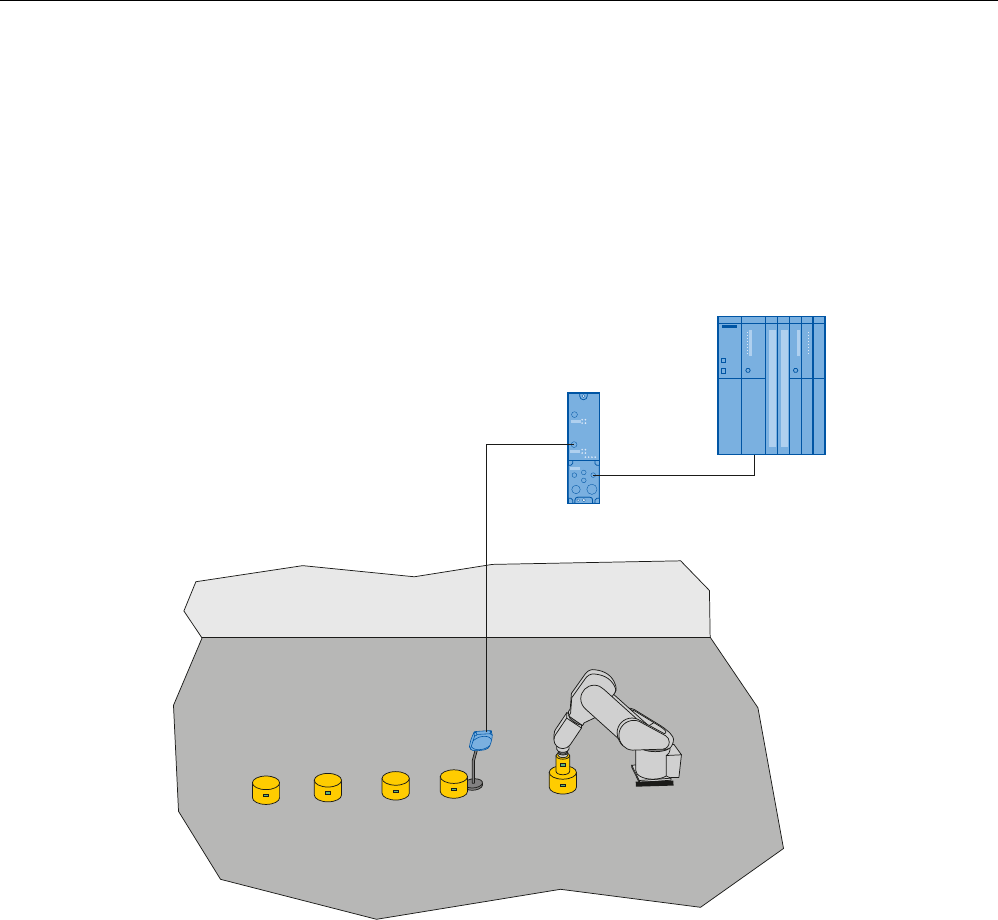
RF600 system planning
4.2 Possible system configurations
SIMATIC RF600
34 System Manual, 05/2012, J31069-D0171-U001-A13-7618
4.2.2 Scenario for workpiece identification
A typical characteristic of modern manufacturing scenarios is their multitude of variations.
The individual data and production steps are stored in the tag of a toolholder or product.
These data are read by the machining stations during a production process and, if
necessary, tagged with status information. This can be used to dynamically identify which
production step is the next in the series. This has the advantage that the production line can
work automatically without the need to access higher system components. The use of RFID
therefore increases the availability of the plant.
6,0$7,&6
FRQWUROOHU
$60
Features of the scenario
RFID tags are attached to workpiece holders. Their spatial orientation is always identical.
With this arrangement, only a single tag has to be detected each time (single-tag). The tags
in this scenario are transponders of type SIMATIC RF640T.
The SIMATIC RF620R reader reads the information from the tags with its integrated antenna
and transfers it to the SIMATIC S7 controller via a communication module. Depending on the
stored tag information, the SIMATIC-S7 performs different control tasks, for example,
automatically providing a suitable tool for an industrial robot at the correct time.
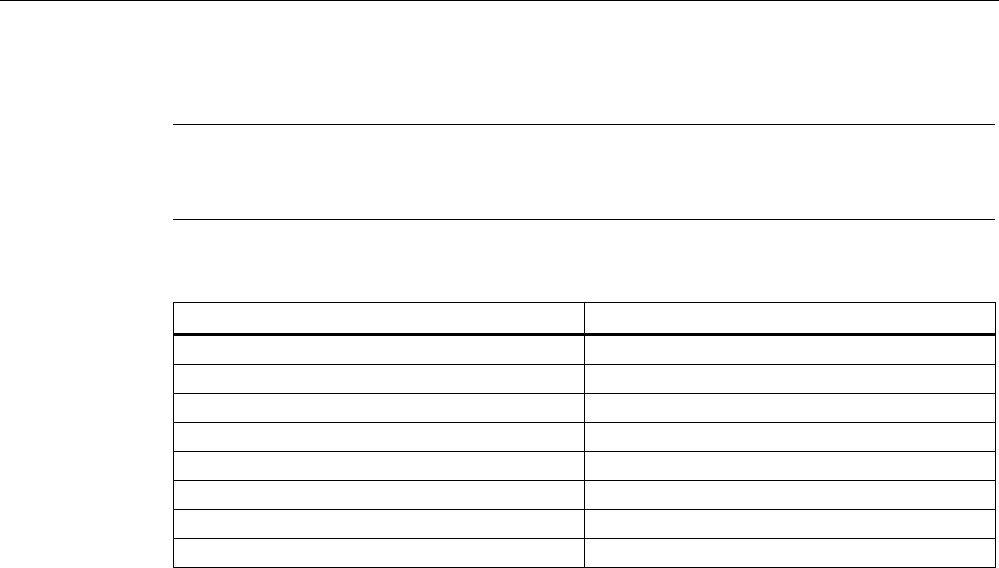
RF600 system planning
4.2 Possible system configurations
SIMATIC RF600
System Manual, 05/2012, J31069-D0171-U001-A13-7618 35
Summary of the features
Note
Note that the following features show sample values for the scenario. The specific data for
your application may deviate from these values.
Features
Single-tag Yes
Multi-tag No
Reading velocity Not applicable
Orientation of the RFID tag Same alignment for all the tags
Carrier material of the tag Metal
Reading distance Approx. 1 m
Reader density High
Interference High
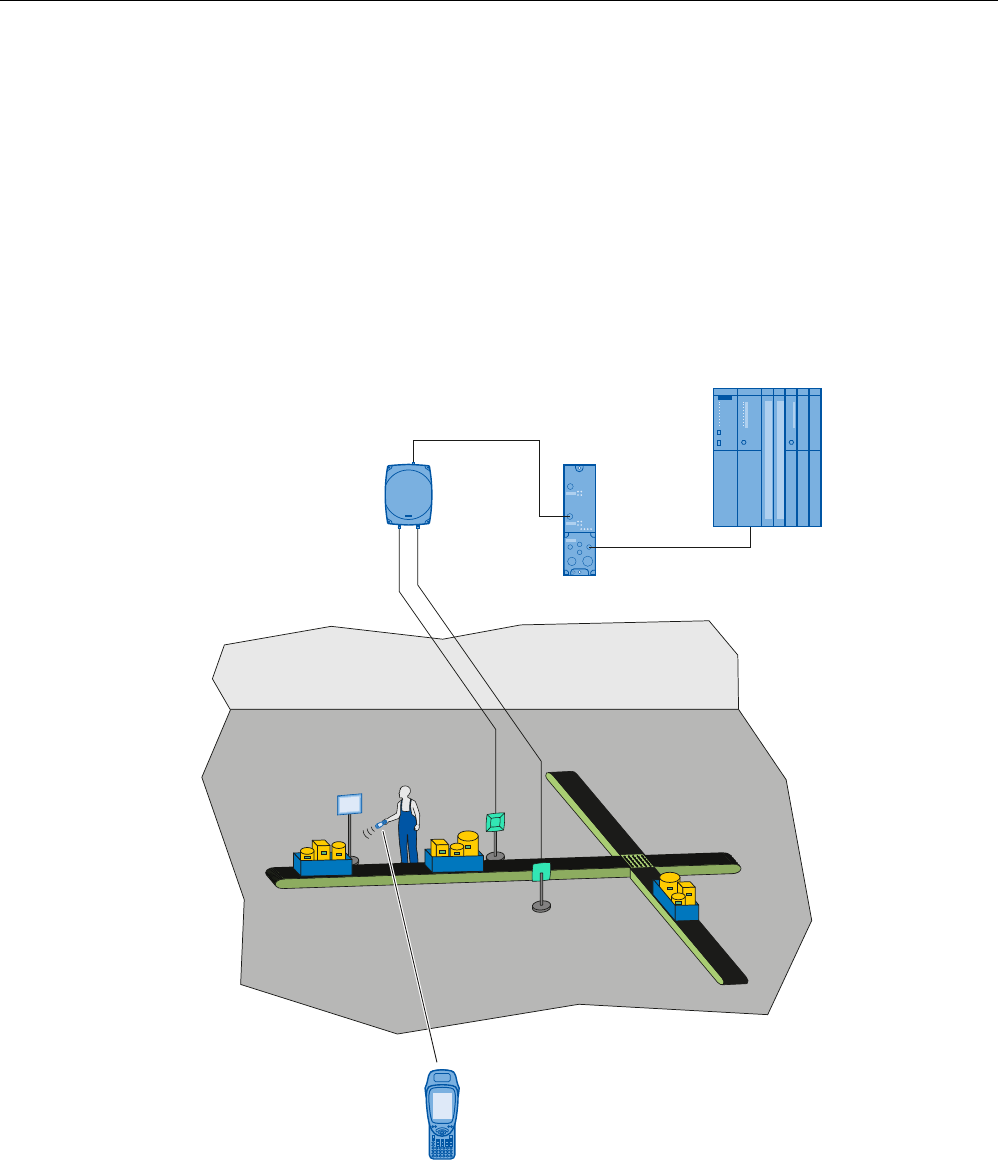
RF600 system planning
4.2 Possible system configurations
SIMATIC RF600
36 System Manual, 05/2012, J31069-D0171-U001-A13-7618
4.2.3 Scenario for Intra logistics
Intra logistics comprises all logistical procedures that are required on a production site as
well as within the overall company. The main task of Intra logistics is to control the
subsequent processes:
● Transporting goods from the incoming goods bay into the warehouse
● Management of stock
● Conveyance of goods from the warehouse for production
● Order picking
● Packing
6,0$7,&6
FRQWUROOHU
+DQGKHOGWHUPLQDO
5)0
$605)5
Features of the scenario
In this example scenario. items must be distributed to the correct storage location in a
transport container via a separating filter. The RFID tags of type SIMATIC RF630L are
directly attached to the item. The maximum transport velocity of the conveyor is 2 m/s.
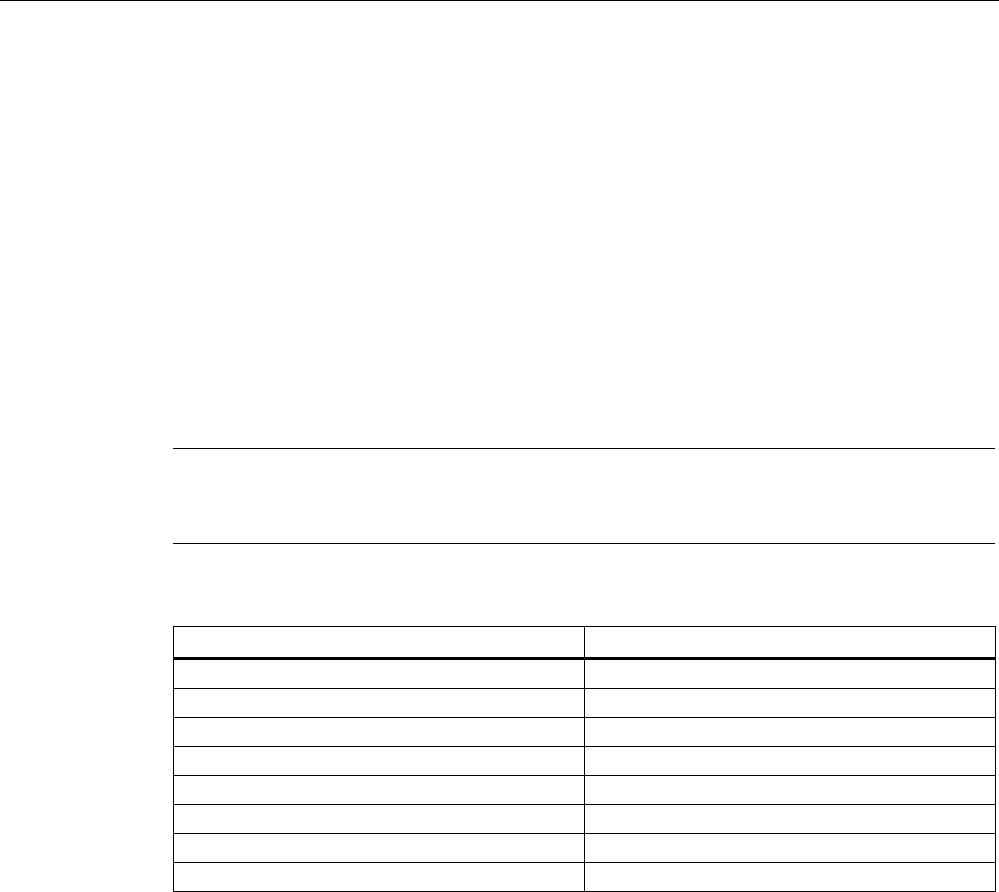
RF600 system planning
4.2 Possible system configurations
SIMATIC RF600
System Manual, 05/2012, J31069-D0171-U001-A13-7618 37
In this scenario, bulk acquisition is necessary because several objects must be detected at
the same time.
The SIMATIC RF630R reader uses two external antennas in a portal arrangement to read
the information from the tags on the passing items and transfers it to the SIMATIC S7
controller via a communication module. The SIMATIC S7 controls the separating filter of the
conveyor system depending on the tag information.
If only one simple evaluation of the tag ID is required, and the data will not undergo further
processing, the SIMATIC RF670R offers this function without interfacing to the controller.
The SIMATIC RF680M mobile handheld terminal is used in this example for additional
analysis and visualization of the item data directly on site.
Summary of the features
Note
Note that the following features show sample values for the scenario. The specific data for
your application may deviate from these values.
Features
Single-tag Yes
Multi-tag No
Reading velocity Max. 2 m/s
Orientation of the RFID tag Same alignment for all the tags
Carrier material of the tag Metal
Reading range Approx. 1 m
Reader density High
Interference High
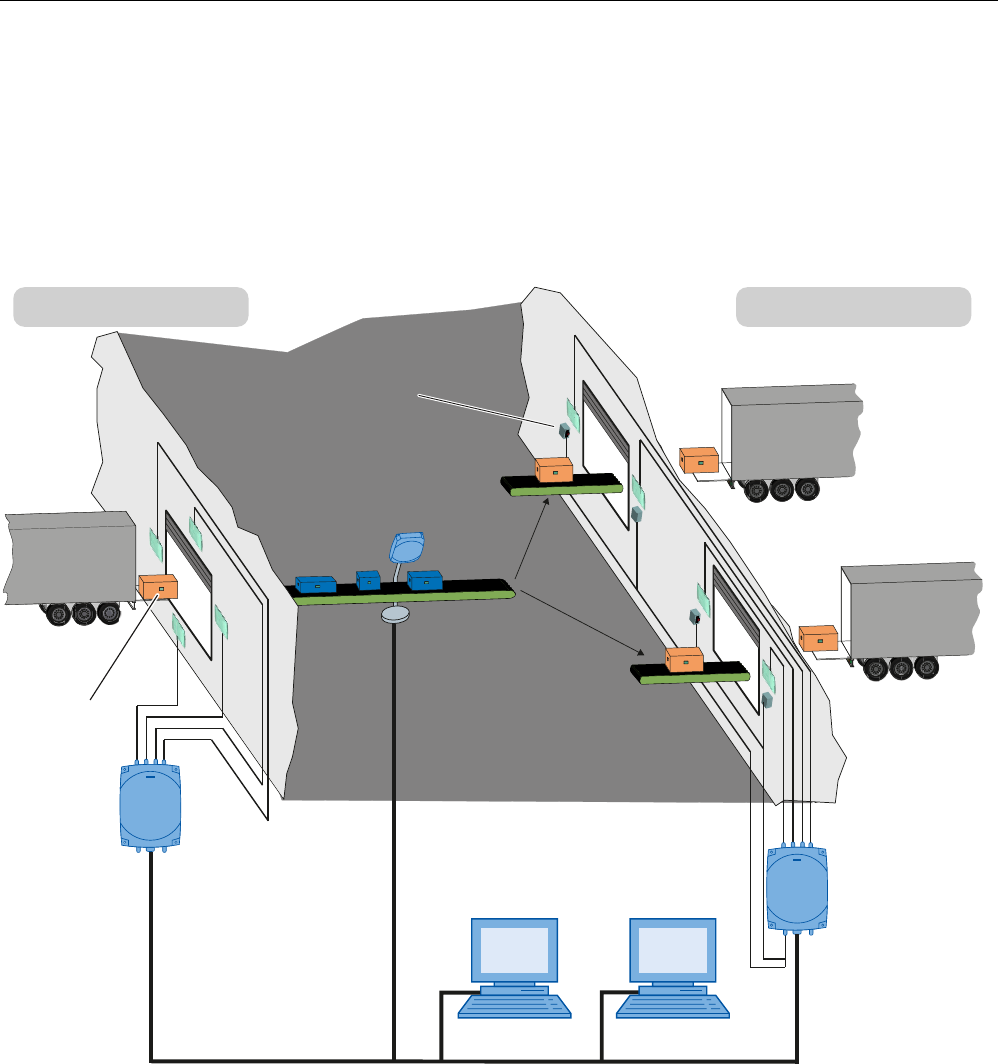
RF600 system planning
4.2 Possible system configurations
SIMATIC RF600
38 System Manual, 05/2012, J31069-D0171-U001-A13-7618
4.2.4 Scenario incoming goods, distribution of goods and outgoing goods
The scenario comprises an RFID system with three readers. The SIMATIC RF670R reader
with its four antennas monitors the incoming goods gate of a factory building hall through
which pallets are delivered. Each pallet is fitted with a tag. The tags contain user data that
provides information about the sender and receiver of the goods. This data is read out and
passed on. The goods supplied on the pallets are processed in the factory and then exit the
factory through the outgoing goods gate.
8VHUDSSOLFDWLRQ
/LJKWEDUULHU
2XWJRLQJJRRGV,QFRPLQJJRRGVED\
5)5
5)0$1$*(5%DVLF
5)5
5)5
7DJ
in this example, the SIMATIC RF640R reader is controlled by a light barrier and monitors a
conveyor belt; the conveyor belt transports the goods towards two output gates that are
assigned to different recipients. Each item has a tag that is always fitted at the same position
and with the same alignment on the item. These tags also contain user data that provides
information about the sender and receiver of the goods. There is a separator at the end of
the conveyor belt that determines the output gate to which the goods should be directed. The
separator is set according to the results from the reader and the goods are distributed.
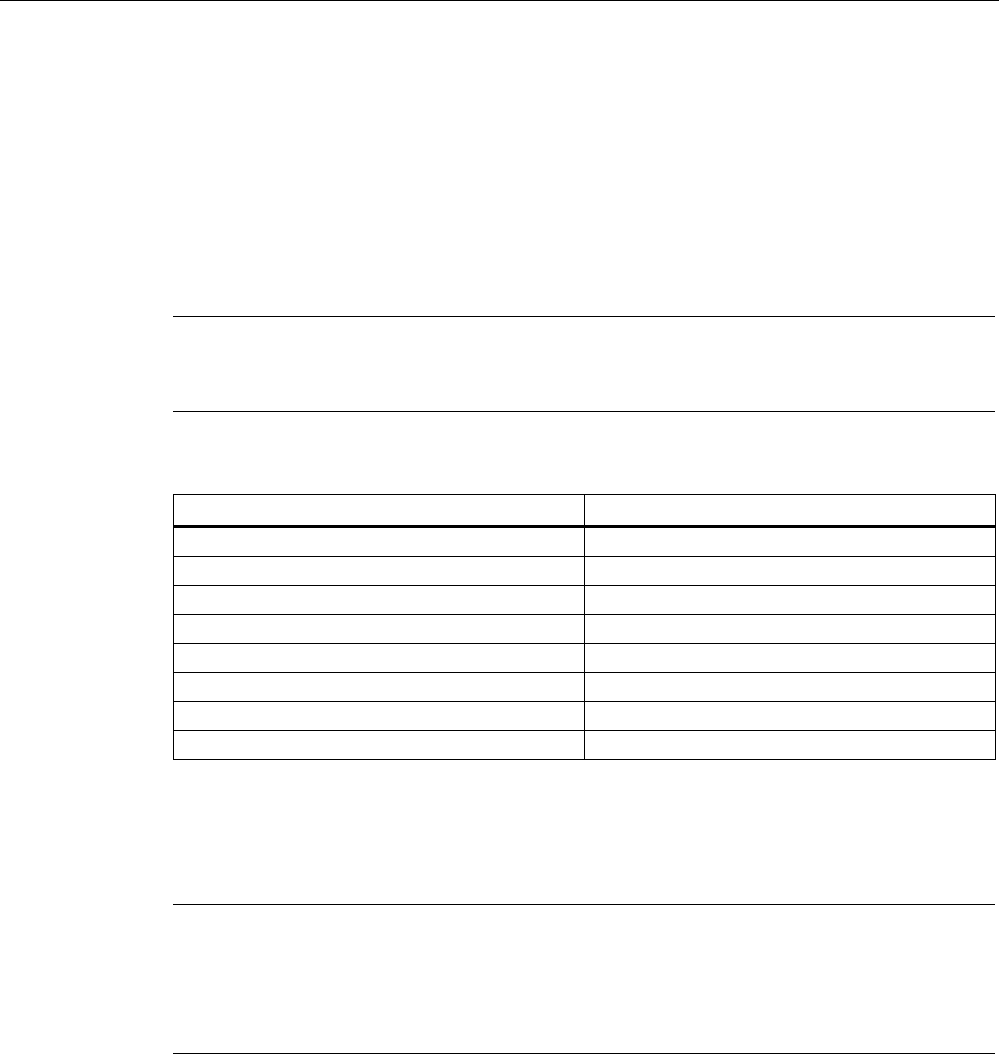
RF600 system planning
4.3 Antenna configurations
SIMATIC RF600
System Manual, 05/2012, J31069-D0171-U001-A13-7618 39
After the separator, the goods are loaded onto pallets - each pallet is fitted with a tag. These
tags also contain user data that provides information about the sender and receiver of the
goods. Based on the data read by the SIMATIC RF670R reader, the pallets at the outgoing
goods gate are checked to make sure that they are intended for the receiver to which the
gate is assigned. Light barriers are installed to control the reader. Depending on the read
results of the reader, the outgoing portal opens, or it remains closed.
Summary of the features
Note
Note that the following features show sample values for the scenario. The specific data for
your application may deviate from these values.
Feature
Single-tag No
Multi-tag Yes
Read velocity 2 m/s
Tag orientation Specified and not specified
Material characteristics Non-metal
Reading ranges Approx. 3.5°m
Reader density High
Interference High
4.3 Antenna configurations
Note
Validity of antenna configuration
The following specifications for the antenna configuration only apply to the RF660A antenna.
See Section Guidelines for selecting RFID UHF antennas (Page 54) for specifications for the
configuration of third-party antennas.
4.3.1 Antenna configuration example
The following diagram shows an application example for an antenna configuration of the
RF670R. The antennas are positioned at the height at which the tags are expected which
are to be identified. The maximum width of the portal that is recommended for reliable
operation is 4 m.
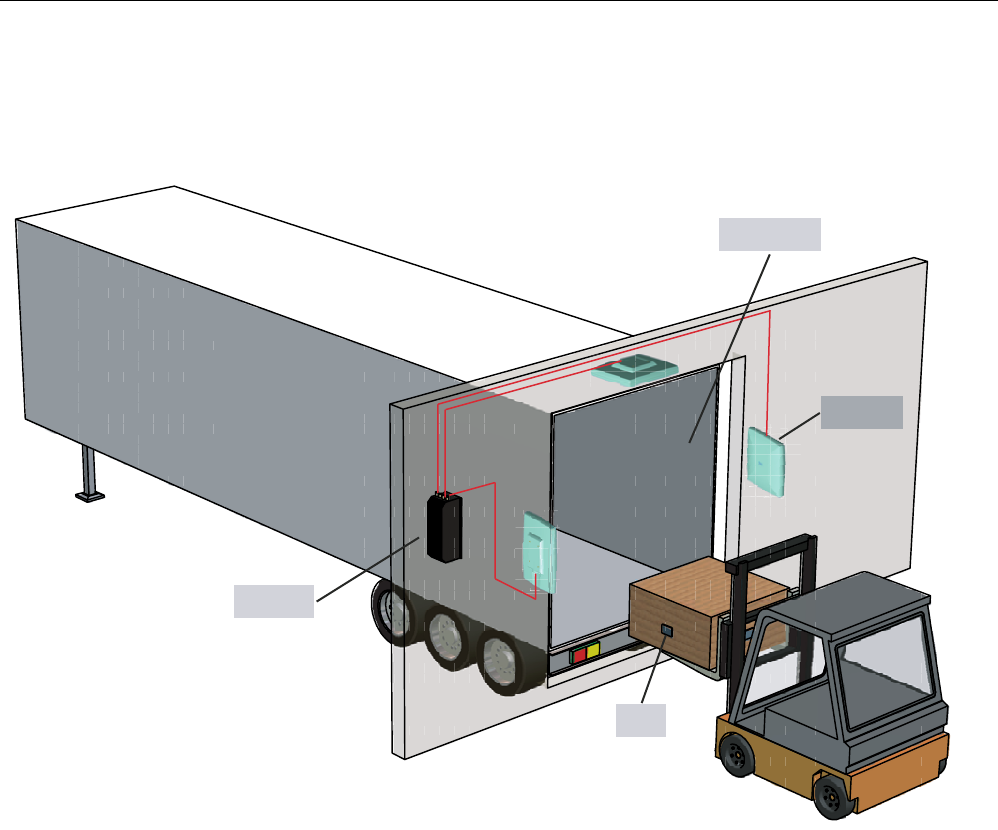
RF600 system planning
4.3 Antenna configurations
SIMATIC RF600
40 System Manual, 05/2012, J31069-D0171-U001-A13-7618
The diagram shows a configuration with three antennas. Up to four antennas can be used
depending on the local conditions.
5HDGHU
$QWHQQD
7DJ
/RDGLQJUDPS
Figure 4-1 Example of an antenna configuration with three antennas
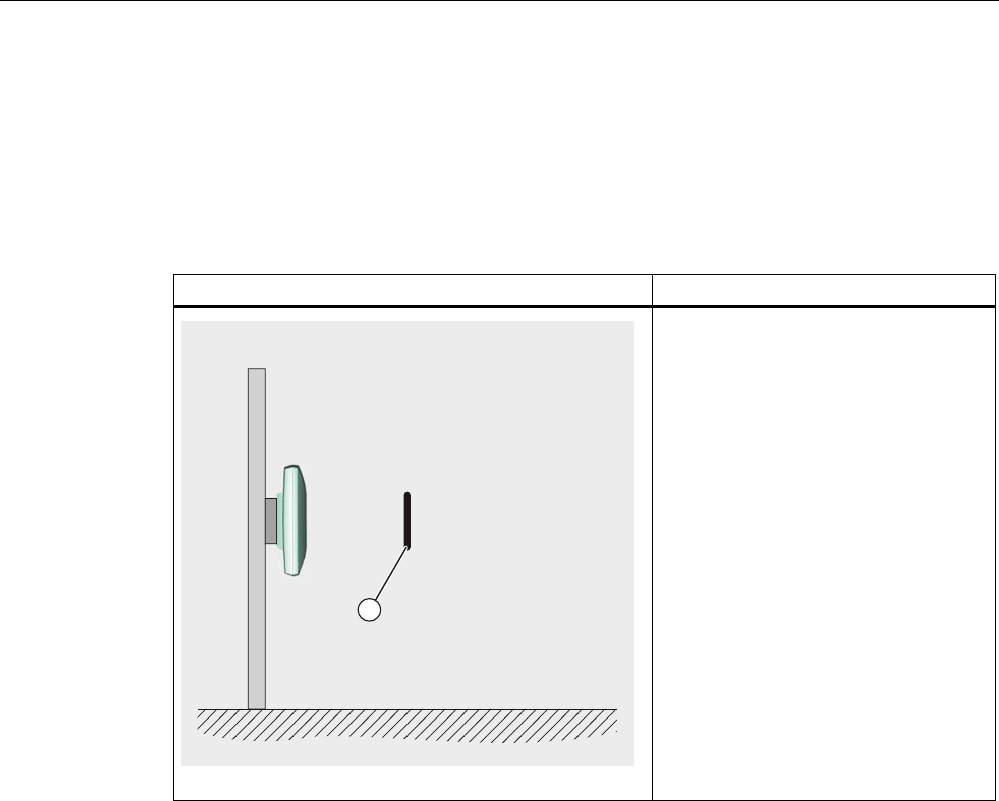
RF600 system planning
4.3 Antenna configurations
SIMATIC RF600
System Manual, 05/2012, J31069-D0171-U001-A13-7618 41
4.3.2 Possibilities and application areas for antenna configurations
Some basic antenna configurations and possible fields of application are shown below. With
the various configurations, please note that up to four external antennas can be connected to
the RF670R reader, up to two can be connected to the RF630R reader and one external
antenna can be connected to the RF640R or RF620R reader. The RF640R and RF620R
readers also have an internal antenna.
Antenna configuration 1 Description/ application areas
This arrangement of antennas is
appropriate when the tags to be read are
only located on one side of the goods to
be acquired, for example, if a conveyor
with passing goods has to be monitored
during production and it is precisely
defined on which side the tags to be read
are attached.
① Tag
This antenna configuration is possible
with the following readers:
• RF670R with one antenna
• RF640R with integrated or with
external antenna
• RF630R with one antenna
• RF620R with integrated or with
external antenna
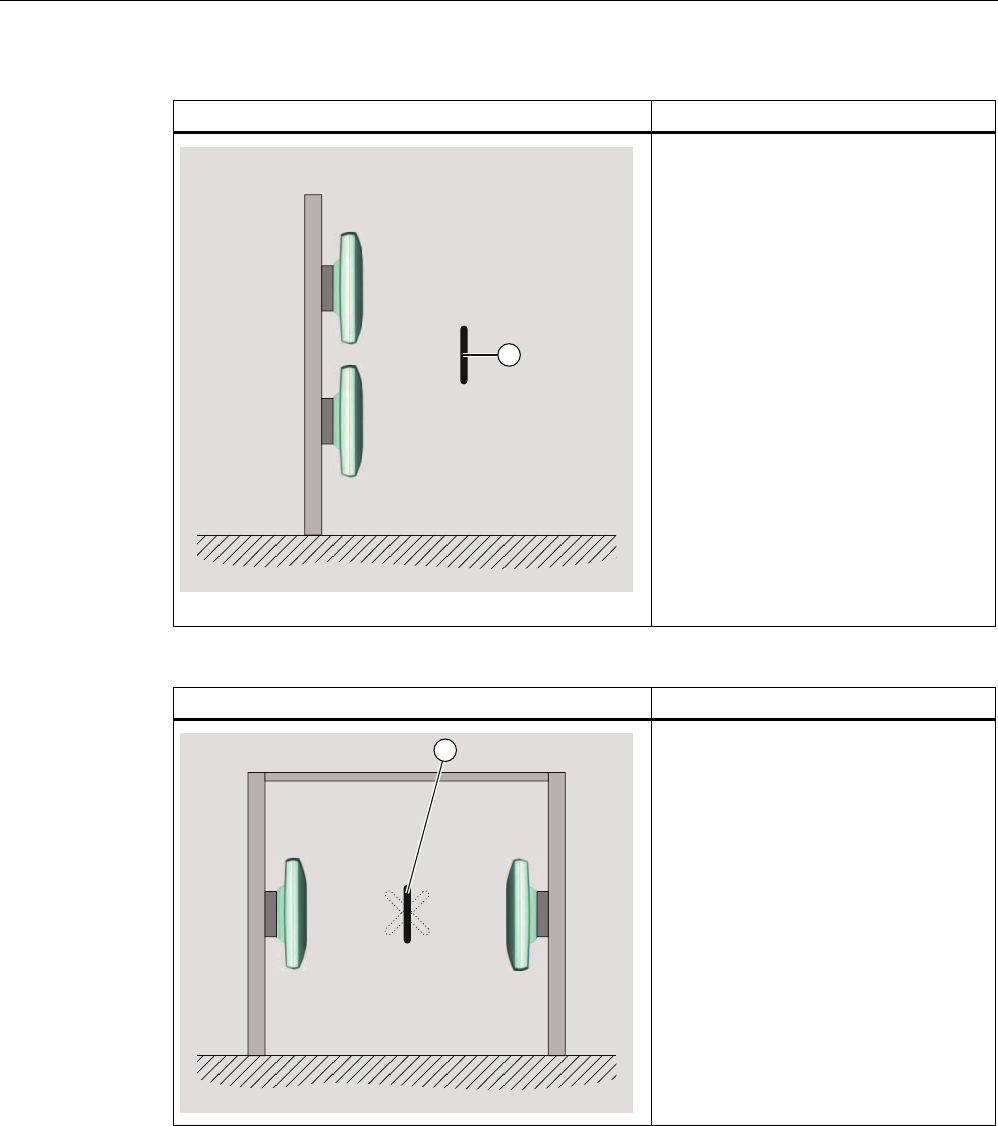
RF600 system planning
4.3 Antenna configurations
SIMATIC RF600
42 System Manual, 05/2012, J31069-D0171-U001-A13-7618
Antenna configuration 2 Description/ application areas
This arrangement of antennas is
appropriate when the tags to be read are
only located on one side of the items to
be identified, e.g. when pallets are to be
identified on which the tags to be read
must be on a prespecified side.
① Tag
This antenna configuration is possible
with the following readers:
• RF670R with two antennas
• RF630R with two antennas
Antenna configuration 3 Description/ application areas
Preferred for the identification of goods
at loading portals: The tag is located in
the field of radiation of two antennas; for
reliable tag reading, the height of the tag
above floor level must therefore be
known with reasonable accuracy.
① Tag
This antenna configuration is possible
with the following readers:
• RF670R with two antennas
• RF630R with two antennas
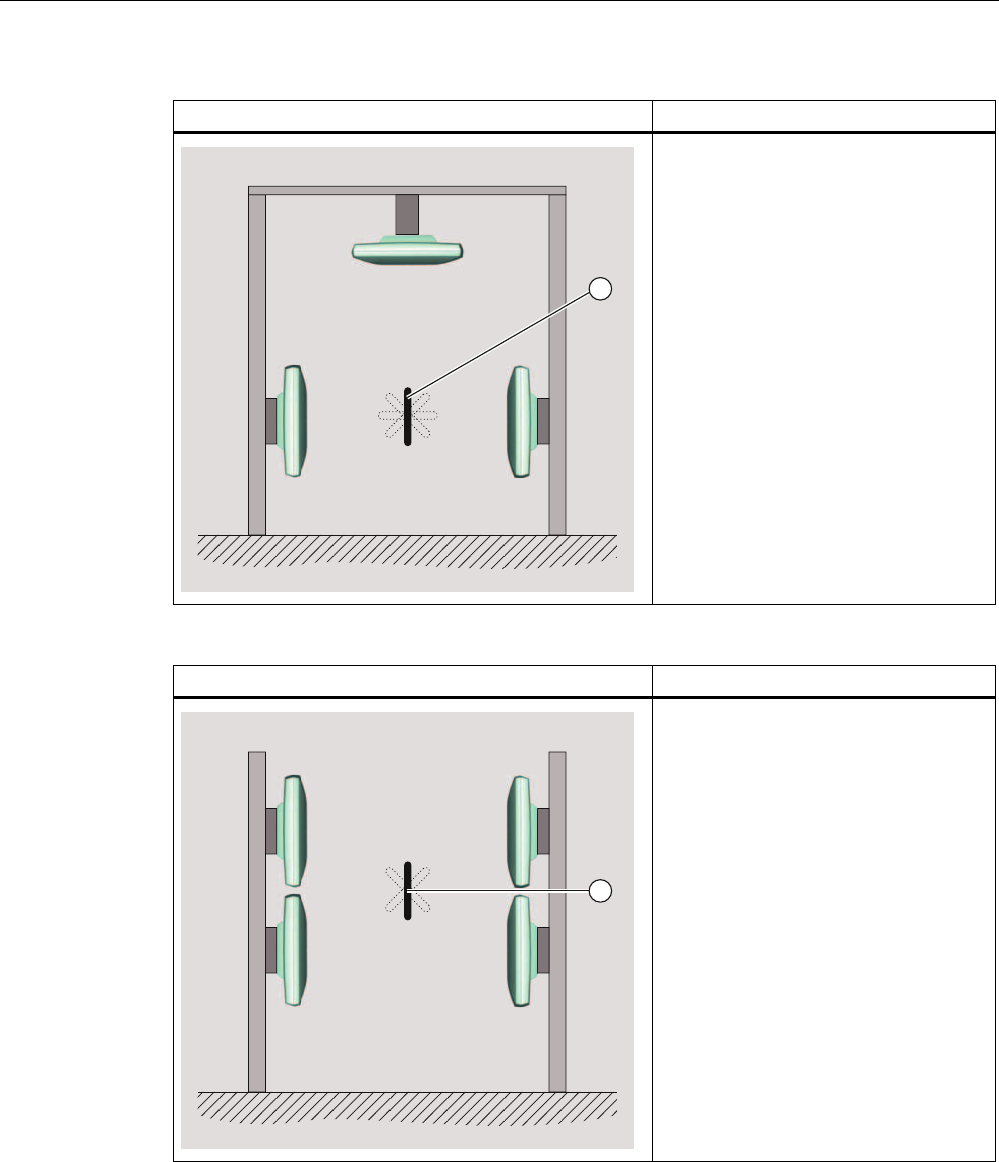
RF600 system planning
4.3 Antenna configurations
SIMATIC RF600
System Manual, 05/2012, J31069-D0171-U001-A13-7618 43
Antenna configuration 4 Description/ application areas
Preferred for the identification of goods
at loading portals: Similar to
configuration 2, but with additional
reading reliability when the tag is at an
angle to the vertical.
① Tag
This antenna configuration is possible
with the following readers:
• RF670R with three antennas
Antenna configuration 5 Description/ application areas
Preferred for the identification of goods
at loading portals: The tag is located in
the field of radiation of all four antennas,
so the tag position can vary more than in
configuration 2 for reliable tag
identification.
① Tag
This antenna configuration is possible
with the following readers:
• RF670R with four antennas
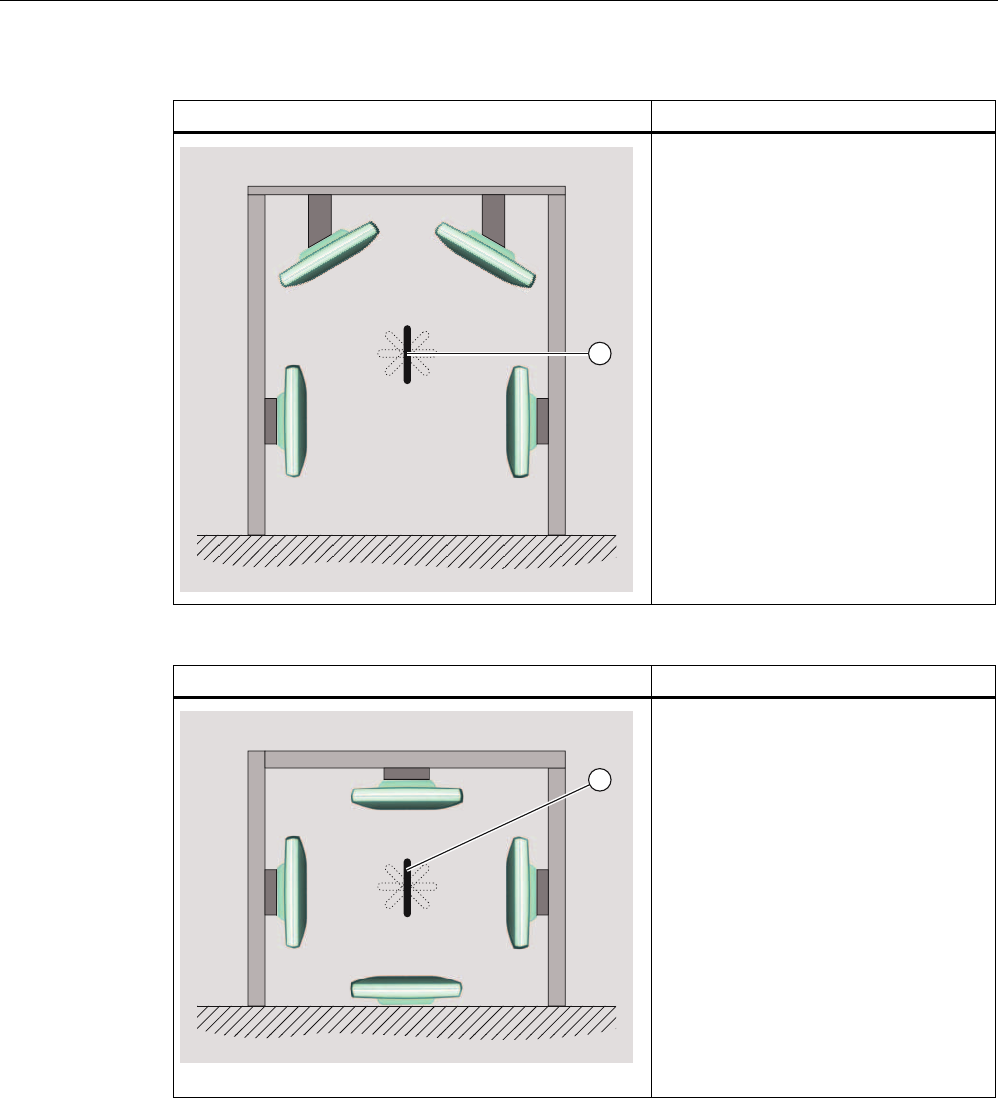
RF600 system planning
4.3 Antenna configurations
SIMATIC RF600
44 System Manual, 05/2012, J31069-D0171-U001-A13-7618
Antenna configuration 6 Description/ application areas
Preferred for the identification of goods
at loading portals: Similar to
configuration 4, but the reliability of tag
identification is improved as a result of
the four antennas at separate locations,
so the tag position is not critical.
① Tag
This antenna configuration is possible
with the following readers:
• RF670R with four antennas
Antenna configuration 7 Description/ application areas
This tunnel configuration is suitable for
conveyor belt applications. The goods
with the tags to be read are moving
forwards on a conveyor belt but the
alignment of the tags relative to the
antennas is not clearly defined. One of
the antenna is located on the floor and
radiates vertically upwards in the
direction of the conveyor belt. A relatively
high reading reliability is achieved due to
the use of four antennas.
① Tag
This antenna configuration is possible
with the following readers:
• RF670R with four antennas
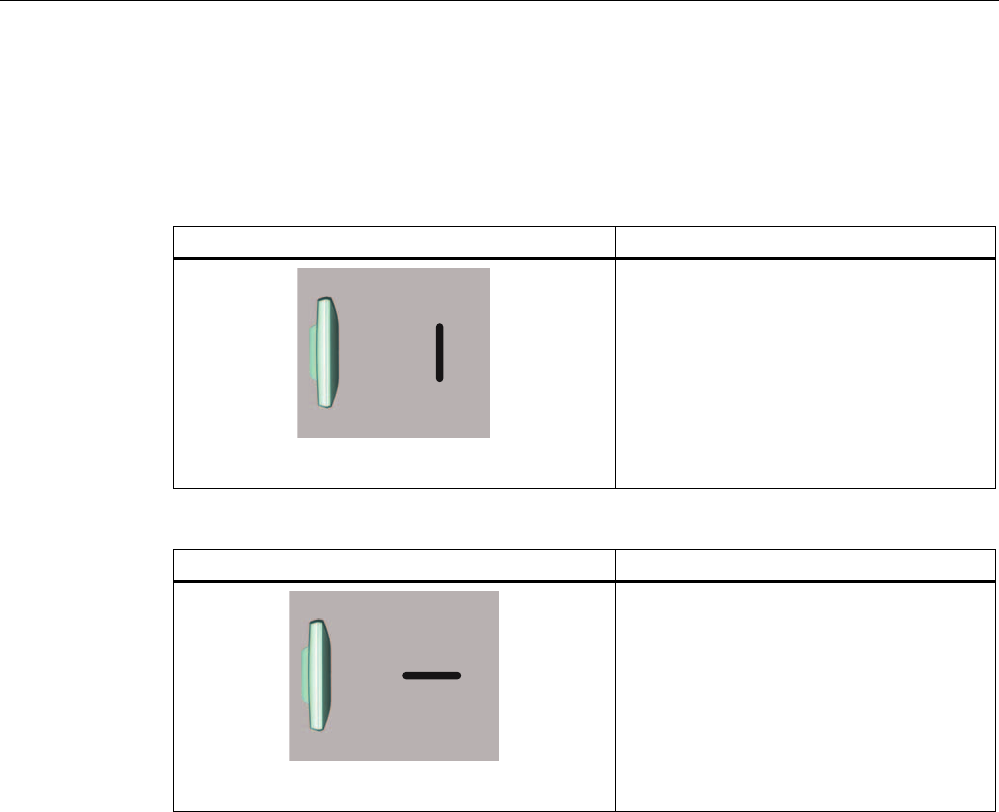
RF600 system planning
4.3 Antenna configurations
SIMATIC RF600
System Manual, 05/2012, J31069-D0171-U001-A13-7618 45
4.3.3 Tag orientation in space
The alignment of the tag antenna to the antenna of the reader affects the reading range. For
maximum performance and to achieve the maximum reading range, the tag antenna should
therefore be aligned in parallel with the reader antenna:
Parallel tag alignment Large reading range
Maximum probability of identification of tags.
Vertical tag alignment Minimal reading range
Minimum probability of identification of tags.
4.3.4 Specified minimum and maximum spacing of antennas
Specified minimum spacing of antennas
The following diagram shows the specified minimum and maximum spacings for mounting
antennas:
A minimum spacing of 50 cm is necessary between the antenna and liquids or metals.
The distance between the antenna and the floor should also be at least 50 cm.
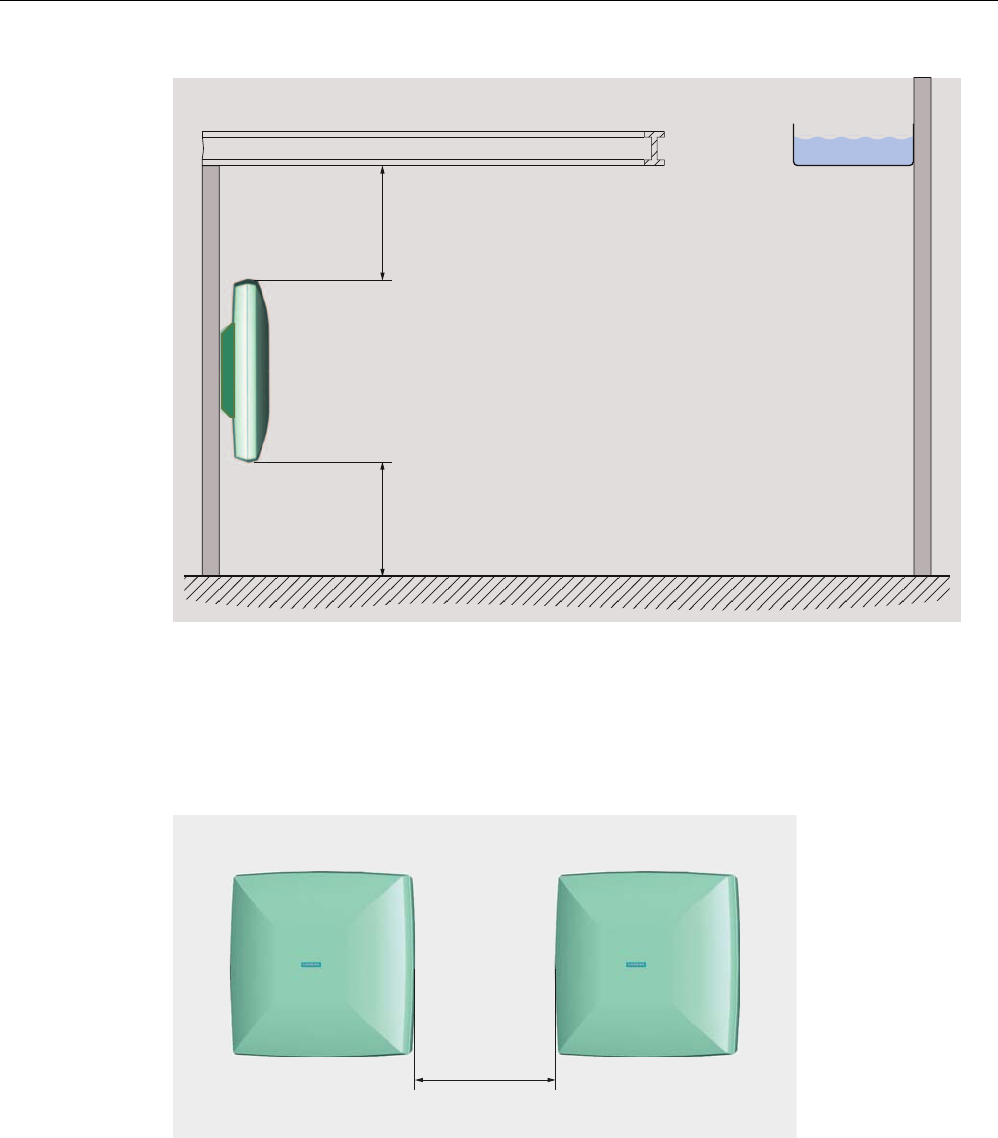
RF600 system planning
4.3 Antenna configurations
SIMATIC RF600
46 System Manual, 05/2012, J31069-D0171-U001-A13-7618
PLQ
FP
PLQ
FP
0HWDOUDFN /LTXLG
Figure 4-2 Minimum distance to the environment
The distance between two antennas mounted alongside each other or one above the other
that are operated be one reader should be at least 20 cm, but a distance of more than 50 cm
is better.
'
Figure 4-3 Antennas mounted adjacently horizontally or vertically
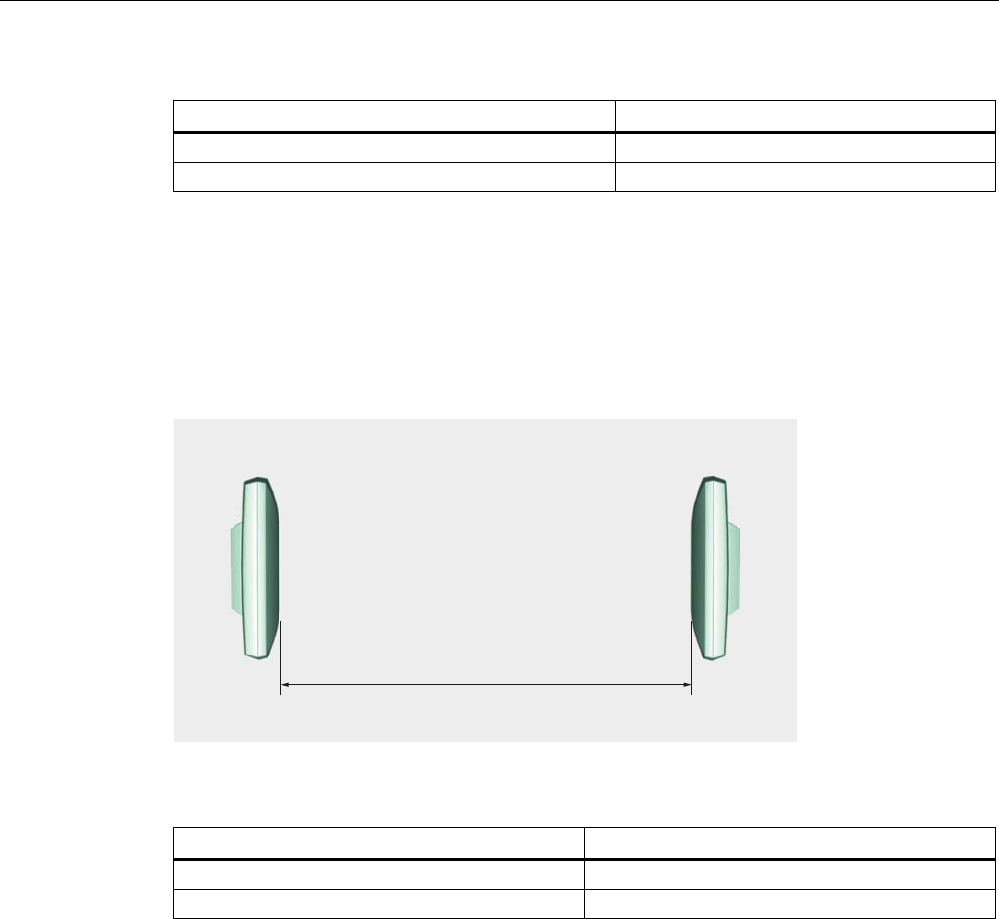
RF600 system planning
4.3 Antenna configurations
SIMATIC RF600
System Manual, 05/2012, J31069-D0171-U001-A13-7618 47
Readers Minimum spacing D
A reader with 2 antennas 20-50 cm
Two different reader/reader antennas 80 cm *)
*) The specified spacing applies only if the various readers/reader antennas are not active at the
same time. Otherwise the minimum spacing from the following section applies.
The minimum spacing between antennas mounted alongside each other or one above the
other depends on the transmit power of the reader and the sensing range of the
transponders.
For a portal configuration, the maximum distance between two antennas that are connected
to the same reader is 8 m.
'
Figure 4-4 Portal configuration, maximum distance
Readers Maximum distance D
RF670R with RF660A 8 m *)
RF630R with RF660A 4 m
*) A portal spacing of up to 10 m is possible. The probability of a read must be checked.
The specified distances are recommended minimum or maximum values for configuration.
See also
Mutual interference of readers (antennas) (Page 48)
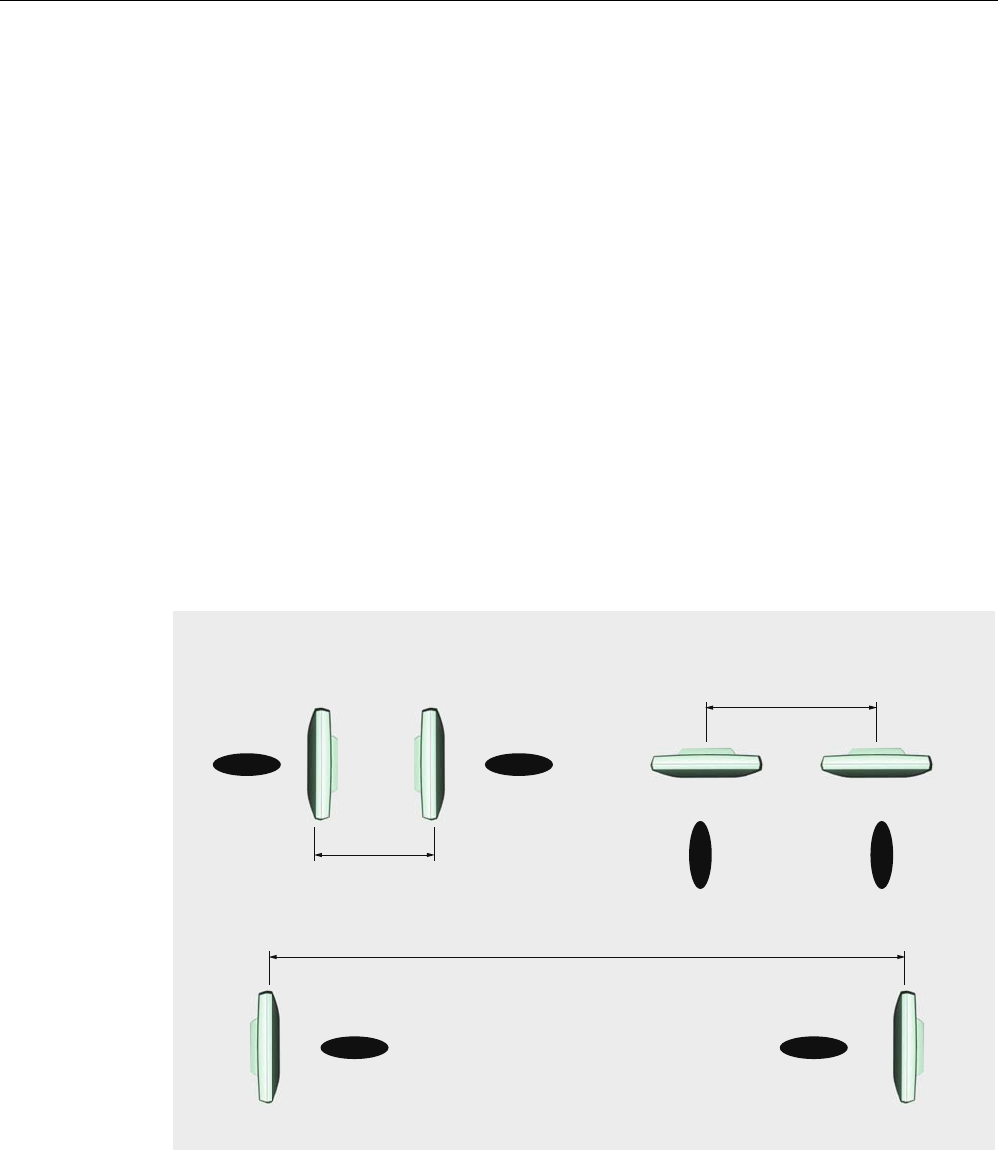
RF600 system planning
4.3 Antenna configurations
SIMATIC RF600
48 System Manual, 05/2012, J31069-D0171-U001-A13-7618
4.3.5 Mutual interference of readers (antennas)
Using more than one reader
When several RFID readers are used, there is a danger that RFID tags can also be read by
other readers. It must be ensured that the tag can only be identified by the appropriate
reader.
Technical disruptions between readers then occur particularly when they transmit on the
same channel (on the same frequency). You will find more detailed information in the section
"The response of electromagnetic waves in the UHF band (Page 72)".
To prevent this, readers used in Europe and China must operate on different channels with
"frequency hopping" activated. "Frequency hopping" is permanently set in the USA.
Antenna alignment and antenna spacing with an external antenna
The minimum distance required between antennas that use the same frequency and that are
connected to different readers depends on the maximum radiated power set (RF670R with
RF660A = 2000 mW ERP; RF640R with RF660A = 2000 W ERP; RF620R/RF630R =
500 mW ERP) and the antenna alignment.
WDJV
WDJV WDJV
WDJV
WDJV
WDJV
'
'
'
$%DFNWR%DFN %6LGHE\6LGH
&3RLQWLQJWRZDUGVHDFKRWKHU
Figure 4-5 Antenna distances for different readers and identical frequencies
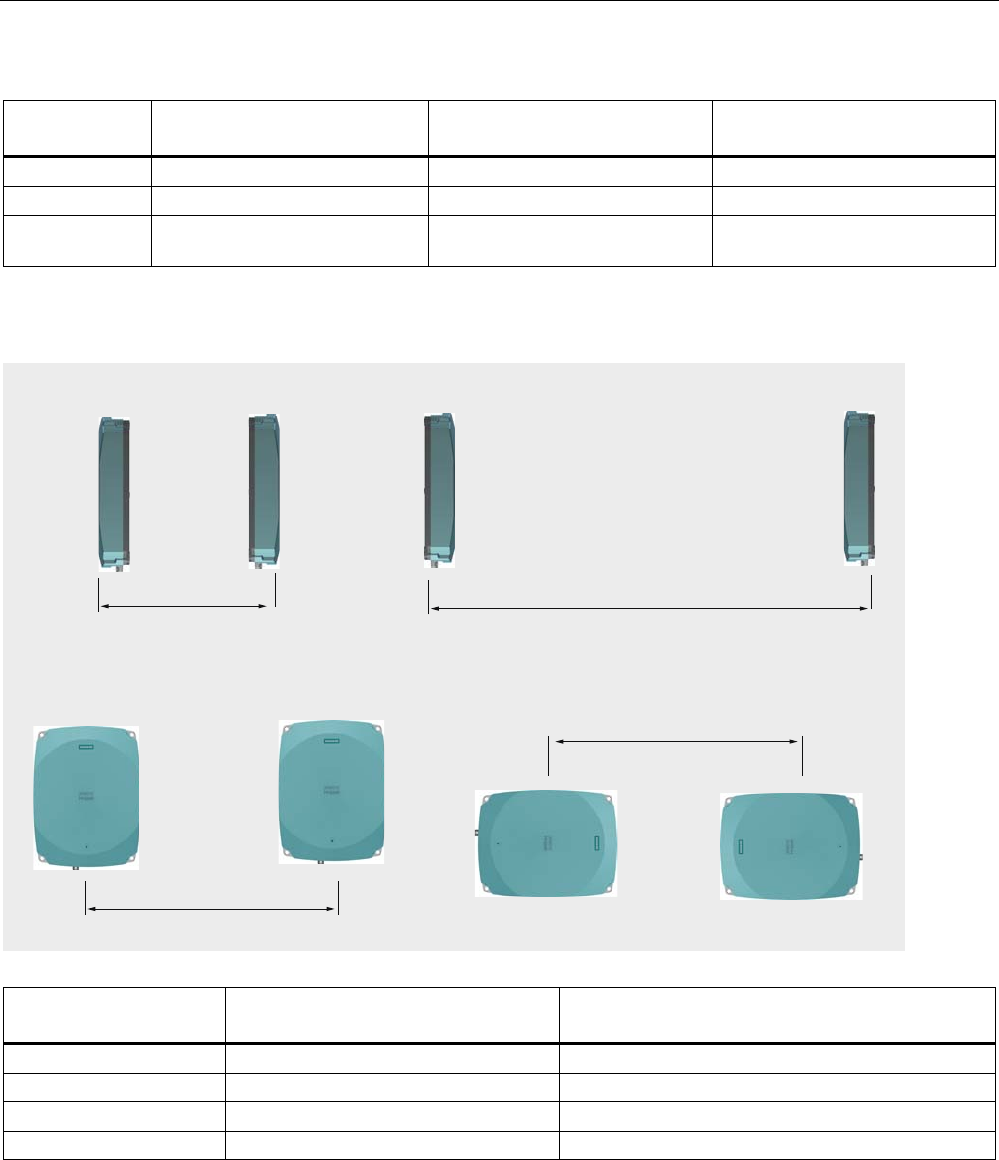
RF600 system planning
4.3 Antenna configurations
SIMATIC RF600
System Manual, 05/2012, J31069-D0171-U001-A13-7618 49
Antenna
configuration
Antenna alignment Minimum spacing required = D
RF640R/RF670R with RF660A
Minimum spacing required = D
RF620R/RF630R with RF660A
A With backs to each other 0.5 m 0.3 m
B Arranged laterally 1 m 0.8 m
C Antennas point toward each
other
6 m 6 m
Antenna alignment and antenna spacing for the RF620R and RF640R with an internal antenna
(6LGHE\VLGHORQJVLGH )6LGHE\VLGHVKRUWVLGH
$%DFNWREDFN &3RLQWLQJDWHDFKRWKHU
'
'
''
Antenna configuration Antenna alignment Minimum spacing required = D
RF620R with internal antenna
A Back to back 0.4 m
C Pointing at each other 5.8 m
E Side by side (long side) 1.4 m
F Side by side (short side) 1.8 m
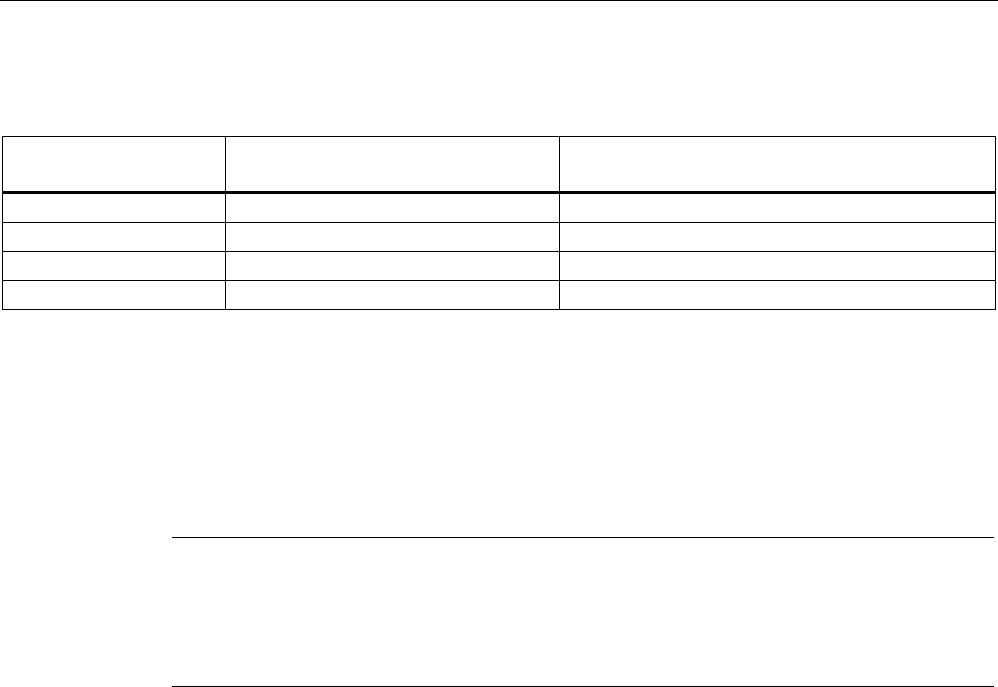
RF600 system planning
4.3 Antenna configurations
SIMATIC RF600
50 System Manual, 05/2012, J31069-D0171-U001-A13-7618
Antenna alignment and antenna spacing for the RF640R with an internal antenna
Antenna configuration Antenna alignment Minimum spacing required = D
RF640R with internal antenna
A Back to back 0.4 m
C Pointing at each other 4.0 m
E Side by side (long side) 1.4 m
F Side by side (short side) 2.0 m
Optimization of the antenna arrangement
SIMATIC RF620R, RF640R with internal antenna
The RF620R and RF640R have an integrated, circular polarized antenna. This means that
the type of antenna cannot be freely selected. This means that the interference spacing in
arrangement E is greater than in arrangement F (see section Auto-Hotspot).
Note
Rotation of the reader through 90° around the z axis
Since the horizontal electrical aperture angle of the RF620R antenna is greater than the
vertical aperture angle, the effects on adjacent readers can be reduced by using the reader
as shown in arrangement F (see arrangements E and F in section Auto-Hotspot).
With the SIMATIC RF660A antenna
The electrical aperture angles (vertical and horizontal) of the RF660A antenna are identical.
Therefore, the robustness of the readers' access to transponder data cannot be optimized
further by rotating them around the antenna axis.
With the RF640A/RF642A antenna
The electrical aperture angles (vertical and horizontal) of the RF640A/RF642A antenna are
similar. Therefore, the robustness of the readers' access to transponder data can be
optimized only to a limited extent by rotating around the antenna axis.
Application example for RF620R/RF630R
The following example illustrates measures for increasing the reliability of data access to
transponders for readers with internal antennas:
● The antennas are placed next to each other and are aligned parallel to each other (see
arrangement B in section Auto-Hotspot).
● The readers have been rotated through 90° around the z axis.
The table below provides you with an overview of the minimum spacing to be maintained at
a radiated power of 27 dBm with a maximum number of reachable transponders:
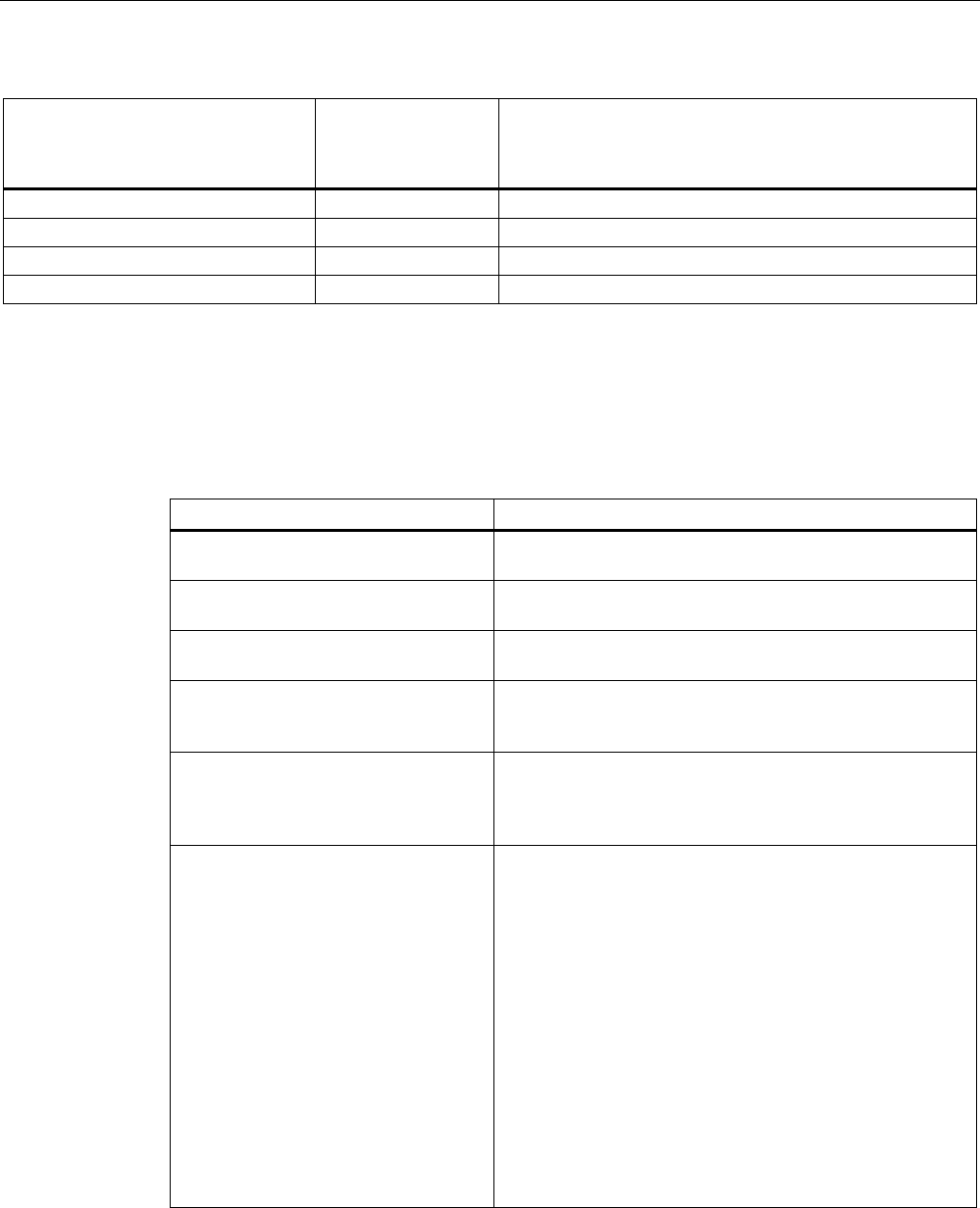
RF600 system planning
4.3 Antenna configurations
SIMATIC RF600
System Manual, 05/2012, J31069-D0171-U001-A13-7618 51
Mode Max. number of tags Min. distance [m] between
- two readers with internal antennas
- two RF660A antennas
Single tag mode: Read 1 3
Single tag mode: Write 1 3
Multitag mode: Read 40 6
Multitag mode: Write 10 6
4.3.6 Read and write range
The read/write range between the reader/antenna and the transponder is influenced by the
following factors:
The reading range depends on Description
Transmit power of the reader The higher the transmit power of the reader, the larger the
reading range.
Tag size and type The larger the tag antenna, the larger the power input area
and therefore the larger the reading range.
Absorption factor of the materials The higher the absorption of the surrounding material, the
smaller the reading range.
Production quality of the tag The better the tag has been matched to the operating
frequencies during manufacturing, the greater the reading
range.
Reflection characteristics of the
environment
In a multiple-reflection environment (e.g., in rooms with
reflecting surfaces, machinery, or concrete walls), the
reading range can be significantly higher than in a low-
reflection environment.
Number of transponders in the antenna
field
The typical ranges always relate to a transponder installed
at the maximum possible distance from the antenna.
If there is more than one transponder in the antenna field,
the distance to all other transponders must be less to allow
them to be acquired in the antenna field.
The width and height of the antenna field within which its
transponders can be arranged at a certain distance from
the antenna depend on the following:
• The radiated power,
• Only reading or reading and writing the transponders
(writing requires more power, typically double the
power)
• The aperture angle (horizontal)
• The aperture angle (vertical)
You will find detailed information about the reading range of the individual readers in the
"Technical specifications" in the sections for the various readers.
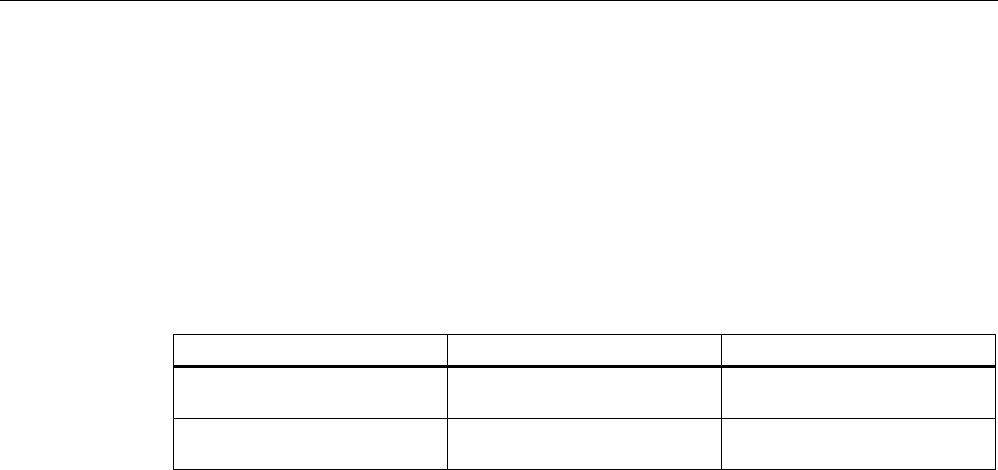
RF600 system planning
4.3 Antenna configurations
SIMATIC RF600
52 System Manual, 05/2012, J31069-D0171-U001-A13-7618
4.3.7 Static/dynamic mode
Reading or writing can be either static or dynamic.
● Reading/writing is counted as being static if the tag does not move in front of the antenna
and is read or written.
● Reading/writing is counted as being dynamic if the tag moves past the antenna during
reading/writing.
The following overview shows which environments are suitable for which read or write mode:
Operating mode Read Write
Static Recommended in normal UHF
environments
Recommended in normal UHF
environments
Dynamic Recommended under difficult
UHF conditions
Not recommended in difficult
UHF environments
4.3.8 Operation of several readers within restricted space
4.3.8.1 Dense Reader Mode
A special operating mode according to the standard EPC Global Class 1, Gen 2 in Dense
Reader Mode allows several RF600 readers to be operated without interference in close
proximity to each other. All RF600 readers operate in Dense Reader Mode according the
standard EPC Global Class 1, Gen 2.
Dense Reader Mode allows physically adjacent readers to use the same frequency when
Gen 2 tags are being used.
Special features for ETSI
In accordance with EPC Global as well as ETSI EN 302 208 V1.3.1, the four transmit
channels are used for transmission with the RF670R, with the RF640R as of firmware
version V1.3, and with the RF620R/RF630R (see section Regulations for UHF frequency
bands in Europe (Page 74)) and the tag response appears on the associated neighboring
channels. As a result of the large difference in level between the transmitter channels and
the tag response channels, this technology provides great advantages for frequency reuse.
However, a prerequisite is that a certain minimum distance, and thus minimum decoupling, is
observed between the antennas of adjacent readers.
4.3.8.2 Optimizing tag reading accuracy
An improvement in the tag reading accuracy in an environment with a high density of readers
can be achieved by aligning the antennas toward the relevant tag field, in other words by
rotating them horizontally and vertically.
In addition, the transmitter power of the readers can be reduced down to the minimum at
which the tags are still just detected accurately.

RF600 system planning
4.3 Antenna configurations
SIMATIC RF600
System Manual, 05/2012, J31069-D0171-U001-A13-7618 53
This greatly reduces the probability of interference.
4.3.8.3 Optimization of robustness of tag data accesses for readers that are operated
simultaneously
Parameter data access reliability
If several readers are to be operated simultaneously in an environment, then the following
settings affect the reliability of the reader's access to transponder data:
● Electromagnetic environment (see section The response of electromagnetic waves in the
UHF band (Page 72))
● Type of transponder (see section Transponder/tags (Page 265))
● Number of transponders to be detected by an antenna at a time
● Type of antenna (see section Antennas (Page 187), section Guidelines for selecting RFID
UHF antennas (Page 54), and section Planning application (Page 99))
● Transponders' distance from and orientation toward antennas (see section
Transponder/tags (Page 265))
● Distances and orientation of antennas of different readers to each other
● Radiated power of antennas
The robustness of tag data accesses is improved for readers whenever distances to
adjacent readers are increased, radiated power is reduced, and a channel plan (for ETSI
readers) is implemented. Adjacent readers are parameterized in the channel plan such that
they cannot use the same channels.
A channel plan can be created for ETSI readers; for FCC readers, it is assumed that the
probability of two readers accidentally using the same channel is very low.
4.3.8.4 Frequency hopping
This technique is intended to prevent mutual interference between readers. The reader
changes its transmission channel in a random or programmed sequence (FHSS).
Procedure for FCC
Frequencyhopping is always active with FCC. The 50 available channels mean that the
probability is low that two readers will be operating on the same frequency (see Section
Regulations for UHF frequency bands in the USA (Page 81)). In China, one reader operates
on at least 2 channels, e.g. 16 channels of 2 W (see Section Regulations for UHF frequency
bands in China (Page 76)).
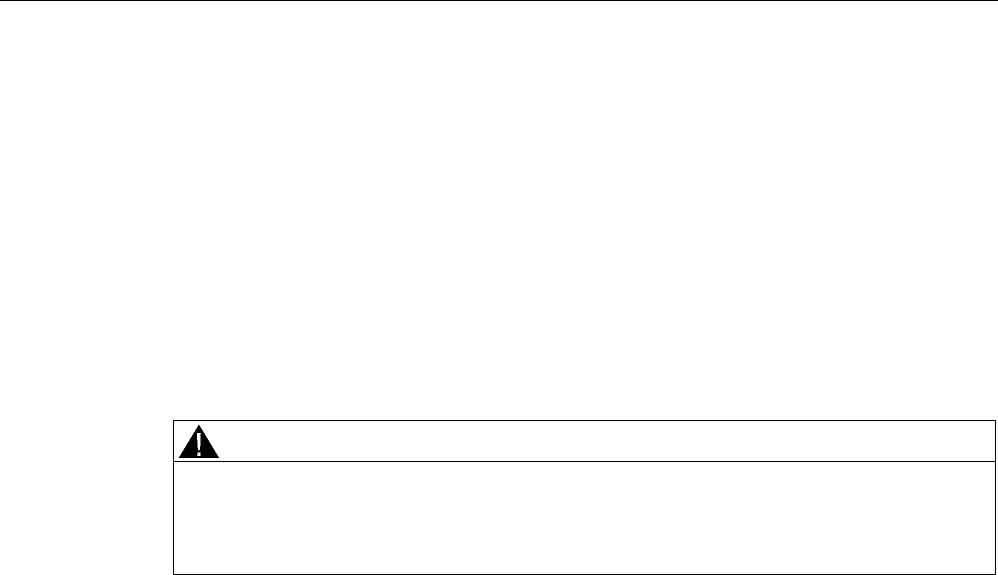
RF600 system planning
4.3 Antenna configurations
SIMATIC RF600
54 System Manual, 05/2012, J31069-D0171-U001-A13-7618
Procedure for ETSI
Frequencyhopping is optional with ETSI. According to ETSI EN 203 208 V1.2.1,
Frequencyhoppingis advisable, however this is should preferably be multichannel operation
with Frequencyhopping. Without Frequencyhopping, only single channel operation is
possible for which the standard specifies a pause of 100 ms after each 4 s of sending.
4.3.9 Guidelines for selecting RFID UHF antennas
4.3.9.1 Note safety information
WARNING
Before planning how to use third-party components, as the operator of a system that
comprises both RF600 components and third-party components, you must comply with the
safety information in Section Safety instructions for third-party antennas as well as for
modifications to the RF600 system (Page 18).
4.3.9.2 Preconditions for selecting RFID UHF antennas
Target group
This chapter has been prepared for configuration engineers who thoroughly understand and
wish to carry out the selection and installation of an external antenna or an external cable for
the SIMATIC RF600 system. The various antenna and cable parameters are explained, and
information is provided on the criteria you must particularly observe. Otherwise this chapter
is equally suitable for theoretical and practice-oriented users.
Purpose of this chapter
This chapter enables you to select the appropriate external antenna or cable with
consideration of all important criteria and to carry out the corresponding settings in the
configuration software of the SIMATIC RF600 system. Correct and safe integration into the
SIMATIC RF600 system is only possible following adaptation of all required parameters.
4.3.9.3 General application planning
Overview of the total SIMATIC RF600 system and its influencing factors
The following graphic shows the design of the total SIMATIC RF600 system and the factors
which have an influence on the total system.
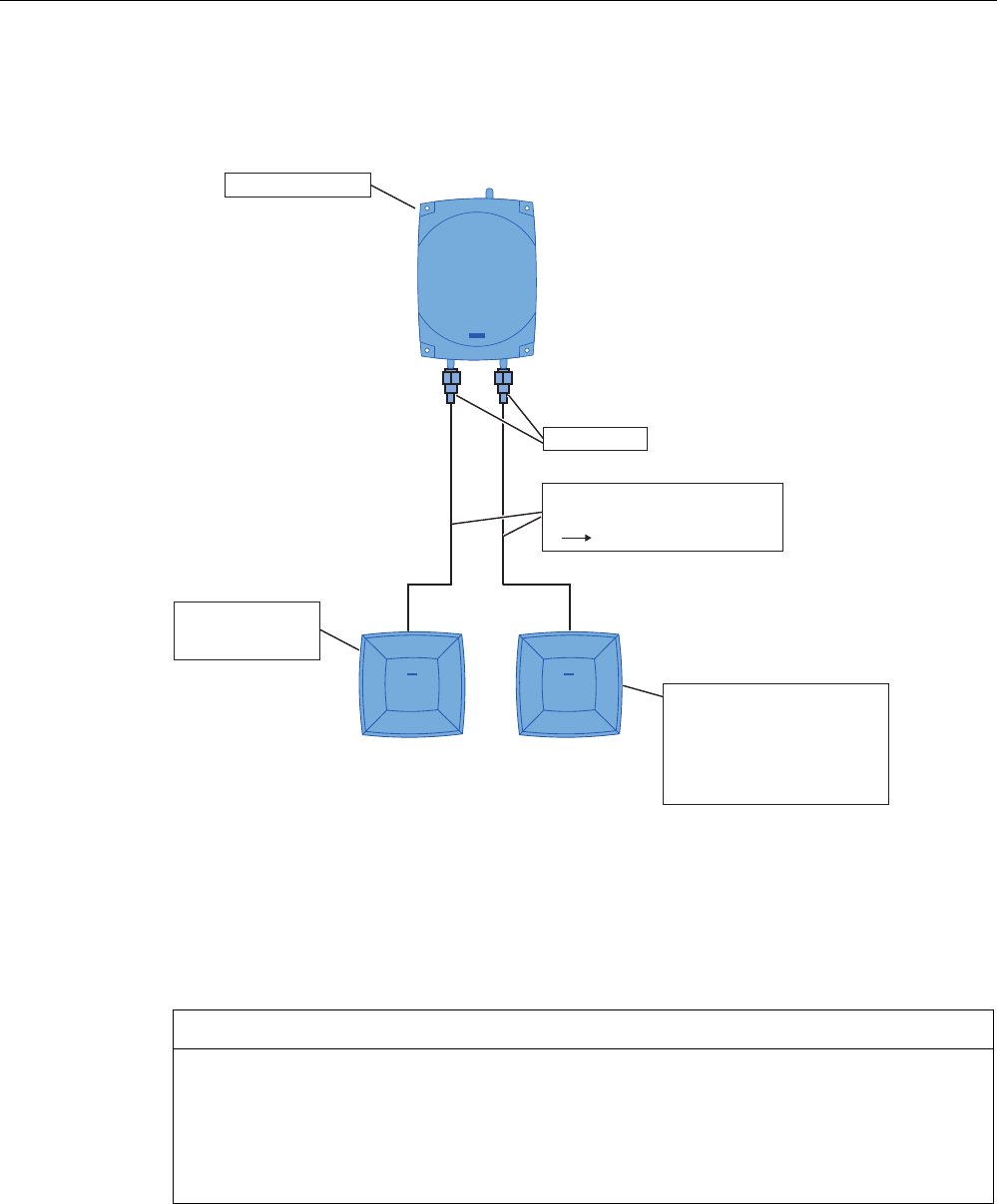
RF600 system planning
4.3 Antenna configurations
SIMATIC RF600
System Manual, 05/2012, J31069-D0171-U001-A13-7618 55
You must be aware of these influencing factors and also consider them if you wish to
integrate third-party components such as antennas or cables into the system. These
influencing factors are described in more detail in Sections Auto-Hotspot and Auto-Hotspot.
9LHZRIUHDGHU
$QWHQQD
FRQQHFWLRQV
$QWHQQD $QWHQQD
$QWHQQDJDLQ
,PSHGDQFH
5HWXUQORVV96:5
3RODUL]DWLRQ
)URQWWREDFNUDWLR
%HDPDQJOH
&KDUDFWHULVWLFLPSHGDQFH
/HQJWKRIDQWHQQDFDEOH
/RVV
,PSHGDQFH
7UDQVPLWSRZHU
5DGLDWHGSRZHU
(,53
(53
Figure 4-6 Overview of total system and influencing factors
When operating the RF600 system, additional influencing factors must also be observed
such as minimum spacing between antennas in the room.
Environmental conditions
CAUTION
Damage to the device
In line with the application, you must take into consideration the mechanical loads (shock
and vibration) as well as environmental demands such as temperature, moisture, UV
radiation.
The device could be damaged if these factors are not considered.

RF600 system planning
4.3 Antenna configurations
SIMATIC RF600
56 System Manual, 05/2012, J31069-D0171-U001-A13-7618
General procedure
Depending on whether you want to use a third-party antenna or antenna cable (or both) in a
combination with the RF600 system, these instructions will help you to select the
components and to set the important parameters in the RF MANAGER Basic.
There are two different application cases:
● Selection of third-party components:
you wish to select appropriate third-party components for the SIMATIC RF600 system
and to subsequently configure the reader for these components.
● Configuration of existing third-party components:
you already have third-party components (antenna, antenna cable or both) and wish to
appropriately configure the reader for these components.
Procedure for selecting third-party components
Always proceed in the following order during your considerations and the practical
implementation:
1. Consider which third-party components you wish to use in the SIMATIC RF600 system.
2. Depending on the third-party component required, refer either to Section Auto-Hotspot or
Section Auto-Hotspot for the important criteria for selection of your components. The
selection criteria/parameters are sorted in descending relevance.
3. Use the specified equations to calculate your missing parameters, and check whether the
required values are reached (e.g. antenna gain) and that important secondary values
(e.g. cable loss) are not exceeded or undershot.
4. Configure the reader with the parameters of your third-party components. Normally, you
can do this with the RF MANAGER Basic. Depending on the reader, the values can
alternatively also be set via XML protocol or SIMATIC protocol. You will find an overview
of the information for the parameter assignment of all RF600 system readers in the
section Overview of parameterization of RF600 reader (Page 377).
Procedure for configuration of existing third-party components
If you already have third-party components which you wish to integrate into the SIMATIC
RF600 system, proceed as follows:
1. Depending on the third-party component, refer either to Section "Antennas" or Section
"Antenna cables" for the important criteria of your components. The parameters are
sorted in descending relevance.
2. Compare the limits with the data of your antenna or cable vendor.
3. Subsequently proceed exactly as described above in "Procedure for selecting third-party
components" from Paragraph 3. onwards.

RF600 system planning
4.3 Antenna configurations
SIMATIC RF600
System Manual, 05/2012, J31069-D0171-U001-A13-7618 57
4.3.9.4 Antennas
Types of antenna and properties
Basically all types of directional antennas can be considered as third-party antennas for
integration into the SIMATIC RF600 system. Directional antennas have a preferred direction
in which more energy is radiated than in other directions.
RF600 antennas on the other hand, are optimized for operation with RF600 readers and
have all the required approvals.
Antenna parameters
Overview
The properties of an antenna are determined by a large number of parameters. You must be
aware of these properties in order to make the correct selection for your appropriate UHF
antenna. The most important parameters are described below. These important parameters
are described in detail in the following sections. The following parameters describe both the
send and receive functions of the antenna (reciprocity). The antenna is a passive antenna. A
two-way relationship exists.
● Radiated power
● Antenna gain
● Impedance
● Return loss / VSWR
● Power rating
● Polarization
● Front-to-back ratio
● Beam width
Radiated power
In order to comply with national directives with regard to the radiated power (which differ
depending on the location or country of use), the RF600 readers together with the antenna
cable(s) and antenna(s) must be exactly parameterized or configured.
This means that the product of the transmitted power P0 of the reader and the antenna gain
Gi must always have the correct ratio with regard to the radiated power "EIRP" depending on
the location of use or the permissible frequency band.
Calculation of the radiated power is briefly described below.
Calculation of the radiated power
The radiated power is the total power radiated by the antenna in the room. The isotropic
radiator serves as the physical computing model which uniformly radiates the power into the
room (spherically, i.e. isotropic).
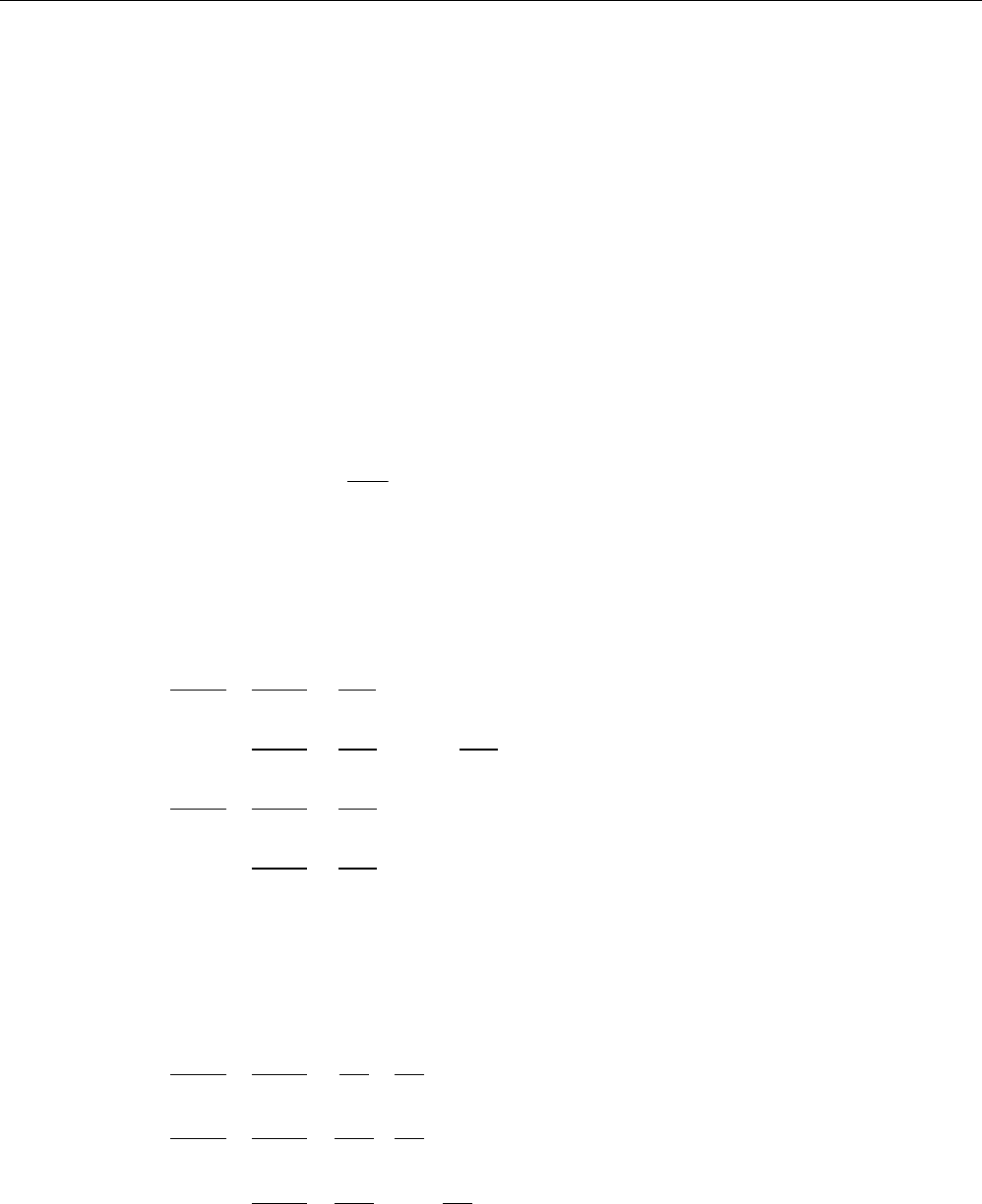
RF600 system planning
4.3 Antenna configurations
SIMATIC RF600
58 System Manual, 05/2012, J31069-D0171-U001-A13-7618
EIRP
Directional antennas combine the radiation, and therefore have a higher power density in the
main beam direction compared to an isotropic radiator. To enable antennas of different
design or Directional characteristic to be compared with one another, the equivalent isotropic
radiated power (EIRP) has been introduced which represents the effective power which must
be applied to an isotropic radiator in order to deliver the same power density in the main
beam direction of the antenna.
"EIRP" is the product of the transmitted power P0 and the antenna gain Gi:
EIRP = P0 * Gi
ERP
Also common is specification of the equivalent radiated power referred to the half-wave
dipole "ERP" (effective radiated power):
*
L
3
*
G
3
(53
Logarithmic and standardized data
Approximate calculations are easier to carry out as additions than as products, therefore the
logarithms are taken for the above equations and the power data standardized to 1 mW and
specified in decibels (dBm or dBi).
(53
G%P
3
G%P G%G
*G
(,53
G%P
3
G%P G%L
*L
3
G%P G%L
*L
3
G%P G%G
*G
G%
DN
Calculation of the radiated power with consideration of the cable loss ak
If the transmitted power is not applied directly but via a cable with loss aK, this loss should be
compensated such that the same radiated power is obtained.
LI
LI
(,53
G%P
3
G%P
*
G%L
D
N
G% D
N
!
D
N
!
(53
G%P
3
G%P G%G
D
N
G%
*
G
3
G%P G%L
D
N
G%
*
L
If the loss is not appropriately compensated, the radiated power is too small.

RF600 system planning
4.3 Antenna configurations
SIMATIC RF600
System Manual, 05/2012, J31069-D0171-U001-A13-7618 59
General preliminary information on the unit "dB"
Requirements
This section provides you with information on the unit "decibel". This knowledge is a
requirement for optimum understanding of the following section. You can ignore this section
if you already have the appropriate knowledge.
Definition
When specifying decibels, the ratios between powers or voltages are not defined directly but
as logarithms. The decibel is therefore not a true unit but rather the information that the
specified numerical value is the decimal logarithm of a ratio of two power or energy variables
P1 and P2 of the same type.
This ratio is defined by the following equation:
DORJ
3
G%
3
Example
If P1 = 200 W and P2 = 100 mW, how large is the ratio a in dB?
ORJ
G%
ORJ
G%
D
3
G%
3
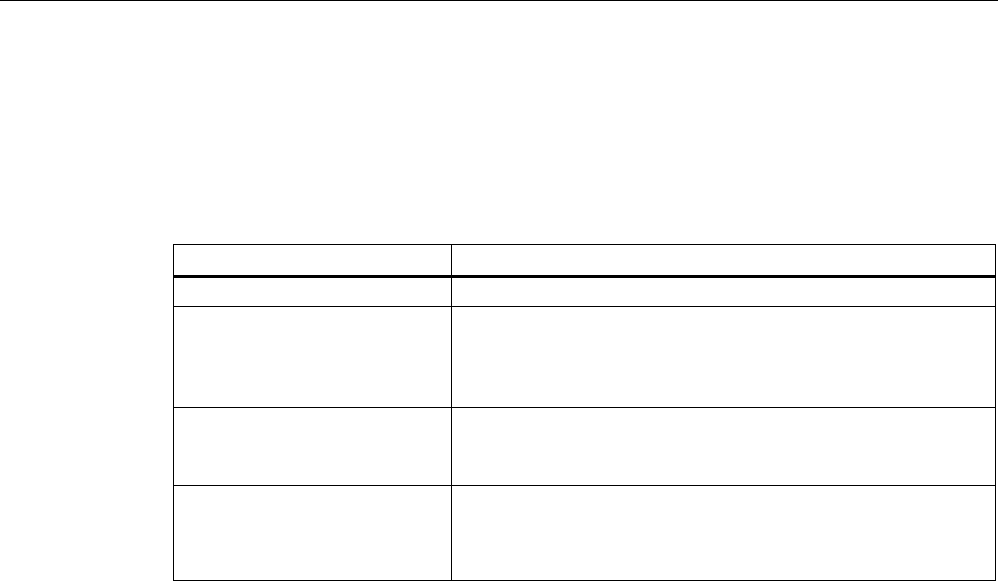
RF600 system planning
4.3 Antenna configurations
SIMATIC RF600
60 System Manual, 05/2012, J31069-D0171-U001-A13-7618
Use with other units
As with other units, there are also different versions of the unit for decibel depending on the
reference variable. With this reference, the logarithmic power ratio becomes an absolute
variable. The following table lists the most important combinations in this context with other
units:
Versions of decibel Description
0 dBm Power level with the reference variable 1 mW.
dBi Power level with the reference variable on the isotropic spherical
radiator (see also Section Antenna gain (Page 60) ).
The relationship between dBi and dBic is as follows:
dBi = dBic - 3
dBd Power level with the reference variable on the dipole radiator.
The relationship between dBd and dBi is as follows:
dBd = dBi - 2.15
dBic Power level with the reference variable on the isotropic radiator for
circular antennas.
The relationship between dBi and dBic is as follows:
dBic = dBi + 3
Antenna gain
Definition
The antenna gain specifies the degree to which the antenna outputs or receives its power in
the preferred angle segment.
With this theoretical variable, a comparison is always made with an isotropic spherical
radiator, a loss-free antenna which does not exist in reality. It describes how much power
has to be added to the isotropic spherical radiator so that it outputs the same radiated power
in the preferred direction like the antenna to be considered. The unit for the antenna gain is
therefore specified in dBi (dB isotropic).
The antenna gain is defined for the receive case as the ratio between the power received in
the main beam direction and the received power of the isotropic spherical radiator.
Specifications
You must know the antenna gain in the corresponding frequency band or range. You can
obtain the value of the antenna gain from the technical specifications of your antenna
vendor.
● With a cable loss of 4 dB, a gain ≥ 6 dBi(L) is required since otherwise the maximum
radiated power will not be achieved.
● In the case of antennas used in the FCC area of approval, a gain of at least 6 dBi(L) is
required since otherwise the permissible radiated power of 4 W EIRP will not be reached.
● If the gain is > 6 dBi(L)*, the difference is compensated in accordance with the directives
by reducing the transmitted power.

RF600 system planning
4.3 Antenna configurations
SIMATIC RF600
System Manual, 05/2012, J31069-D0171-U001-A13-7618 61
* (L) is the reference to the linear polarization.
Dependencies
● Frequency dependency:
if a frequency dependency exists in the frequency band used, you must apply the highest
value in each case for the antenna gain. With the cable loss, on the other hand, you must
select the smallest value in each case it frequency dependency exists.
This procedure means that the permissible radiated power will not be exceeded in the
extreme case.
● Dependency on the plane
If the data for the antenna gain are different in the horizontal and vertical planes, you
must use the higher value in each case.
Impedance
Definition
Impedance is understood as the frequency-dependent resistance. The impedances of the
antenna, reader and antenna cables should always be the same. Differences in the
impedance result in mismatching which in turn means that part of the applied signal is
reflected again and that the antenna is not fed with the optimum power.
Specifications
● Only antennas can be used whose connection has a characteristic impedance of Z =
50 Ohm.
● The mechanical design of the coaxial antenna connection is of secondary importance; N,
TNC and SMA plug connectors are usual.
Return loss / VSWR
Definition
Since the impedance at the antenna connection is frequency-dependent, mismatching
automatically occurs with broadband use. This mismatching can be reflected by two
parameters:
● The voltage standing wave ratio VSWR
● The return loss

RF600 system planning
4.3 Antenna configurations
SIMATIC RF600
62 System Manual, 05/2012, J31069-D0171-U001-A13-7618
Voltage standing wave ratio VSWR
The power sent by the transmitter cannot flow unhindered to the antenna and be radiated as
a result of the mismatching described by the VSWR. Part of the power is reflected at the
antenna and returns to the transmitter. The powers in the forward and reverse directions
produce a standing wave which has a voltage maximum and a voltage minimum. The ratio
between these two values is the VSWR (voltage standing wave ratio).
Return loss
The return loss parameter is based on the reflection factor which describes the voltage ratio
between the forward and reverse waves.
Specifications
So that the smallest possible transmitted and received powers are reflected by the antenna
under ideal conditions, you should observe the following data for the VSWR and the return
loss |S11|/ dB in the respective frequency band (865-870 MHz or 902-928 MHz):
● VSWR < 1.24:1 or
● |S11|/ dB ≥ 20 dB
Power rating
Definition
The power rating is understood as the maximum power defined by the vendor with which the
device may be operated.
Specifications
Third-party antennas must be dimensioned for an effective power applied to the antenna
connection of at least 4 Watt.
Polarization
Definition
The polarization parameter describes how the electromagnetic wave is radiated by the
antenna. A distinction is made between linear and circular polarization. With linear
polarization, a further distinction is made between vertical and horizontal polarization.
Specifications
UHF transponders usually have a receive characteristic similar to that of a dipole antenna
which is linearly polarized. Horizontal or vertical polarization is then present depending on
the transponder mounting.
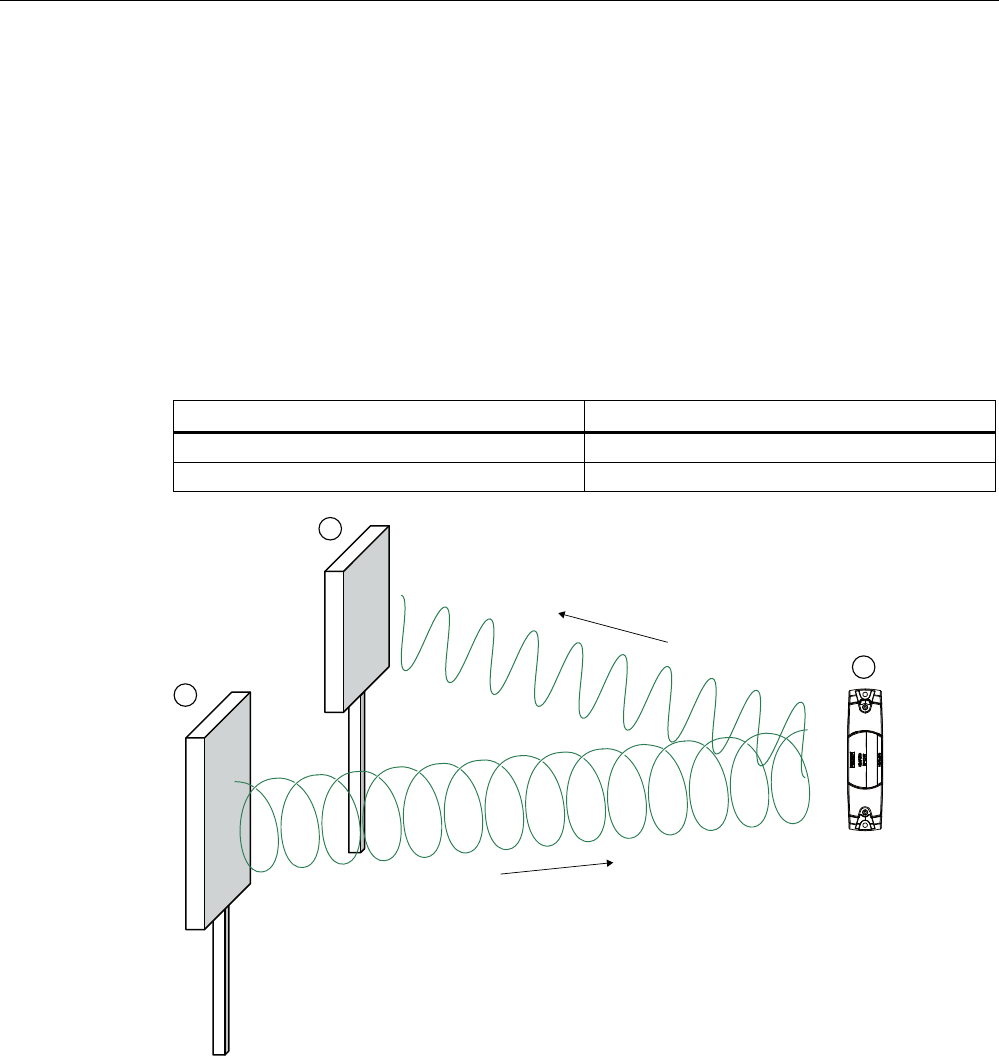
RF600 system planning
4.3 Antenna configurations
SIMATIC RF600
System Manual, 05/2012, J31069-D0171-U001-A13-7618 63
Selection of circular polarized antenna
If the orientation of the transponder is unknown, or if an alternating orientation can be
expected, the transmit and receive antennas must have circular polarization.
When selecting a circular antenna, the polarization purity must be observed in addition to the
polarization direction. A differentiation is made between left-hand and right-hand circular
polarization (LHCP and RHCP). The two types cannot be combined in the same system. On
the other hand, selection of the polarization direction is insignificant if the antenna system of
a transponder is linearly polarized. With actual antennas, elliptical polarization is
encountered rather than the ideal circular polarization. A measure of this is the ratio between
the large and small main axes of the ellipse, the axial ratio (AR), which is frequently specified
as a logarithm.
Axial ratio AR
Ideal 0 dB
Real 2-3 dB
Figure 4-7 Circular polarization of antenna system and transponder
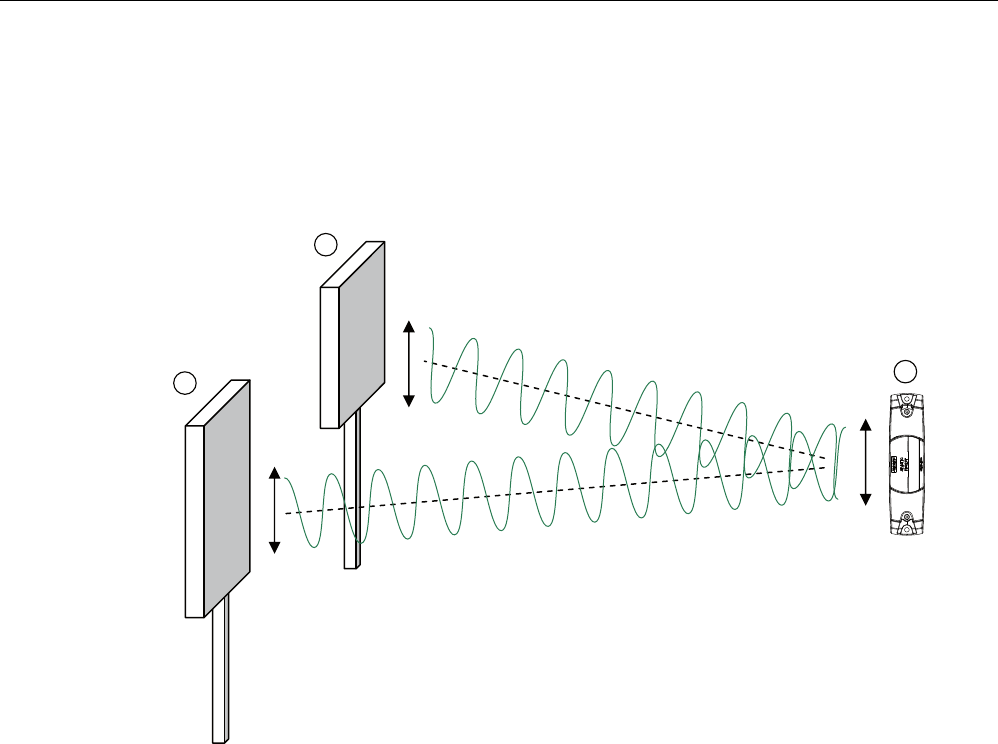
RF600 system planning
4.3 Antenna configurations
SIMATIC RF600
64 System Manual, 05/2012, J31069-D0171-U001-A13-7618
Selection of linear polarized antenna
When using linear polarized antennas, you must always make sure that the transmitter
antenna, receiver antenna and transponder have identical polarizations (vertical or
horizontal). As a result of the principle used, no special requirements need be observed to
suppress the orthogonal components (cross-polarization).
① Transmitter antenna, vertical polarization
② Receiver antenna, vertical polarization
③ Transponder dipole
Figure 4-8 Homogenous vertical polarization of antenna system and transponder
Front-to-back ratio
Definition
As a result of their design, directional antennas not only transmit electromagnetic waves in
the main beam direction but also in other directions, particularly in the reverse direction. The
largest possible suppression of these spurious lobes is expected in order to reduce faults
and to keep the influence on other radio fields low. This attenuation of spurious lobes in the
opposite direction to the main beam is called the front-to-back ratio.
Specifications
Requirement: The front-to-back ratio must be ≥ 10 dB. This requirement also applies to
spurious lobes illustrated by the following graphics in Section Half-value width (Page 65).
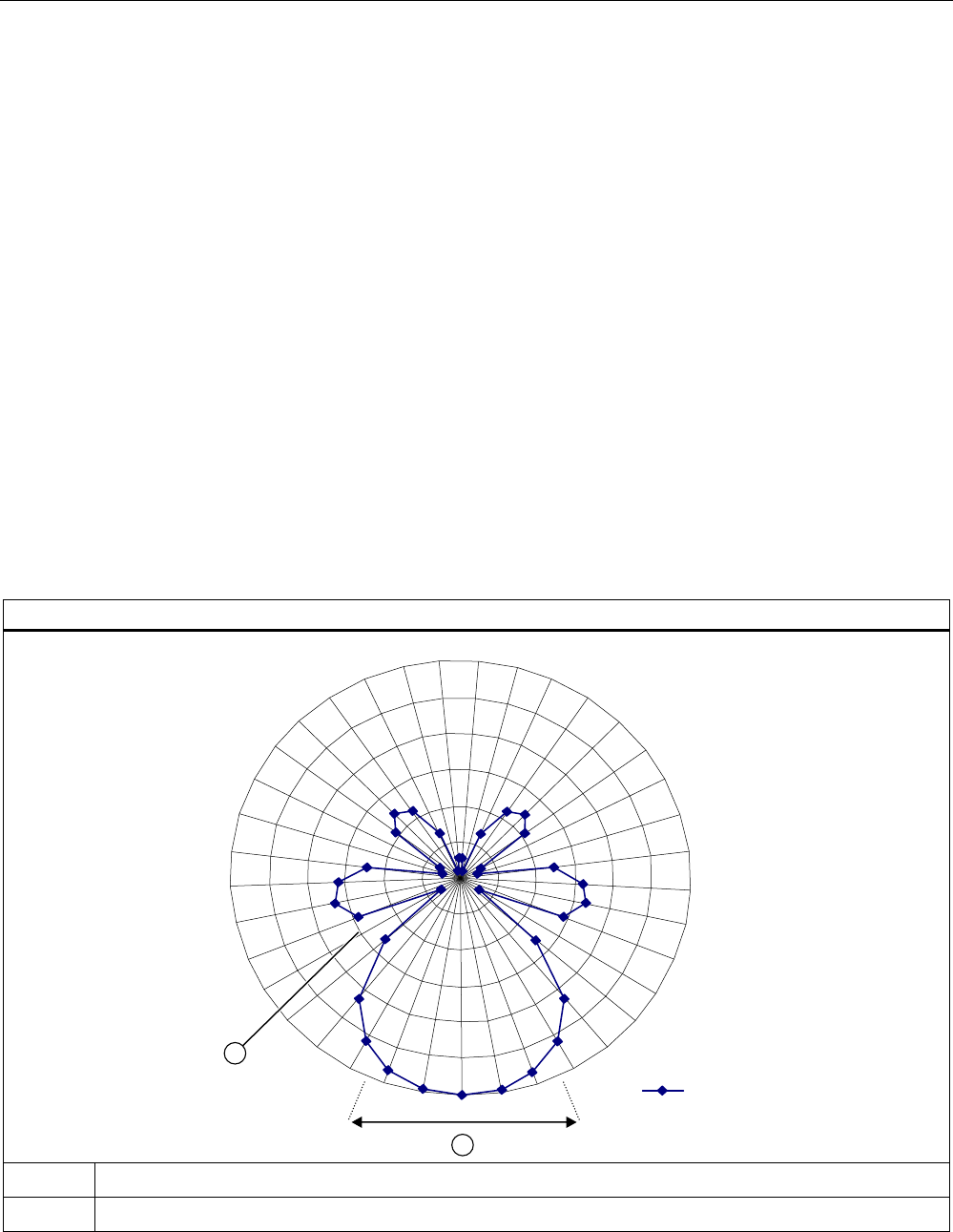
RF600 system planning
4.3 Antenna configurations
SIMATIC RF600
System Manual, 05/2012, J31069-D0171-U001-A13-7618 65
Half-value width
Definition
A further description of the directional characteristic is the beam width. The beam width is
the beam angle at which half the power (-3 dB) is radiated referred to the maximum power.
The antenna gain is directly related to the beam width. The higher the antenna gain, the
smaller the beam angle.
Coupling in ETSI
In ETSI EN 302 208 (release version V1.2.1 2008-06), the radiated power is coupled to the
beam width, i.e.
● Radiated power 500-2000 mW ERP: beam width ≤ 70 degrees
The beam width requirement applies to both the horizontal and vertical planes. The FCC
directives do not envisage coupling with the beam width.
The following graphics show examples of the directional radiation pattern of an antenna in
polar and linear representations for which both the horizontal and vertical planes must be
considered.
Directional radiation pattern in polar representation
0+]
① Beam width
② Spurious lobe
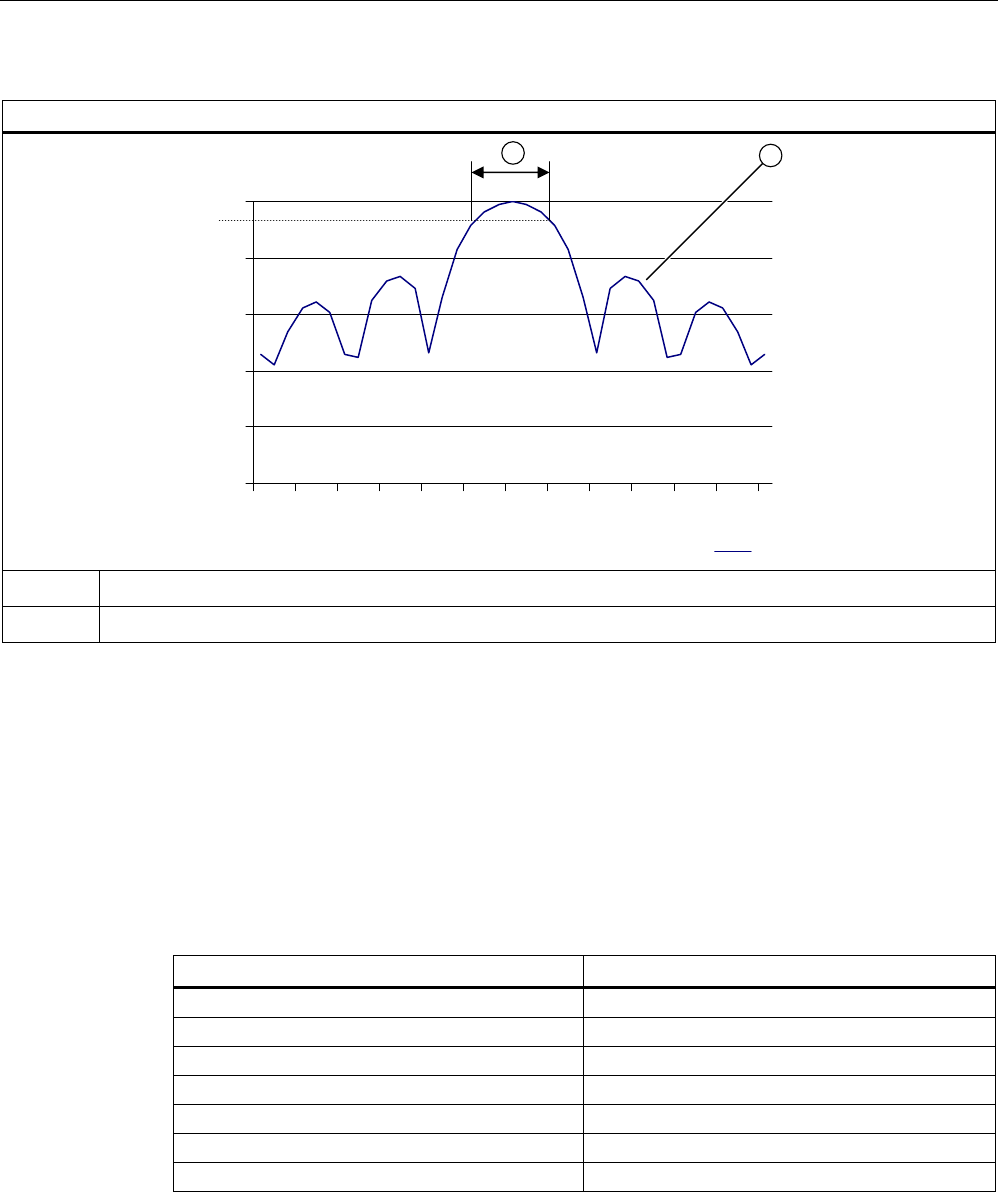
RF600 system planning
4.3 Antenna configurations
SIMATIC RF600
66 System Manual, 05/2012, J31069-D0171-U001-A13-7618
Directional radiation pattern in linear representation
0+]
3KLGHJ
*DLQG%
① Beam width
② Spurious lobe
Interpretation of directional radiation patterns
The following overview table will help you with the interpretation of radiation patterns.
The table shows which dBi values correspond to which read/write ranges (in %): You can
read the radiated power depending on the reference angle from the directional radiation
patterns, and thus obtain information on the read/write range with this reference angle with
regard to a transponder.
The dBr values correspond to the difference between the maximum dBi value and a second
dBi value.
Deviation from maximum antenna gain [dBr] Read/write range [%]
0 100
-3 70
-6 50
-9 35
-12 25
-15 18
-18 13
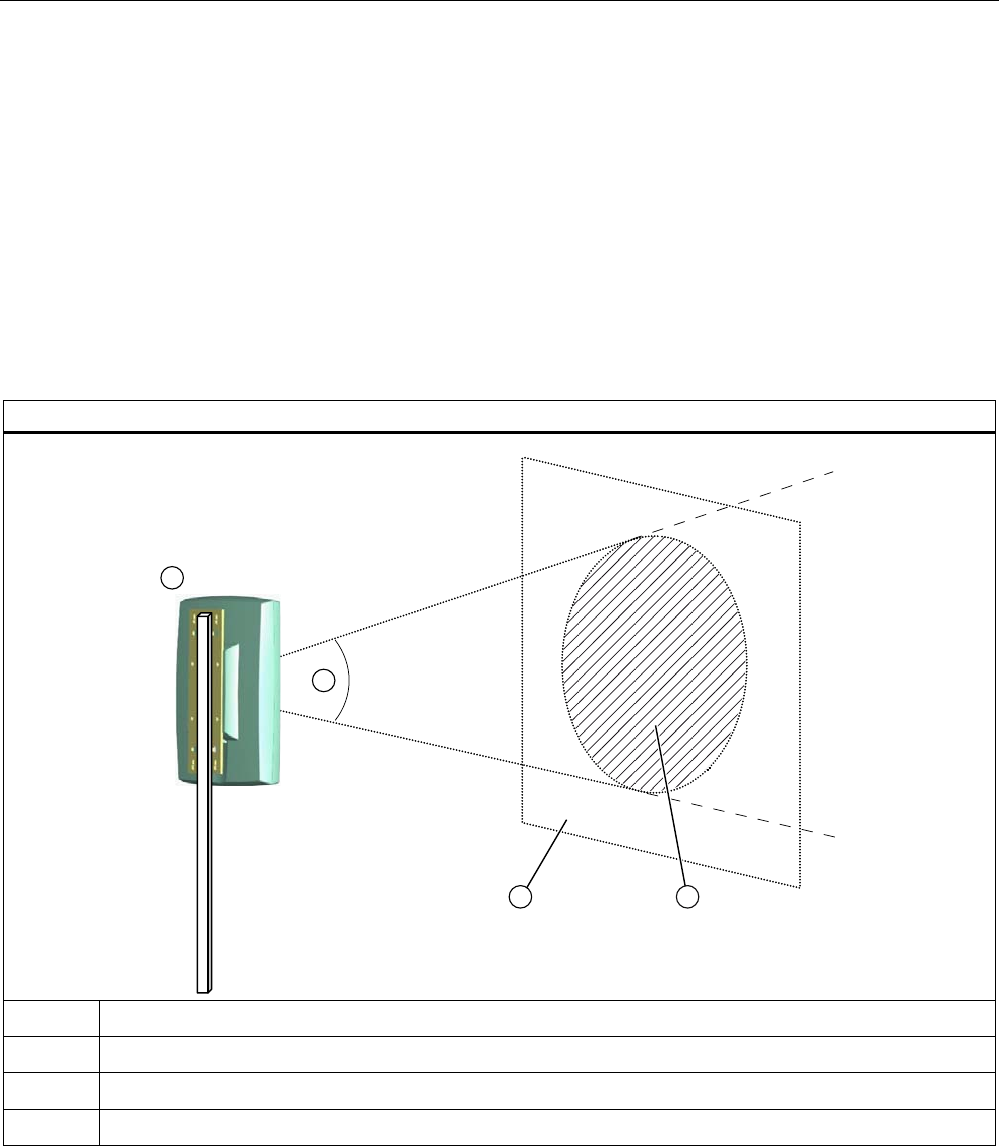
RF600 system planning
4.3 Antenna configurations
SIMATIC RF600
System Manual, 05/2012, J31069-D0171-U001-A13-7618 67
Example
As one can see in the antenna diagrams (polar or linear) above, the maximum antenna gain
0 dB is standardized. The dBr value -3 is shown graphically in both diagrams. At angles of
Phi = ± 35°, the range of the antenna is only 50% of the maximum range.
Specifications
Selection of the beam angle within the approval directives also has effects on the field of
application, since a larger beam angle allows a larger area to be covered by RFID
transponders. The following graphic clarifies the cross-section of the beam cone with the
covered area.
Beam angle: cross-section of the beam cone with the covered area
G%
① Third-party antenna
② Beam angle
③ Covered area
④ Activation or reading range
The reading range depends on the horizontal and vertical beam widths in the case of equal
distances from the transmitter antenna. Depending on the mechanical mounting and the ratio
between the vertical beam width ① and the horizontal beam width ②, read areas result as
shown in the following graphic:
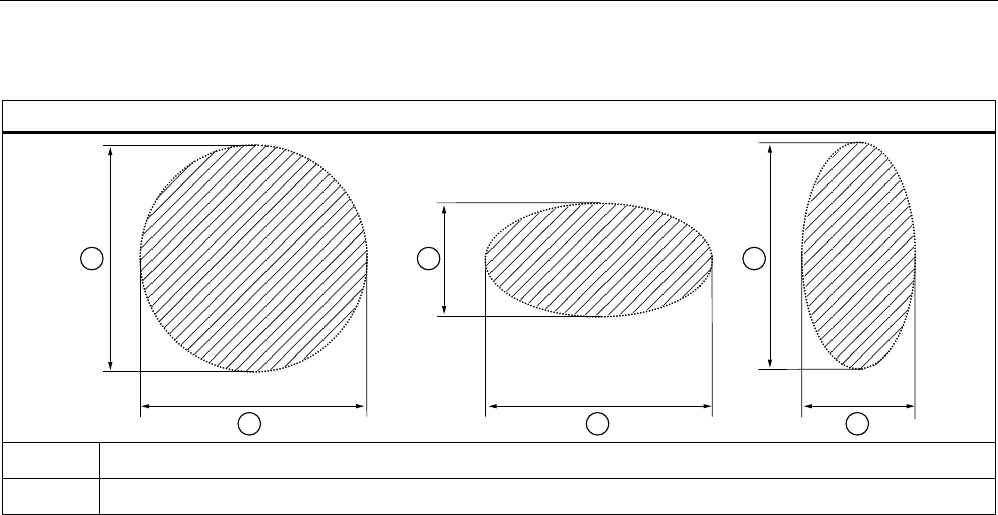
RF600 system planning
4.3 Antenna configurations
SIMATIC RF600
68 System Manual, 05/2012, J31069-D0171-U001-A13-7618
Read area depending on the beam width
① Vertical beam width
② Horizontal beam width
4.3.9.5 Antenna cables
Selection criteria
You must observe the criteria listed below when selecting the appropriate antenna cable for
your third-party antenna.
Characteristic impedance
Definition
If the input impedance of a device does not agree with the cable impedance, reflections
occur which reduce the power transmission and can result in the appearance of resonance
and thus to a non-linear frequency response.
Specifications
● You must only use coaxial antenna cables when connecting a third-party antenna.
● This antenna cable must have a nominal characteristic impedance of Z = 50 Ohm.
Antenna cable loss
In order to be able to transmit the available UHF power from the RF600 reader to the
antenna(s), the antenna cable loss must not exceed a value of approx. 4 dB.

RF600 system planning
4.3 Antenna configurations
SIMATIC RF600
System Manual, 05/2012, J31069-D0171-U001-A13-7618 69
Dependency of the cable loss
The cable loss depends on two important factors:
● External characteristics of cable. These includes the cable length, diameter and design.
● As a result of the physical principle, the cable loss is also frequency-dependent, i.e. the
cable loss increases at higher transmitter frequencies. Therefore the cable loss must be
specified in the frequency band from 860 to 960 MHz.
Cable vendors usually provide tables or calculation aids for their types of cable which usually
include the transmitter and receiver frequencies as well as the cable length. Therefore
contact your cable vendor in order to determine the appropriate type of cable using the
approximate value referred to above.
Notes on use
Shielding of the antenna cable
Coaxial antenna cables always have a shielded design and therefore radiate little of the
transmitted power to the environment.
Note
Cable with double shielding
You should therefore preferentially select cable with double shielding since this provides the
best damping.
Bending radius of the antenna cable
The properties of the cable shield are influenced by mechanical loading or bending. You
must therefore observe the static and dynamic bending radii specified by the cable vendor.
Connectors and adapters
You must use connectors and adapters of type "Reverse Polarity R-TNC" (male connector)
for your antenna cables from a third-party supplier in order to ensure correct connection to
the RF600 reader interface.
The figure below shows the standard for a suitable thread:
81()
You can find more information in the catalog data of your cable vendor.
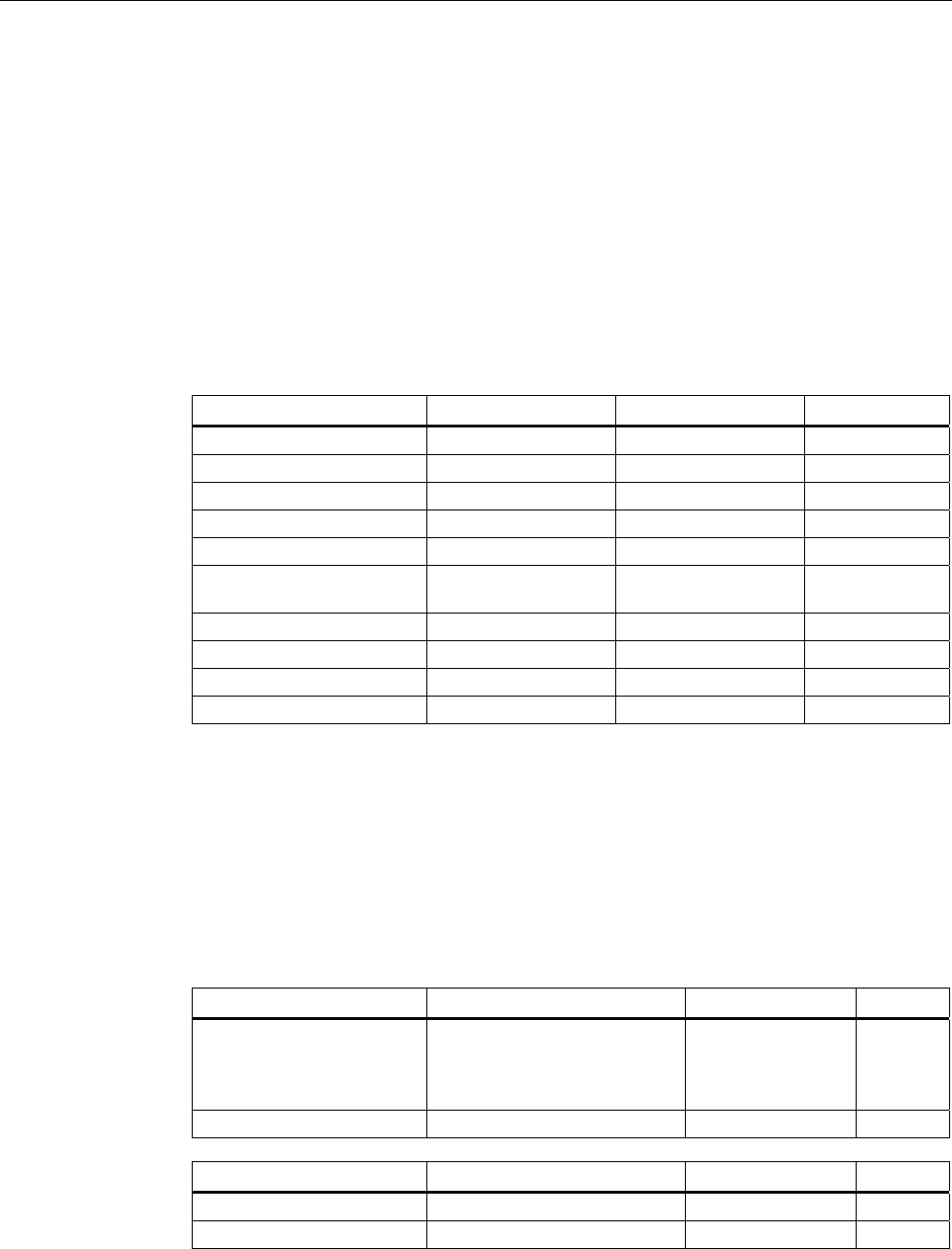
RF600 system planning
4.3 Antenna configurations
SIMATIC RF600
70 System Manual, 05/2012, J31069-D0171-U001-A13-7618
4.3.9.6 Application example
This section contains an example with specific values. Using this example it is possible to
understand how the complete selection procedure for antennas, cables, and adapters as
well as the settings could be carried out on an RF600 system reader.
In the example, it is assumed that you want to use your SIMATIC RF600 system with your
third-party components in Germany (ETSI EN 302 208 V1.3.1).
Procedure
1. Compare the technical specifications of your antenna with the values required by the
SIMATIC RF600 system.
Values Example antenna Required values OK?
Frequency range 865 to 870 MHz 865 to 868 MHz OK
Impedance 50 ohms 50 ohms OK
VSWR <1,5 <1,24 Not OK
Polarization Circular, right OK
Antenna gain 8.5 dBi >6 dBi OK
Half-value width
horizontal/vertical
63° ≤70° OK
Front-to-back ratio -18 dB ≥10 dB OK
Spurious lobe suppression -16 dB ≥10 dB OK
Axial ratio 2 dB ≤3 dB OK
Maximum power 6 W ≥4 W OK
Since the specific VSWR value of the antenna does not agree with the value required by
the system, you must have this value checked. Therefore contact your antenna vendor or
an EMC laboratory.
2. Compare the technical specifications of your cables and connectors with the values
required by the system.
For example, you can use cables of type "LMR-195" from the company "TIMES
MICROWAVE SYSTEMS". Suitable cables have e.g. an outer diameter of 5 mm. The
company offers various designs of cables depending on the requirements. Numerous
connectors are also available for their cables.
Values Example cable Required values OK?
Cable attenuation 36.5 dB / 100 m at 900 MHz
With an assumed length of
10 m, this results in a loss of
3.65 dB.
≤4 dB OK
Impedance 50 ohms 50 ohms OK
Values Example connector OK?
Type of plug on reader side R-TNC socket R-TNC plug OK
Type of plug on antenna side N socket N plug OK

RF600 system planning
4.4 Environmental conditions for transponders/tags
SIMATIC RF600
System Manual, 05/2012, J31069-D0171-U001-A13-7618 71
3. Set the following parameter values depending on the reader you are using:
– Assigning parameters for the RF640R/RF670R using the RF-MANAGER Basic V2
Antenna gain: 8.5 dBi
Cable loss: 4 dB (due to adaptation and damping losses of the connectors)
– Set parameters for the RF640R/RF670R using the XML command "setAntennaConfig"
In the XML command "setAntenneConfig", the following must be set for the antenna
port being used:
(antenna number="1 ... 4"), antenna gain (gain="8.5") and cable loss
(cableLoss="4.0").
Cable loss: 4 dB (due to adaptation and damping losses of the connectors)
– Setting parameters for RF620R/RF630R using SIMATIC commands
Since according to ETSI EN 302 208 V1.3.1 the maximum permissible radiated power
is 2 W ERP, none of the transmit power settings available to the user
(distance_limiting) can cause the required maximum permitted radiated power value to
be exceeded. The exact radiated power of the reader, together with the antenna
cables and antenna used, results from the value used in distance_limiting 0-F and the
calculation in the section "Antenna parameters".
4. You must subsequently have your desired system requirements measured and verified
according to EN 302 308 in an absorber chamber.
You may only use your SIMATIC RF600 system with the new third-party components
when this has been carried out.
4.4 Environmental conditions for transponders/tags
Basic rules
The transponder/tag must not be placed directly on metal surfaces or on containers of liquid.
For physical reasons, a minimum distance must be maintained between the tag antenna and
conductive material. A minimum distance of 5 cm is recommended. The tag operates better
when the distance is greater (between 5 and 20 cm).
● Tag assembly on non-conductive material (plastic, wood) has a tendency to be less
critical than assembly even on poorly conductive material.
● The best results are achieved on the materials specified by the tag manufacturer.
● You can obtain more detailed information from the tag manufacturer.

RF600 system planning
4.5 The response of electromagnetic waves in the UHF band
SIMATIC RF600
72 System Manual, 05/2012, J31069-D0171-U001-A13-7618
4.5 The response of electromagnetic waves in the UHF band
4.5.1 The effect of reflections and interference
Reflections and interference
Electromagnetic waves in the UHF band behave and propagate in a similar manner to light
waves, that is they are reflected from large objects such as ceilings, floors, walls and
windows and interfere with each other. Due to the nature of electromagnetic waves,
interference can lead to wave amplification which can produce an increased reading range.
In the worst case, interference can also result in waves being extinguished which causes
holes in reader coverage.
Reflections can also be beneficial when they cause electromagnetic waves to be routed
around objects to a certain extent (deflection). This can increase the reading probability.
Due to these electromagnetic characteristics, it is extremely difficult in the multiple-reflection
environment that is usually found in the real environment on site, to determine propagation
paths and field strengths for a particular location.
Reducing the effect of reflections/interference on tag identification
● Reducing the transmit power:
To reduce interference to a minimum, we recommend that the transmitter power of the
reader is reduced until it is sufficient for an identification rate of 100%.
● Increasing the number of antennas to 3 or 4:
More antennas in a suitable antenna configuration can prevent gaps in reader coverage.
4.5.2 Influence of metals
Metal can have an effect on the electromagnetic field depending on the arrangement or
environment. The effect ranges from a hardly determinable influence through to total
blocking of communication. The term metal in this context also includes metallized materials
that are either coated with metal or shot through with metal to such an extent that UHF
radiation cannot penetrate or only to a minimal extent.
The effect of metal on the electromagnetic field can be prevented as follows:
● Do not mount tags on metal.
● Do not place metallic or conducting objects in the propagation field of the antenna and
transponder.

RF600 system planning
4.5 The response of electromagnetic waves in the UHF band
SIMATIC RF600
System Manual, 05/2012, J31069-D0171-U001-A13-7618 73
Tags mounted directly onto metal
In general, tags must not be mounted directly onto metallic surfaces. Due to the nature of the
magnetic field, a minimum distance must be maintained between the tag antenna and
conductive materials. For further details on the special case of attaching transponders to
electrically conducting materials, see Section Auto-Hotspot and SectionAuto-Hotspot .
In the case of transponders that are not designed for mounting on metallic materials, the
minimum permissible distance from metal is 5 cm. The larger the distance between the
transponder and the metallic surface, the better the function of the transponder.
4.5.3 Influence of liquids and non-metallic substances
Non-metallic substances can also affect the propagation of electromagnetic waves.
When non-metallic substances or objects are located in the propagation field that can absorb
UHF radiation, these can alter the antenna field depending on their size and distance and
can even extinguish the field entirely.
The high-frequency damping effect of water and materials with a water content, ice and
carbon is high. Electromagnetic energy is partly reflected and absorbed.
Liquids and petroleum-based oils have low HF damping. Electromagnetic waves penetrate
the liquid and are only slightly weakened.
4.5.4 Influence of external components
The R&TTE guideline and the relevant standards govern the electromagnetic compatibility
requirements. This also concerns the external components of the RF600 system. Even
though the requirements for electromagnetic compatibility have been specified, various
components will still interfere with each other.
The performance of the RF600 system is highly dependent on the electromagnetic
environment of the antennas.
Reflections and interference
On the one hand, antenna fields will be weakened by absorbing materials and reflected by
conducting materials. When electromagnetic fields are reflected, the antenna field and
reflecting fields overlap (interference).
External components in the same frequency band
On the other hand, external components can transmit on the same frequency band as the
reader. Or the external components can transmit in different frequency bands with side
bands that overlap with the frequency band of the reader. This results in a reduction of the
"signal-to-noise" ratio which reduces the performance of an RF600 system.
If a DECT station that is transmitting in the 2 GHz band, for example, is located in the
receiving range of an antenna of the RF600 system, the performance of the write and read
accesses to the transponder will be affected.

RF600 system planning
4.6 Regulations applicable to frequency bands
SIMATIC RF600
74 System Manual, 05/2012, J31069-D0171-U001-A13-7618
4.6 Regulations applicable to frequency bands
The following section describes the regulations for frequency bands which apply in different
regions with reference to RFID. It presents the definition of the applicable standard, the
precise channel assignments as well as the applicable technique.
4.6.1 Regulations for UHF frequency bands in Europe
This revision of the standard EN 302 208 also supports RFID systems with multiple readers
operating simultaneously. Within the frequency spectrum, 4 exclusive RFID channels are
defined.
Regulations for frequency ranges according to EN 302 208 as of V1.2.1
ETSI (European Telecommunications Standards Institute)
Specifications according to European standard EN 302 208:
● UHF band: 865 to 868 MHz
● Radiated power: max. 2 W (ERP)
● Channel bandwidth: 200 KHz, channel spacing 600 kHz
● Number of channels: 4
– 865.7
– 866.3
– 866,9
– 867,5
Channel assignment
● The UHF band from 865 to 868 MHz with 4 RFID channels occupies:
:(53
5HDGHUVLJQDO
7DJUHVSRQVH
0+]
0+]
0+]
0+]
Validity
Note that readers are operated with this setting since November 4, 2008 (publication of the
standard in the Official Journal of the European Union).
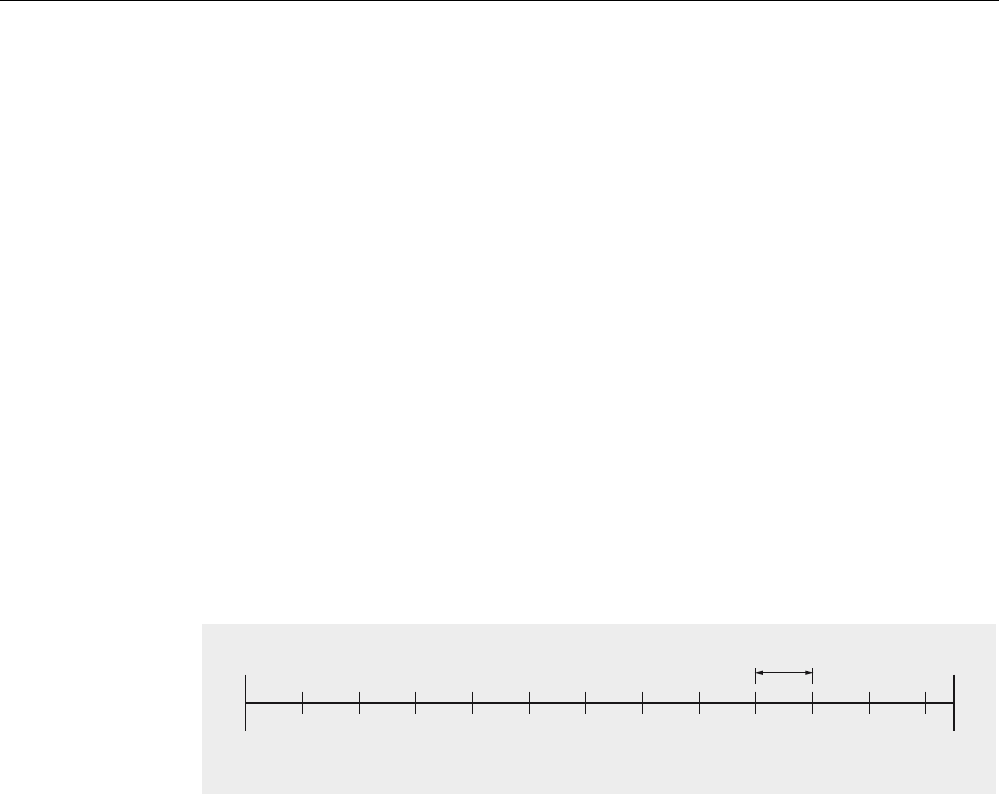
RF600 system planning
4.6 Regulations applicable to frequency bands
SIMATIC RF600
System Manual, 05/2012, J31069-D0171-U001-A13-7618 75
4.6.2 Regulations for UHF frequency ranges in Argentina
The regulations for the UHF frequency range in Argentina are identical to the Regulations for
UHF frequency bands in the USA (Page 81).
4.6.3 Regulations for UHF frequency ranges in Bolivia
The regulations for the UHF frequency range in Bolivia are identical to the Regulations for
UHF frequency bands in the USA (Page 81).
4.6.4 Regulations for UHF frequency ranges in Brazil
FCC subband (Federal Communications Commission)
● UHF band: 515.25 to 527.75 MHz
● Radiated power: max. 4 W (EIRP)
● Number of channels: 26
● Frequency hopping
N+]
0+] 0+]FKDQQHOV
PD[:(,53
Frequency hopping
This technique is intended to prevent mutual interference between readers. The reader
changes its transmission channel in a random or programmed sequence (FHSS). 26
available channels mean that the probability is low that two readers will be operating on the
same frequency.
4.6.5 Regulations for UHF frequency ranges in Canada
Regulations for UHF frequency ranges in Canada are identical to the Regulations for UHF
frequency bands in the USA (Page 81).
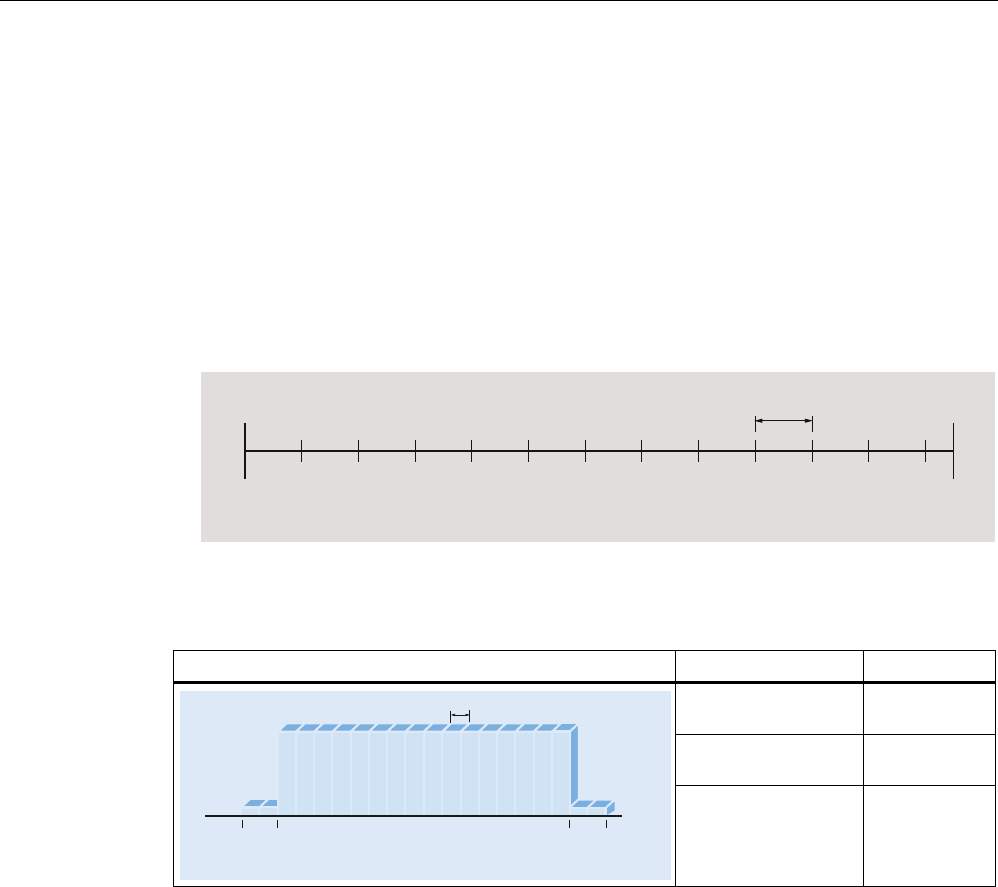
RF600 system planning
4.6 Regulations applicable to frequency bands
SIMATIC RF600
76 System Manual, 05/2012, J31069-D0171-U001-A13-7618
4.6.6 Regulations for UHF frequency bands in China
Regulations for UHF frequency ranges in China
FCC subband (Federal Communications Commission)
● UHF band: 920.125 to 924.875 MHz in 250 kHz channel blocks.
● Radiated power: max. 2 W (ERP)
● Number of channels: 16 to max. 2 W (ERP), 20 to max. 0.1 W (ERP)
● Frequency hopping
N+]
0+] 0+].DQ¦OHELVPD[:(53
.DQ¦OHELVPD[:(53
PD[:(53
Channel assignment
Sub bands Frequency range Power
920.125 to 920.375
MHz
0.1 W ERP
920.625 to 924.375
MHz
2.0 W ERP
: :
:
0+]
0+]
0+]
N+]
0+]
924.625 to 924.875
MHz
0.1 W ERP
Frequency hopping
This technique is intended to prevent mutual interference between readers. The reader
changes its transmission channel in a random or programmed sequence (FHSS). With 16
available channels that can be used simultaneously at up to 2000 mW (ERP) and with 20
channels that can be used simultaneously at up to 100 mW, the probability of two readers
operating on the same frequency is reduced.

RF600 system planning
4.6 Regulations applicable to frequency bands
SIMATIC RF600
System Manual, 05/2012, J31069-D0171-U001-A13-7618 77
4.6.7 Regulations for UHF frequency ranges in India
This regulation for UHF frequencies in India operates based on the standard ETSI EN 302
208 V1.3.1. It also supports RFID systems with multiple readers operating simultaneously.
Within the frequency spectrum, 10 exclusive RFID channels are defined.
Regulations for frequency ranges in India
Based on European standard ETSI EN 302 208 V1.3.1:
● UHF band: 865 to 866 MHz
● Transmit power: max. 1 W
● Radiated power: < 4 W (EIRP)
● Channel bandwidth: 200 KHz, channel spacing 200 kHz
● Number of channels: 10
– 865,1
– 865,3
– 865,5
– 865,7
– 865,9
– 866,1
– 866,3
– 866,5
– 866,7
– 866,9
Channel assignment
● The UHF band from 865 to 866 MHz is occupied with 10 RFID channels:
:
0+]
0+]
4.6.8 Regulations for UHF frequency ranges in Mexico
Regulations for UHF frequency ranges in Mexico are identical to the Regulations for UHF
frequency bands in the USA (Page 81).

RF600 system planning
4.6 Regulations applicable to frequency bands
SIMATIC RF600
78 System Manual, 05/2012, J31069-D0171-U001-A13-7618
4.6.9 Regulations for UHF frequency ranges in Russia
This regulation for UHF frequencies in Russia operates based on the standard ETSI EN 302
208 V1.3.1. It also supports RFID systems with multiple readers operating simultaneously.
Within the frequency spectrum, 8 exclusive RFID channels are defined.
Regulations for frequency ranges according to EN 302 208 V1.3.1
Based on European standard ETSI EN 302 208 V1.3.1:
● UHF band: 866 to 867 MHz
● Radiated power: max. 2 W (ERP)
● Channel bandwidth: 200 KHz, channel spacing 200 kHz
● Number of channels: 8
– 866,1
– 866,3
– 866,5
– 866,7
– 866,9
– 867,1
– 867,3
– 867,5
Channel assignment
● The UHF band from 866 to 867 MHz is occupied with 8 RFID channels:
:
0+]
0+]
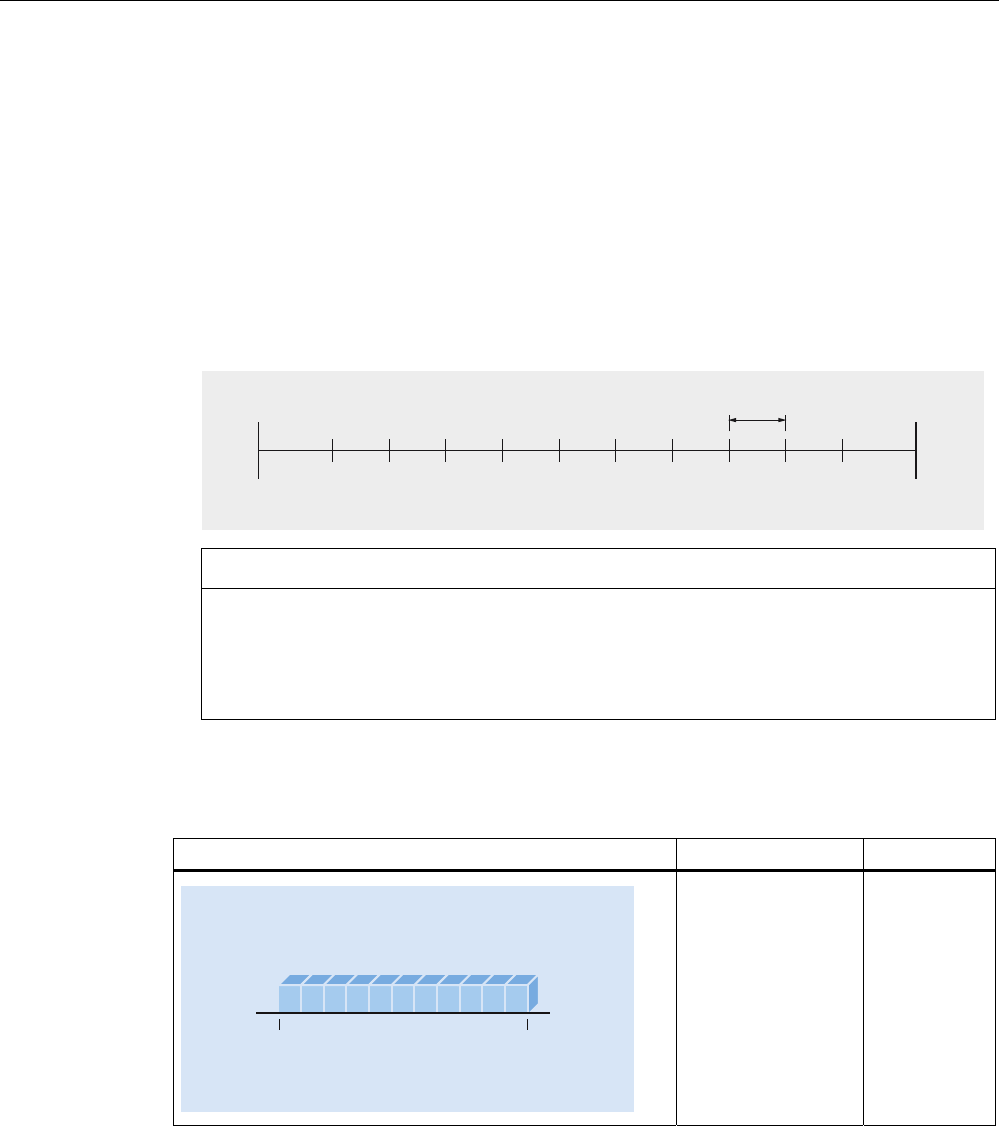
RF600 system planning
4.6 Regulations applicable to frequency bands
SIMATIC RF600
System Manual, 05/2012, J31069-D0171-U001-A13-7618 79
4.6.10 Regulations for UHF frequency bands in Singapore (866-869 MHz band)
Regulations applicable to frequency ranges
Based on European standard ETSI EN 302 208 V1.3.1:
● UHF band: 866.1 to 867.9 MHz
● Radiated power: max. 0.5 W (ERP)
● Channel bandwidth: 200 kHz
● Number of channels: 10
N+]
0+] 0+]FKDQQHOV
PD[:(53
NOTICE
Exceeding the maximum permitted radiated power of 0.5 W ERP
If you want to use this profile with a RF600 reader, during configuration you must make
sure tha a maximum of 0.5 W (ERP) is used.
Also ensure that you use no channels outside of the specified frequency band.
Channel assignment
Sub bands Frequency range Power
:
0+]
0+]
866.1 to 867.9 MHz 0.5 W ERP
4.6.11 Regulations for UHF frequency ranges in South Africa
Regulations for UHF frequency ranges in South Africa are identical to the Regulations for
UHF frequency bands in Europe (Page 74).
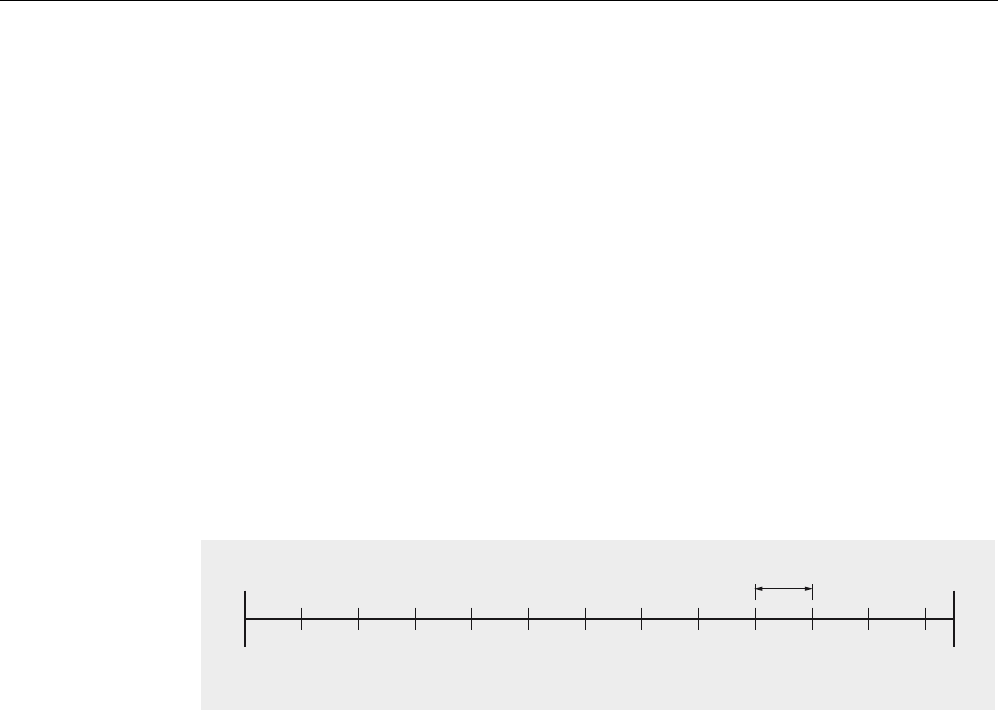
RF600 system planning
4.6 Regulations applicable to frequency bands
SIMATIC RF600
80 System Manual, 05/2012, J31069-D0171-U001-A13-7618
4.6.12 Regulations for UHF frequency ranges in South Korea
This regulation for UHF frequency ranges in South Korea operates in the FCC subband. It
also supports RFID systems with multiple readers operating simultaneously. Within the
frequency spectrum, 16 exclusive RFID channels are defined. The maximum channel dwell
time is 400 ms.
FCC subband (Federal Communications Commission):
● UHF band: 917.3 to 920.3 MHz
● Radiated power: < 4 W (EIRP)
● Channel bandwidth: 200 kHz
● Number of channels: > 6 (max. 16)
Channel assignment
● The UHF band of 917.3 to 920.3 MHz is occupied with up to 16 RFID channels of which
at least 7 channels must be used:
N+]
0+] 0+]FKDQQHOV
b:(,53
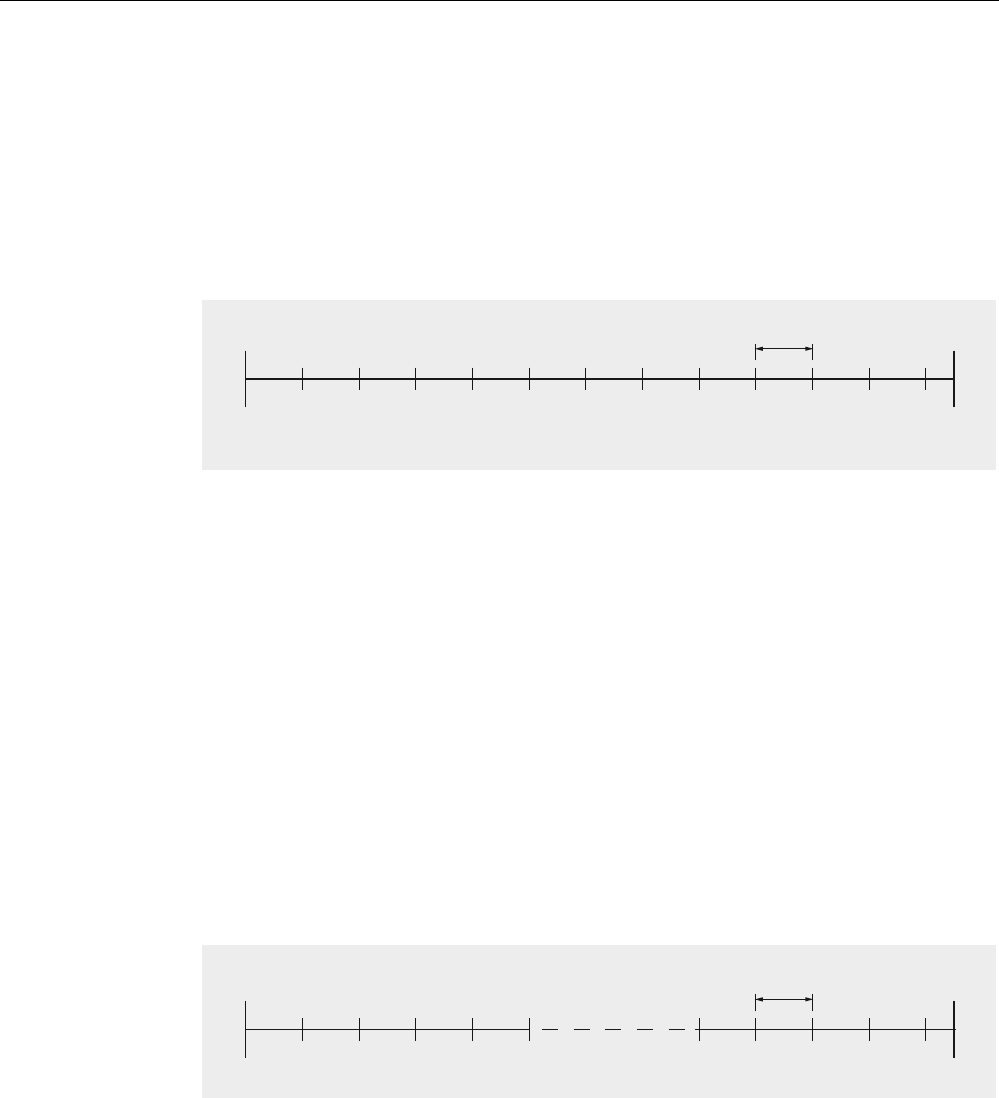
RF600 system planning
4.6 Regulations applicable to frequency bands
SIMATIC RF600
System Manual, 05/2012, J31069-D0171-U001-A13-7618 81
4.6.13 Regulations for UHF frequency bands in Thailand
FCC (Federal Communications Commission)
● UHF band: 920.25 to 924.75 MHz
● Radiated power: max. 4 W (EIRP)
● Number of channels: 10
● Frequency hopping
N+]
0+] 0+]FKDQQHOV
PD[:(,53
Frequency hopping
This technique is intended to prevent mutual interference between readers. The reader
changes its transmission channel in a random or programmed sequence (FHSS). 10
available channels mean that the probability is low that two readers will be operating on the
same frequency.
4.6.14 Regulations for UHF frequency bands in the USA
FCC (Federal Communications Commission)
● UHF band: 902 to 928 MHz
● Radiated power: max. 4 W (EIRP)
● Number of channels: 50
● Frequency hopping
N+]
0+] 0+]FKDQQHOV
0D[:(,53b
Frequency hopping
This technique is intended to prevent mutual interference between readers. The reader
changes its transmission channel in a random or programmed sequence (FHSS). 50
available channels mean that the probability is low that two readers will be operating on the
same frequency.

RF600 system planning
4.7 Guidelines for electromagnetic compatibility (EMC)
SIMATIC RF600
82 System Manual, 05/2012, J31069-D0171-U001-A13-7618
4.7 Guidelines for electromagnetic compatibility (EMC)
4.7.1 Overview
These EMC Guidelines answer the following questions:
● Why are EMC guidelines necessary?
● What types of external interference have an impact on the system?
● How can interference be prevented?
● How can interference be eliminated?
● Which standards relate to EMC?
● Examples of interference-free plant design
The description is intended for "qualified personnel":
● Project engineers and planners who plan system configurations with RFID modules and
have to observe the necessary guidelines.
● Fitters and service engineers who install the connecting cables in accordance with this
description or who rectify defects in this area in the event of interference.
NOTICE
Failure to observe notices drawn to the reader's attention can result in dangerous
conditions in the plant or the destruction of individual components or the entire plant.
4.7.2 What does EMC mean?
The increasing use of electrical and electronic devices is accompanied by:
● Higher component density
● More switched power electronics
● Increasing switching rates
● Lower power consumption of components due to steeper switching edges
The higher the degree of automation, the greater the risk of interaction between devices.
Electromagnetic compatibility (EMC) is the ability of an electrical or electronic device to
operate satisfactorily in an electromagnetic environment without affecting or interfering with
the environment over and above certain limits.

RF600 system planning
4.7 Guidelines for electromagnetic compatibility (EMC)
SIMATIC RF600
System Manual, 05/2012, J31069-D0171-U001-A13-7618 83
EMC can be broken down into three different areas:
● Intrinsic immunity to interference:
immunity to internal electrical disturbance
● Immunity to external interference:
immunity to external electromagnetic disturbance
● Degree of interference emission:
emission of interference and its effect on the electrical environment
All three areas are considered when testing an electrical device.
The RFID modules are tested for conformity with the limit values required by the CE and
RTTE guidelines. Since the RFID modules are merely components of an overall system, and
sources of interference can arise as a result of combining different components, certain
guidelines have to be followed when setting up a plant.
EMC measures usually consist of a complete package of measures, all of which need to be
implemented in order to ensure that the plant is immune to interference.
Note
The plant manufacturer is responsible for the observance of the EMC guidelines; the plant
operator is responsible for radio interference suppression in the overall plant.
All measures taken when setting up the plant prevent expensive retrospective modifications
and interference suppression measures.
The plant operator must comply with the locally applicable laws and regulations. They are
not covered in this document.
4.7.3 Basic rules
It is often sufficient to follow a few elementary rules in order to ensure electromagnetic
compatiblity (EMC).
The following rules must be observed:
Shielding by enclosure
● Protect the device against external interference by installing it in a cabinet or housing.
The housing or enclosure must be connected to the chassis ground.
● Use metal plates to shield against electromagnetic fields generated by inductances.
● Use metal connector housings to shield data conductors.

RF600 system planning
4.7 Guidelines for electromagnetic compatibility (EMC)
SIMATIC RF600
84 System Manual, 05/2012, J31069-D0171-U001-A13-7618
Wide-area ground connection
● Plan a meshed grounding concept.
● Bond all passive metal parts to chassis ground, ensuring large-area and low-HF-
impedance contact.
● Establish a large-area connection between the passive metal parts and the central
grounding point.
● Don't forget to include the shielding bus in the chassis ground system. That means the
actual shielding busbars must be connected to ground by large-area contact.
● Aluminium parts are not suitable for ground connections.
Plan the cable installation
● Break the cabling down into cable groups and install these separately.
● Always route power cables, signal cables and HF cables through separated ducts or in
separate bundles.
● Feed the cabling into the cabinet from one side only and, if possible, on one level only.
● Route the signal cables as close as possible to chassis surfaces.
● Twist the feed and return conductors of separately installed cables.
● Routing HF cables:
avoid parallel routing of HF cables.
● Do not route cables through the antenna field.
Shielding for the cables
● Shield the data cables and connect the shield at both ends.
● Shield the analog cables and connect the shield at one end, e.g. on the drive unit.
● Always apply large-area connections between the cable shields and the shielding bus at
the cabinet inlet and make the contact with clamps.
● Feed the connected shield through to the module without interruption.
● Use braided shields, not foil shields.
Line and signal filter
● Use only line filters with metal housings
● Connect the filter housing to the cabinet chassis using a large-area low-HF-impedance
connection.
● Never fix the filter housing to a painted surface.
● Fix the filter at the control cabinet inlet or in the direction of the source.
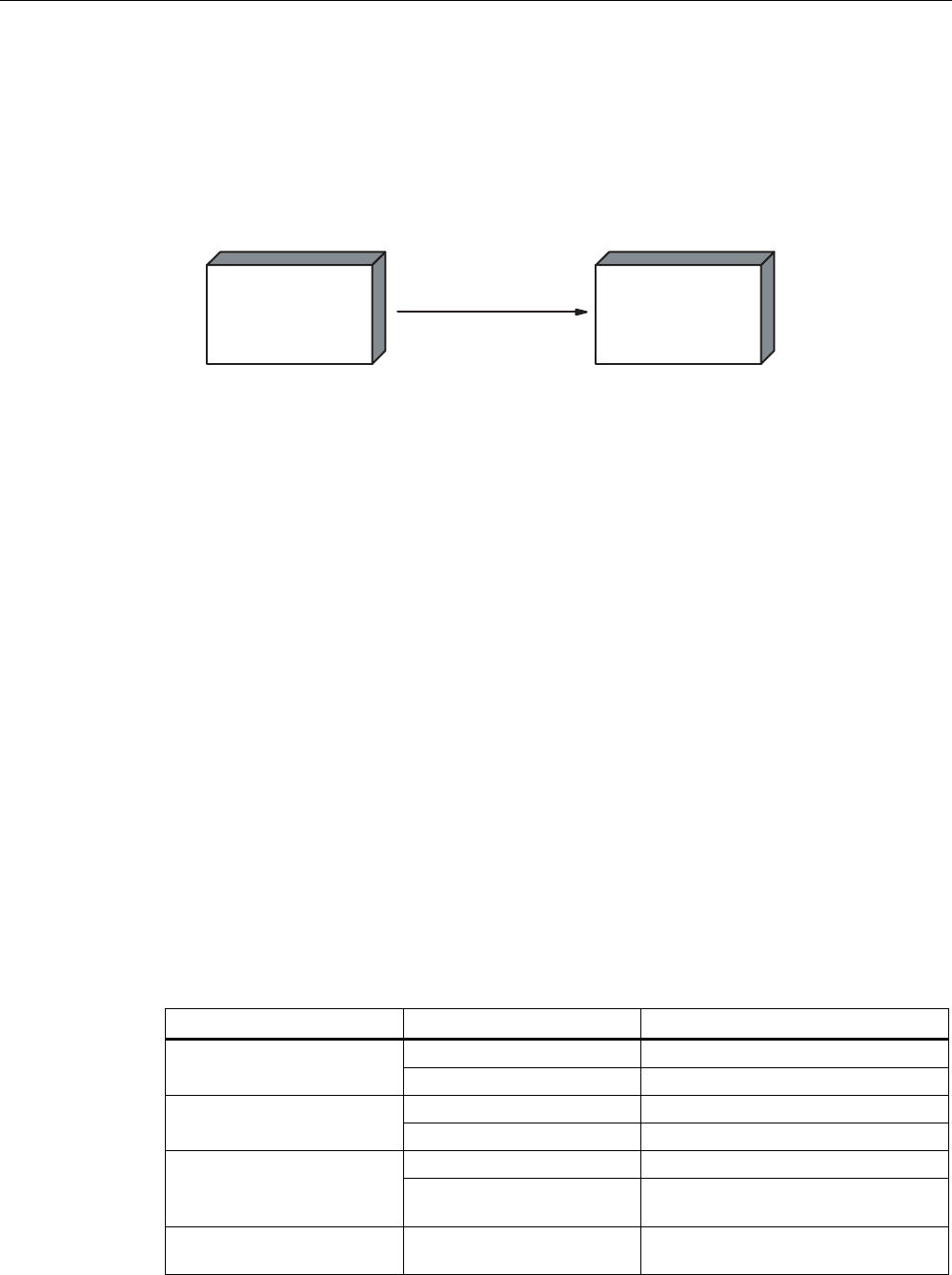
RF600 system planning
4.7 Guidelines for electromagnetic compatibility (EMC)
SIMATIC RF600
System Manual, 05/2012, J31069-D0171-U001-A13-7618 85
4.7.4 Propagation of electromagnetic interference
Three components have to be present for interference to occur in a system:
● Interference source
● Coupling path
● Interference sink
HJFRQQHFWLQJFDEOH
,QWHUIHUHQFHVRXUFH
GHYLFHHPLWWLQJ
LQWHUIHUHQFH
&RXSOLQJSDWK
HJGULYHXQLW HJUHDGHU
,QWHUIHUHQFHVLQN
GHYLFHDIIHFWHGE\
LQWHUIHUHQFH
Figure 4-9 Propagation of interference
If one of the components is missing, e.g. the coupling path between the interference source
and the interference sink, the interference sink is unaffected, even if the interference source
is transmitting a high level of noise.
The EMC measures are applied to all three components, in order to prevent malfunctions
due to interference. When setting up a plant, the manufacturer must take all possible
measures in order to prevent the occurrence of interference sources:
● Only devices fulfilling limit class A of VDE 0871 may be used in a plant.
● Interference suppression measures must be introduced on all interference-emitting
devices. This includes all coils and windings.
● The design of the system must be such that mutual interference between individual
components is precluded or kept as small as possible.
Information and tips for plant design are given in the following sections.
Interference sources
In order to achieve a high level of electromagnetic compatibility and thus a very low level of
disturbance in a plant, it is necessary to recognize the most frequent interference sources.
These must then be eliminated by appropriate measures.
Table 4- 1 Interference sources: origin and effect
Interference source Interference results from Effect on the interference sink
Contacts System disturbances Contactors,
electronic valves Coils Magnetic field
Collector Electrical field Electrical motor
Winding Magnetic field
Contacts Electrical field Electric welding device
Transformer Magnetic field, system disturbance,
transient currents
Power supply unit, switched-
mode
Circuit Electrical and magnetic field, system
disturbance

RF600 system planning
4.7 Guidelines for electromagnetic compatibility (EMC)
SIMATIC RF600
86 System Manual, 05/2012, J31069-D0171-U001-A13-7618
Interference source Interference results from Effect on the interference sink
High-frequency appliances Circuit Electromagnetic field
Transmitter
(e.g. service radio)
Antenna Electromagnetic field
Ground or reference potential
difference
Voltage difference Transient currents
Operator Static charge Electrical discharge currents, electrical
field
Power cable Current flow Electrical and magnetic field, system
disturbance
High-voltage cable Voltage difference Electrical field
What interference can affect RFID?
Interference source Cause Remedy
Switched-mode power supply Interference emitted from the
current infeed
Replace the power supply
Cable is inadequately
shielded
Better cable shielding Interference injected through
the cables connected in
series The reader is not connected
to ground.
Ground the reader
HF interference over the
antennas
caused by another reader • Position the antennas further
apart.
• Erect suitable damping materials
between the antennas.
• Reduce the power of the readers.
Please follow the instructions in the
section
Installation guidelines/reducing
the effects of metal
Coupling paths
A coupling path has to be present before the disturbance emitted by the interference source
can affect the system. There are four ways in which interference can be coupled in:
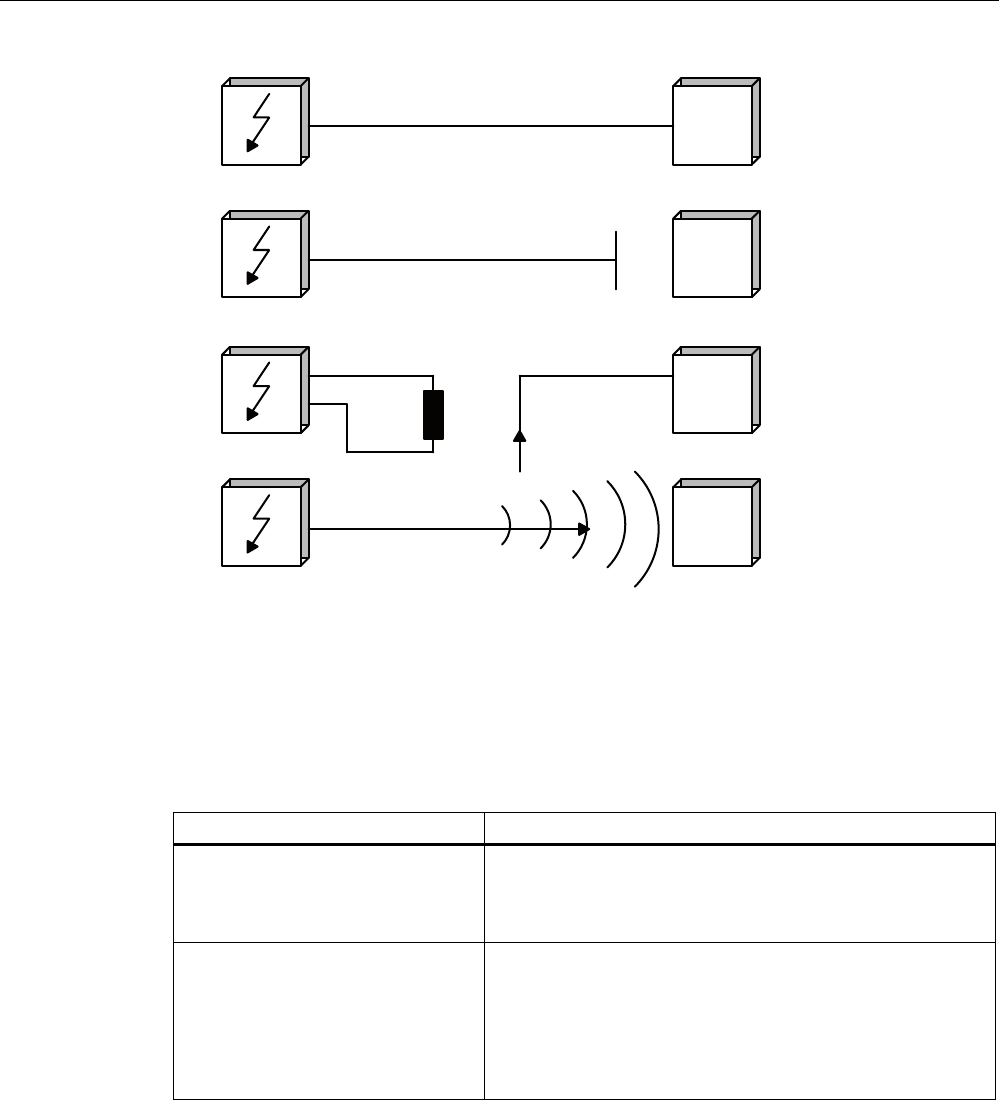
RF600 system planning
4.7 Guidelines for electromagnetic compatibility (EMC)
SIMATIC RF600
System Manual, 05/2012, J31069-D0171-U001-A13-7618 87
,
1
7
(
5
)
(
5
(
1
&
(
6
,
1
.
*DOYDQLFFRXSOLQJSDWK
&DSDFLWLYHFRXSOLQJSDWK
,QGXFWLYHFRXSOLQJSDWK
5DGLDWLRQFRXSOLQJ
5),'
5HDGHU
5),'
5HDGHU
5),'
5HDGHU
5),'
5HDGHU
,
1
7
(
5
)
(
5
(
1
&
(
6
2
8
5
&
(
Figure 4-10 Ways in which interference can be coupled in
When RFID modules are used, different components in the overall system can act as a
coupling path:
Table 4- 2 Causes of coupling paths
Coupling path Invoked by
Conductors and cables • Incorrect or inappropriate installation
• Missing or incorrectly connected shield
• Inappropriate physical arrangement of cables
Control cabinet or housing • Missing or incorrectly wired equalizing conductor
• Missing or incorrect earthing
• Inappropriate physical arrangement
• Components not mounted securely
• Unfavorable cabinet configuration
4.7.5 Prevention of interference sources
A high level of immunity to interference can be achieved by avoiding interference sources.
All switched inductances are frequent sources of interference in plants.
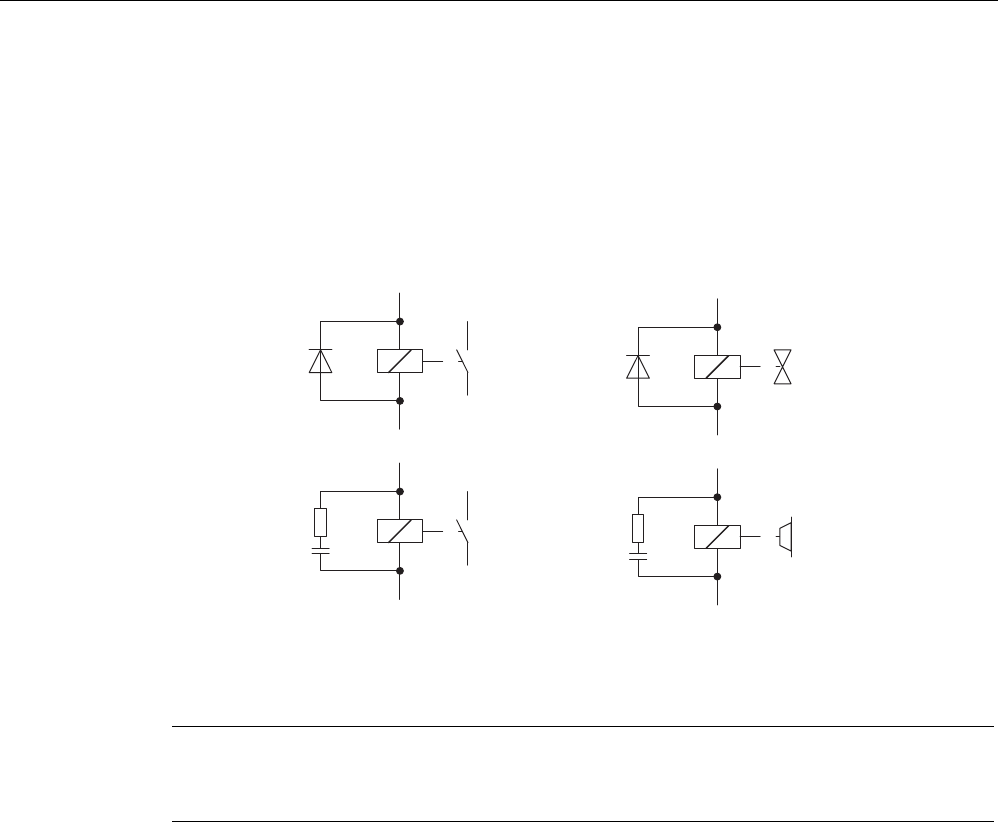
RF600 system planning
4.7 Guidelines for electromagnetic compatibility (EMC)
SIMATIC RF600
88 System Manual, 05/2012, J31069-D0171-U001-A13-7618
Suppression of inductance
Relays, contactors, etc. generate interference voltages and must therefore be suppressed
using one of the circuits below.
Even with small relays, interference voltages of up to 800 V occur on 24 V coils, and
interference voltages of several kV occur on 230 V coils when the coil is switched. The use
of freewheeling diodes or RC circuits prevents interference voltages and thus stray
interference on conductors installed parallel to the coil conductor.
9DOYHV
%UDNHV
5HOD\FRLOV
&RQWDFWRUV
Figure 4-11 Suppression of inductance
Note
All coils in the cabinet should be suppressed. The valves and motor brakes are frequently
forgotten. Fluorescent lamps in the control cabinet should be tested in particular.
4.7.6 Equipotential bonding
Potential differences between different parts of a plant can arise due to the different design
of the plant components and different voltage levels. If the plant components are connected
across signal cables, transient currents flow across the signal cables. These transient
currents can corrupt the signals.
Proper equipotential bonding is thus essential.
● The equipotential bonding conductor must have a sufficiently large cross section (at least
10 mm2).
● The distance between the signal cable and the associated equipotential bonding
conductor must be as small as possible (antenna effect).
● A fine-strand conductor must be used (better high-frequency conductivity).
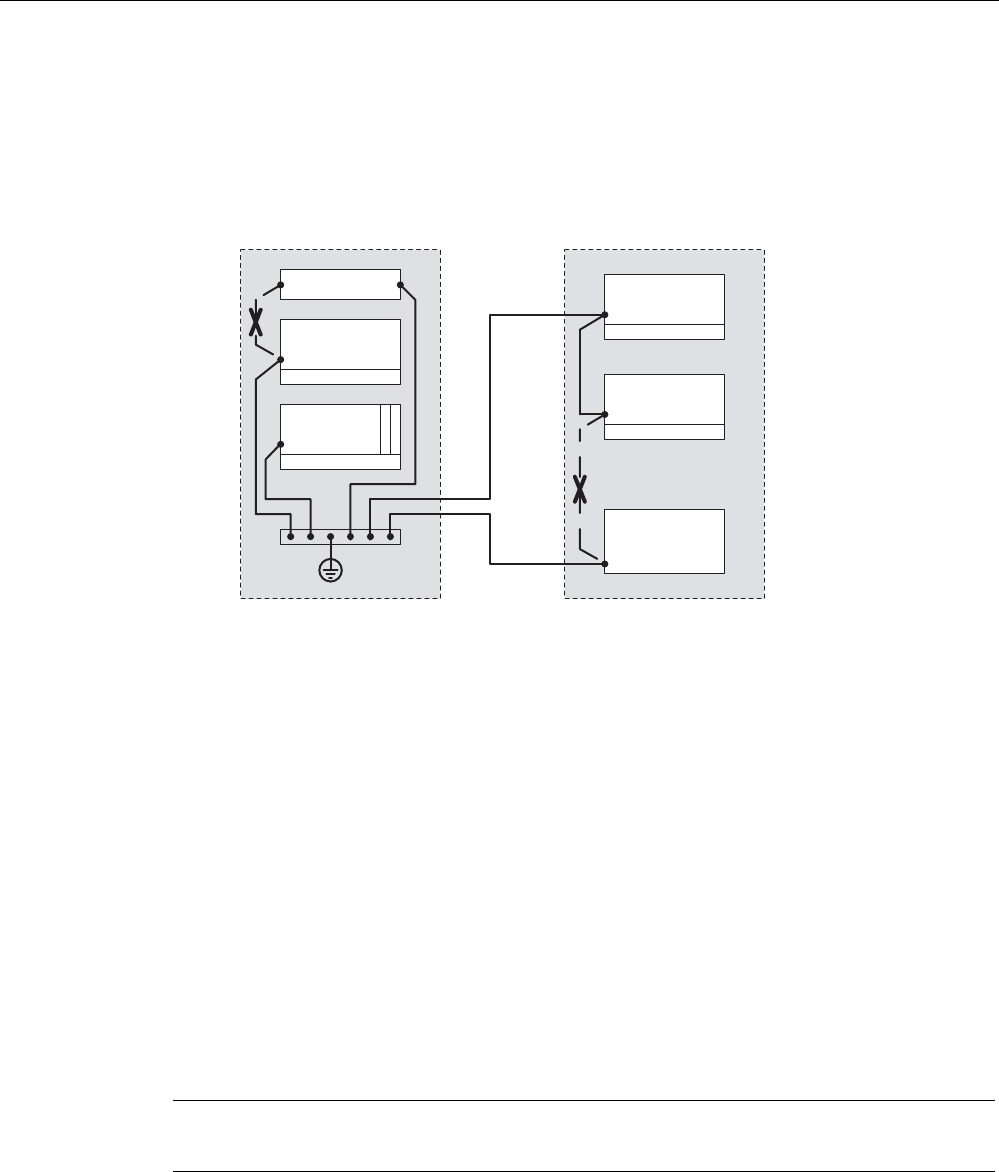
RF600 system planning
4.7 Guidelines for electromagnetic compatibility (EMC)
SIMATIC RF600
System Manual, 05/2012, J31069-D0171-U001-A13-7618 89
● When connecting the equipotential bonding conductors to the centralized equipotential
bonding strip (EBS), the power components and non-power components must be
combined.
● The equipotential bonding conductors of the separate modules must lead directly to the
equipotential bonding strip.
&DELQHW &DELQHW
,QFRUUHFW
3RZHUVXSSO\
'ULYH
'HYLFH
3/&
(%6
'HYLFH
'HYLFH
,QFRUUHFW
Figure 4-12 Equipotential bonding (EBS = Equipotential bonding strip)
The better the equipotential bonding in a plant, the smaller the chance of interference due to
fluctuations in potential.
Equipotential bonding should not be confused with protective earthing of a plant. Protective
earthing prevents the occurrence of excessive shock voltages in the event of equipment
faults whereas equipotential bonding prevents the occurrence of differences in potential.
4.7.7 Cable shielding
Signal cables must be shielded in order to prevent coupling of interference.
The best shielding is achieved by installing the cables in steel tubes. However, this is only
necessary if the signal cable is routed through an environment prone to particular
interference. It is usually adequate to use cables with braided shields. In either case,
however, correct connection is vital for effective shielding.
Note
An unconnected or incorrectly connected shield has no shielding effect.
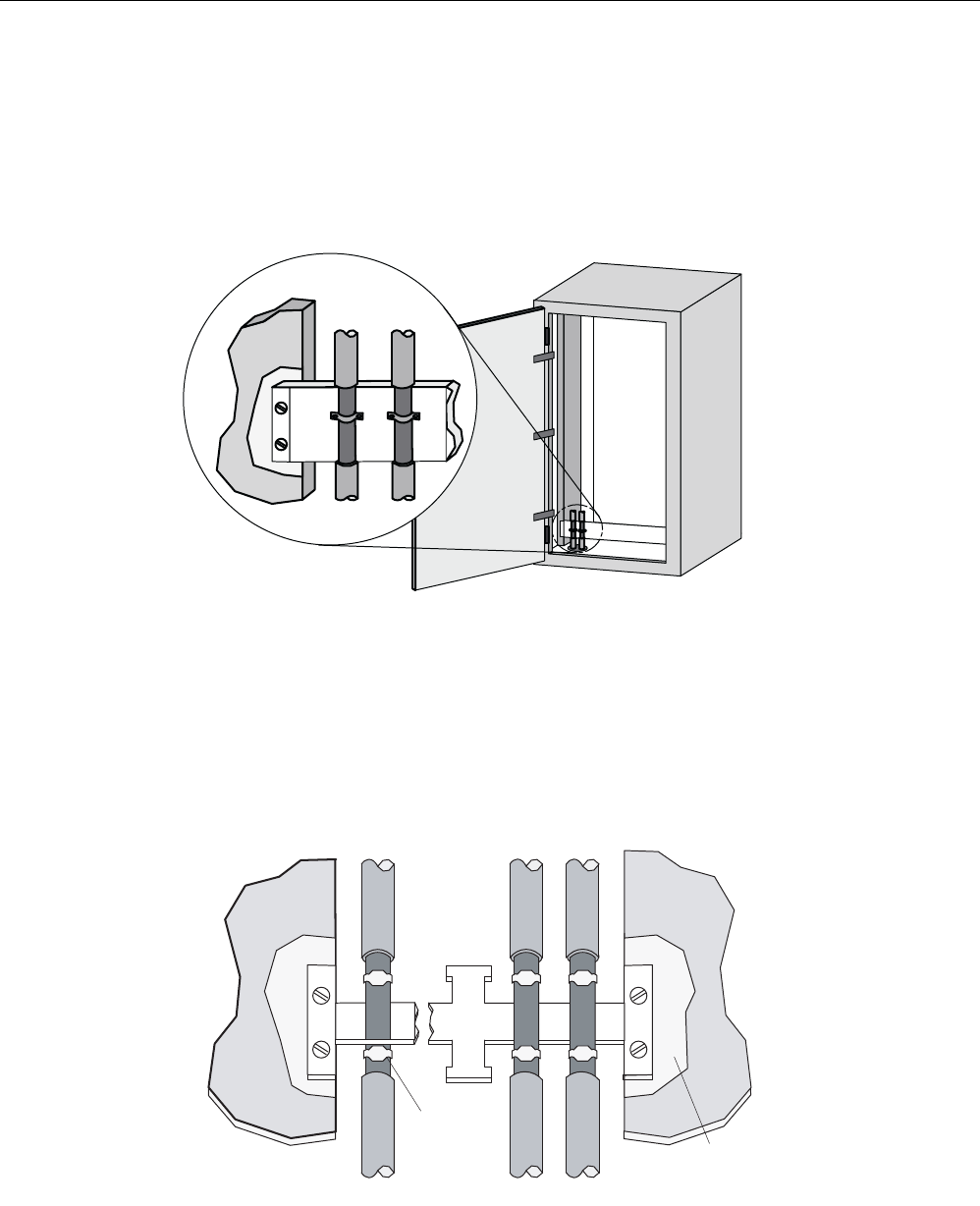
RF600 system planning
4.7 Guidelines for electromagnetic compatibility (EMC)
SIMATIC RF600
90 System Manual, 05/2012, J31069-D0171-U001-A13-7618
As a rule:
● For analog signal cables, the shield should be connected at one end on the receiver side
● For digital signals, the shield should be connected to the enclosure at both ends
● Since interference signals are frequently within the HF range (> 10 kHz), a large-area HF-
proof shield contact is necessary
Figure 4-13 Cable shielding
The shielding bus should be connected to the control cabinet enclosure in a manner allowing
good conductance (large-area contact) and must be situated as close as possible to the
cable inlet. The cable insulation must be removed and the cable clamped to the shielding
bus (high-frequency clamp) or secured using cable ties. Care should be taken to ensure that
the connection allows good conductance.
5HPRYHSDLQW
&DEOHWLH
Figure 4-14 Connection of shielding bus
The shielding bus must be connected to the PE busbar.
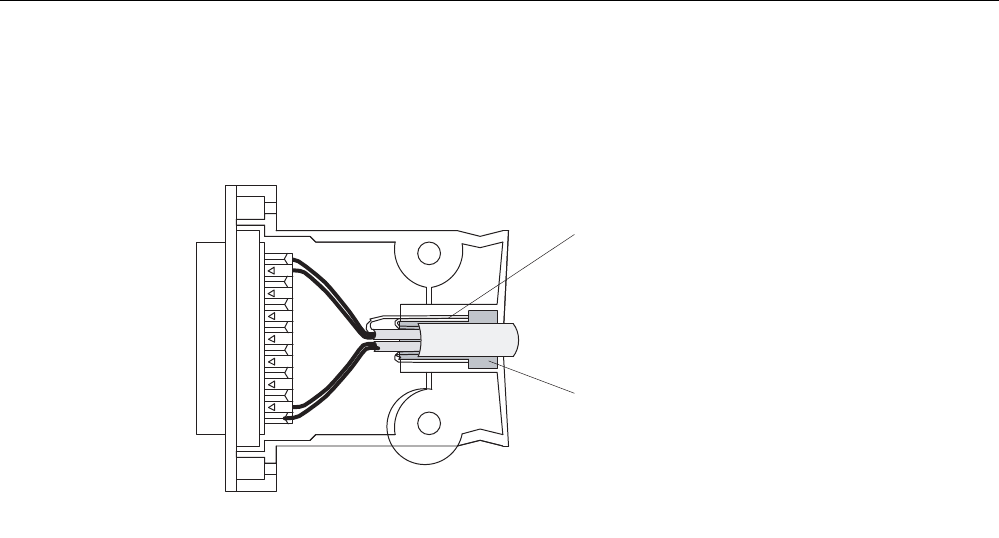
RF600 system planning
4.7 Guidelines for electromagnetic compatibility (EMC)
SIMATIC RF600
System Manual, 05/2012, J31069-D0171-U001-A13-7618 91
If shielded cables have to be interrupted, the shield must be continued via the corresponding
connector housing. Only suitable connectors may be used for this purpose.
6KLHOGWXUQHGXSVLGHGRZQ
WKURXJKrDQG
FRQQHFWHGWRFRQQHFWRU
KRXVLQJ
5XEEHUVOHHYH
Figure 4-15 Interruption of shielded cables
If intermediate connectors, which do not have a suitable shield connection, are used, the
shield must be continued by fixing cable clamps at the point of interruption. This ensures a
large-area, HF-conducting contact.

RF600 system planning
4.7 Guidelines for electromagnetic compatibility (EMC)
SIMATIC RF600
92 System Manual, 05/2012, J31069-D0171-U001-A13-7618
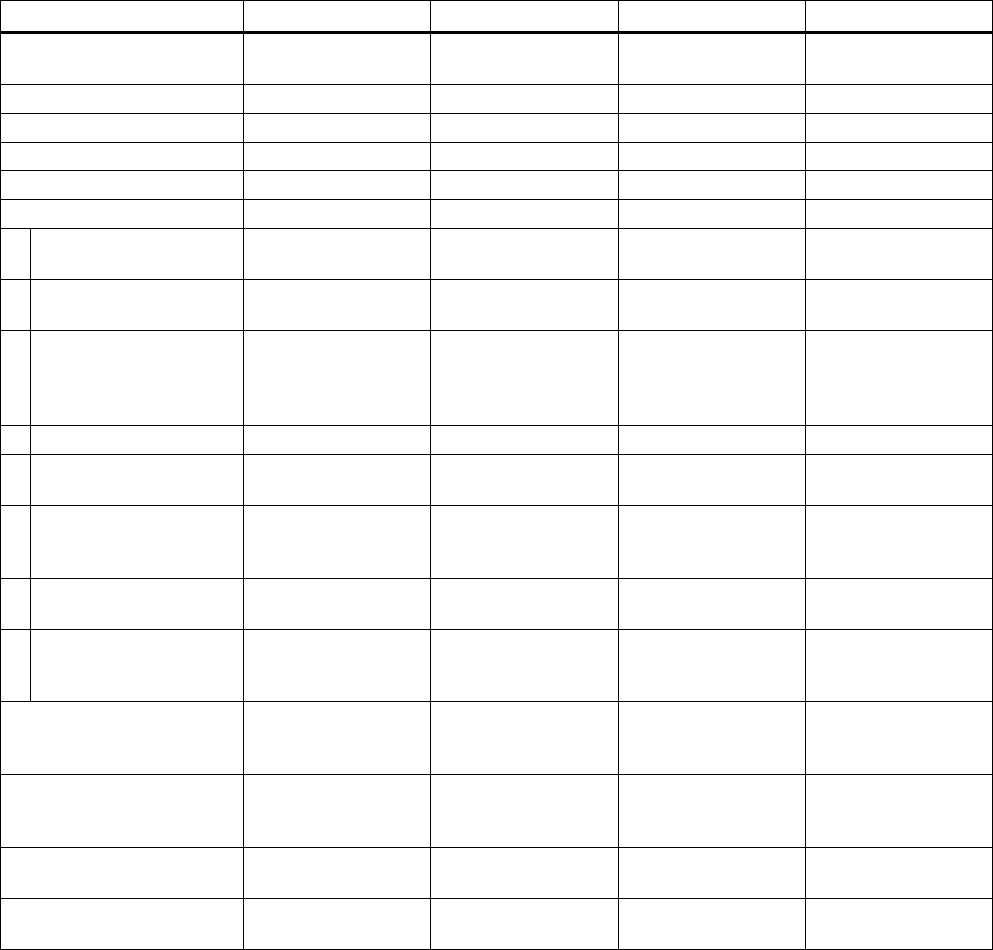
SIMATIC RF600
System Manual, 05/2012, J31069-D0171-U001-A13-7618 93
Readers 5
The following table shows the most important features of the stationary RF600 readers at a
glance:
Features SIMATIC RF670R SIMATIC RF640R SIMATIC RF630R SIMATIC RF620R
Air interface / standards
supported
EPCglobal Class 1
Gen 2
EPCglobal Class 1
Gen 2
EPCglobal Class 1
Gen 2
EPCglobal Class 1
Gen 2
ETSI variant Available Available Available Available
FCC variant Available Available Available Available
CMIIT variant Available Available Available Available
LEDs 1 1 1 1
Interfaces
Number of external
antennas via RTNC
4 1 2 1
Available internal
antennas
- 1 - 1
Ethernet 1 x RJ-45 connection
according to
IEC PAS 61076-3-
117
1 x RJ-45 connection
according to
IEC PAS 61076-3-
117
- -
RS232 - - - -
RS422 - - 1 x plug
(8-pin M12)
1 x plug
(8-pin M12)
Digital inputs 4 (12-pin M12)
log "0": 0…7 V
log "1": 15…24 V
2 (8-pin M12)
log "0": 0…7 V
log "1": 15…24 V
- -
Digital outputs (short-
circuit proof)
4 (12-pin M12)
24 V; 0.5 A each
2 (8-pin M12)
24 V; 0.5 A each
- -
Power supply 24 VDC (4-pin M12)
20 to 30 V (2.2 A)
external
24 VDC (4-pin M12)
20 to 30 V (2.2 A)
external
via CM
via CM
Max. radiated power
ETSI and CMIIT
in ERP
2 W ERP 1.6 W ERP 1)
2 W ERP
1.2 W ERP 0.8 W ERP 1)
1.2 W ERP
Max. radiated power
FCC
in EIRP
4 W EIRP 3.3 W EIRP 1)
4 W EIRP
2.0 W EIRP 1.3 W EIRP 1)
2 W EIRP)
max. transmit power
ETSI and CMIIT
30 dBm
1 W
30 dBm
1 W
27 dBm
0.5 W
27 dBm
0.5 W
max. transmit power
FCC
31 dBm
1.25 W
31 dBm
1.25 W
29 dBm
0.5 W
29 dBm
0.5 W
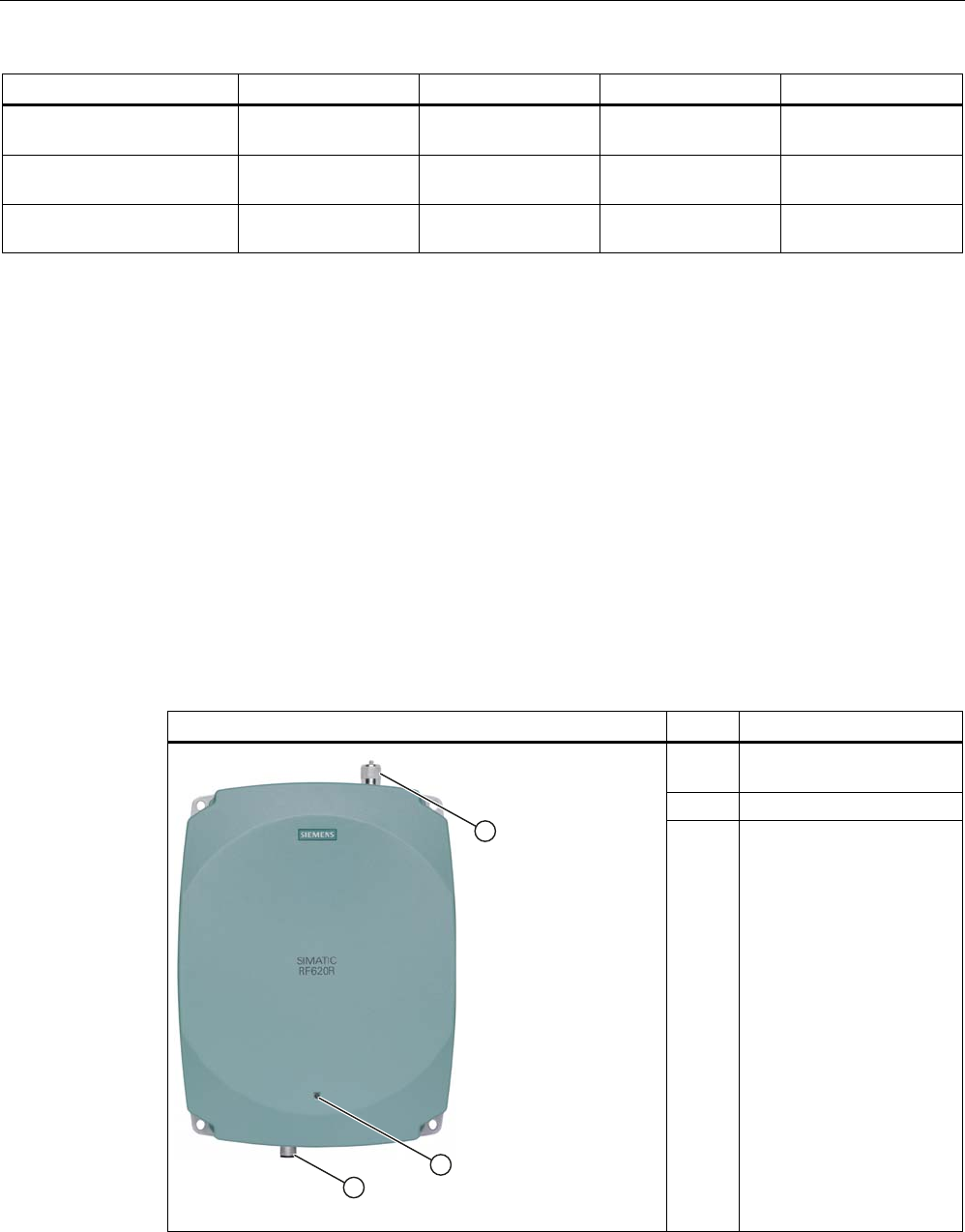
Readers
5.1 RF620R reader
SIMATIC RF600
94 System Manual, 05/2012, J31069-D0171-U001-A13-7618
Features SIMATIC RF670R SIMATIC RF640R SIMATIC RF630R SIMATIC RF620R
Max. transmission rate of
the communication interface
10/100 Mbps 10/100 Mbps 115.2 kbps 115.2 kbps
Max. data rate
reader-to-tag
80 Kbps (ETSI)
160 Kbps (FCC)
80 Kbps (ETSI)
160 Kbps (FCC)
40 kbps 40 kbps
Max. data rate
tag-to-reader
160 kbps (ETSI)
320 kbps (FCC)
160 kbps (ETSI)
320 kbps (FCC)
160 kbps 160 kbps
1) internal antenna
5.1 RF620R reader
5.1.1 Description
The SIMATIC RF620R is an active stationary reader in the UHF frequency range with an
integrated circular polarized antenna. For readers with the new hardware version (MLFB:
6GT2811-5BA00-xAA1), a maximum of one external UHF RFID antenna can be connected
via a TNC reverse connector as an alternative to the integrated antenna.
The maximum HF power output is 0.5 W at the reader output. The SIMATIC RF620R is
connected to a SIMATIC S7 controller via an ASM interface module. The degree of
protection is IP65.
Pos. Description
(1) TNC-reverse interface for
connection of ANT
(2) LED status indicator
(3) RS 422 interface
(8-pin M12 connector)
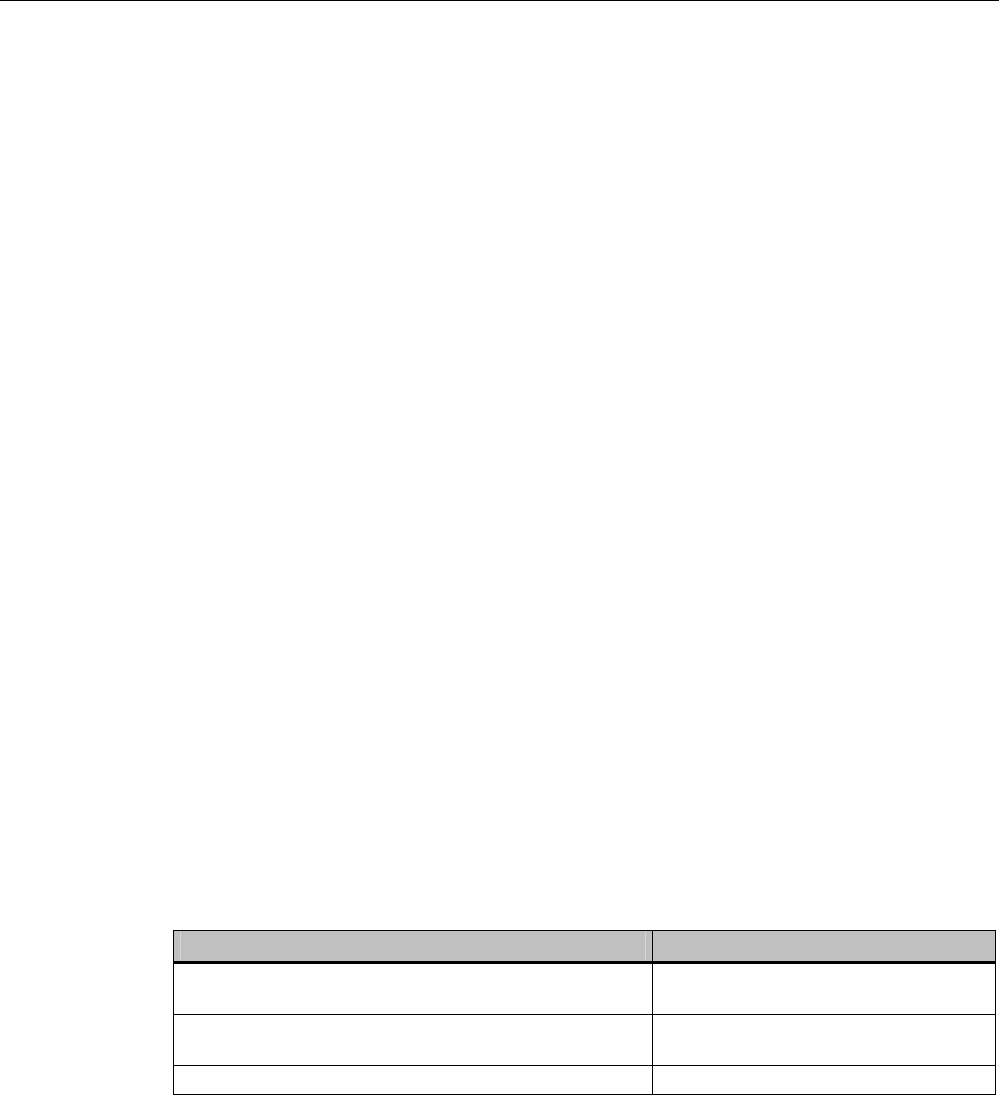
Readers
5.1 RF620R reader
SIMATIC RF600
System Manual, 05/2012, J31069-D0171-U001-A13-7618 95
Highlights
● The tags are read in accordance with the requirements of the EPCglobal Class 1, Gen 2
and ISO/IEC 18000-6C standards
● Supports low-cost SmartLabels as well as reusable, rugged data media
● High reading speed: Depending on the function block (multitag mode), many tags can be
detected simultaneously (bulk reading), rapidly moving tags are reliably acquired.
● The RF620R (ETSI) "6GT2811-5BA00-0AAx" is suitable for the frequency band 865 to
868 MHz UHF (EU, EFTA, Turkey). The reader supports the ETSI EN 302 208 V1.2.1 (4-
channel plan) standard as well as the ETSI EN 302 208 V1.3.1 standard (4-channel
plan).
● The RF620R (FCC) "6GT2811-5BA00-1AAx" is suitable for the frequency bands 902 to
928 MHz.
● The RF620R (CMIIT) "6GT2811-5BA00-2AA1" is suitable for the frequency band 920.125
to 924.875 MHz (China)
● An external antenna can be connected and configured as an alternative to the internal
antenna for RF620R "6GT2811-5BA00-xAA1"
● IP65 degree of protection for reader
● Can be used for a high temperature range
● Dense Reader Mode (DRM) for environments in which many readers are operated in
close proximity to each other
● TIA system interface:
– RS 422
5.1.1.1 Ordering data
Ordering data RF620R
Product Order number
RF620R (ETSI) reader for EU, EFTA, Turkey 6GT2811-5BA00-0AA0
6GT2811-5BA00-0AA1
RF620R (FCC) reader for North America 6GT2811-5BA00-1AA0
6GT2811-5BA00-1AA1
RF620R (CMIIT) reader for China 6GT2811-5BA00-2AA1

Readers
5.1 RF620R reader
SIMATIC RF600
96 System Manual, 05/2012, J31069-D0171-U001-A13-7618
Ordering data for antennas and antenna cables
For readers with an external antenna connector (MLFB: 6GT2811-5BA00-xAA1), the
following antennas and antenna cables are available:
Product Order number
Antennas
• RF620A antenna for EU, EFTA, Turkey (868 MHz)
• RF620A antenna for China and USA (915 MHz)
• RF640A antenna (865 to 928 MHz)
• RF642A antenna (865 to 928 MHz)
• RF660A antenna for EU, EFTA, Turkey (868 MHz)
• RF660A antenna for China and USA (915 MHz)
• 6GT2812-1EA00
• 6GT2812-1EA01
• 6GT2812-0GA08
• 6GT2812-1GA08
• 6GT2812-0AA00
• 6GT2812-0AA01
Antenna cable
• 3 m (cable attenuation: 1.0 dB)
• 5 m (cable attenuation: 1.25 dB, suitable for drag
chains)
• 10°m (cable attenuation: 2.0 dB)
• 10°m (cable attenuation: 4.0 dB)
• 15 m (cable attenuation: 4.0 dB, suitable for drag
chains)
• 20 m (cable attenuation: 4.0 dB)
• 6GT2815-0BH30
• 6GT2815-2BH50
• 6GT2815-1BN10
• 6GT2815-0BN10
• 6GT2815-2BN15
• 6GT2815-0BN20
Ordering data (accessories)
Product Order number
Connecting cable
• RS°422, M12 plug, 8-pin socket: 2 m
• RS°422, M12 plug, 8-pin socket: 5 m
• RS°422, M12 plug, 8-pin socket: 10 m
• RS°422, M12 plug, 8-pin socket: 20 m
• RS°422, M12 plug, 8-pin socket: 50 m
• 6GT2891-0FH20
• 6GT2891-0FH50
• 6GT2891-0FN10
• 6GT2891-0FN20
• 6GT2891-0FN50
Antenna mounting kit 6GT2890-0AA00
Set of protective caps
Contains 3 protective caps for antenna output and one
protective cap for digital I/O interface (required for IP65
degree of protection when some connectors are unused)
6GT2898-4AA00
RFID DVD "Software & Documentation" 6GT2080-2AA20
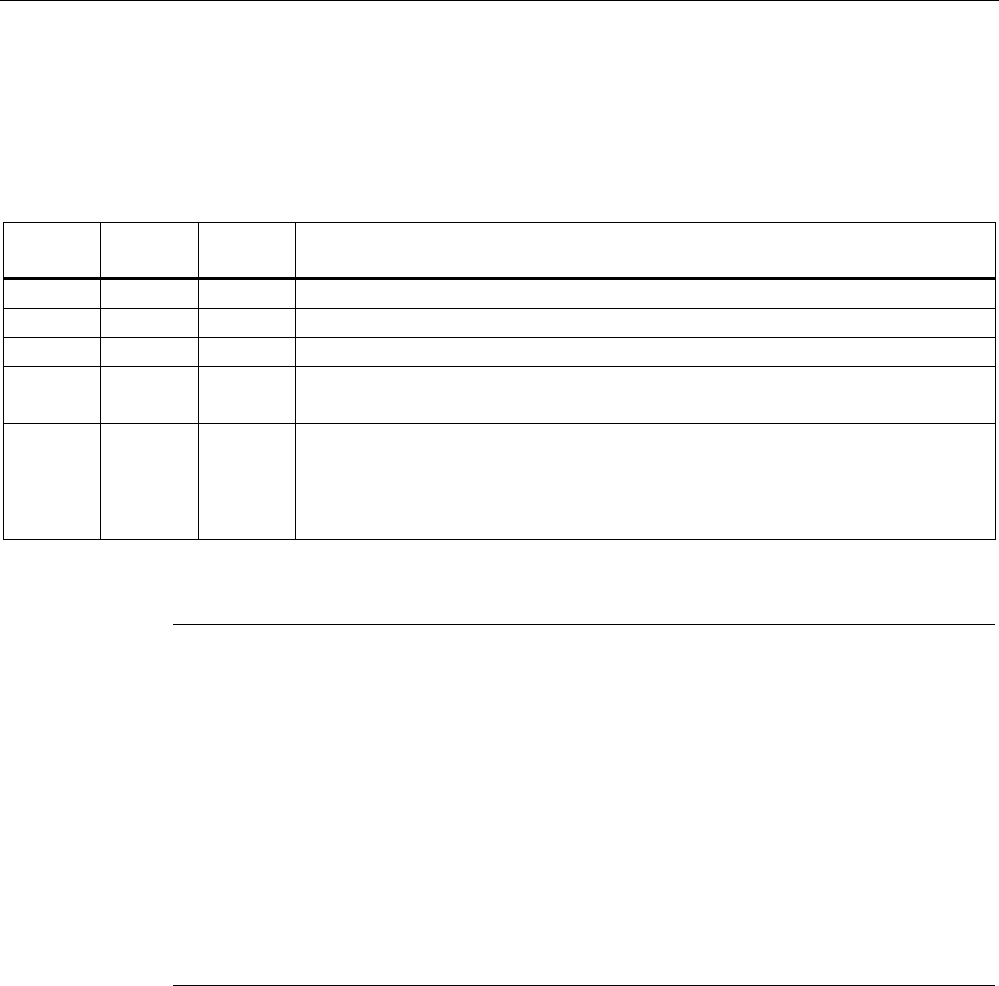
Readers
5.1 RF620R reader
SIMATIC RF600
System Manual, 05/2012, J31069-D0171-U001-A13-7618 97
5.1.1.2 Status display
The device is equipped with a three colored LED. The LED can be lit in green, red or yellow.
The meaning of the indication changes in accordance with the color and state (on, off,
flashing) of the LED:
Green
LED
Red LED Yellow
LED
Meaning
Off Off Off The device is starting up.
Flashing Off Off The device is ready. The antenna is switched off.
On Off Off The device is ready. The antenna is switched on.
Off Off On "With presence": At least one tag is in the field.
"Without presence": Communication with a tag is active.
Off Flashing Off Reader is not active, a serious error has occurred. In addition, this LED also indicates
the fault status through the number of flashing pulses. Reboot (operating voltage Off
→ On is necessary).
The LED flashes once for the 'INACTIVE' status, rebooting is not necessary in this
case.
For more detailed information on the flash codes of the reader see section Error messages
and flash codes for RF620R/RF630R (Page 386)
Note
LED not lit yellow?
If the LED does not light up yellow even though a tag is located within the field, common
causes are:
• Incorrect configuration in the init_run command, or init_run command was not executed
(see "Configuration Manual RF620R/RF630R")
• Parameter assignment is incorrect (black list, RSSI threshold)
• Antenna is switched off
• A tag is used, that is not compatible with the reader protocol (EPC Global Class 1 Gen 2).
• Tag is defective
• Reader or antenna has a defect
• Tag is not in the field of radiation of the transmit antenna
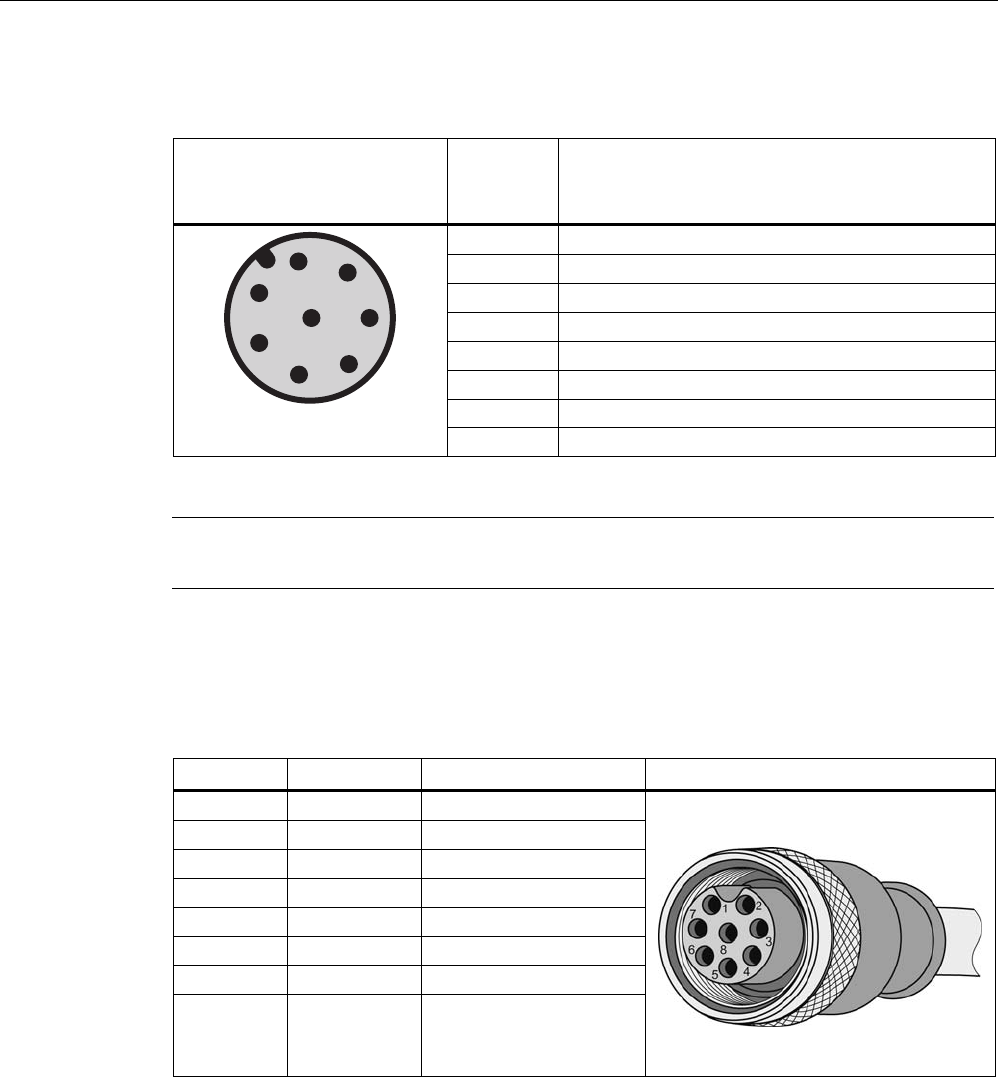
Readers
5.1 RF620R reader
SIMATIC RF600
98 System Manual, 05/2012, J31069-D0171-U001-A13-7618
5.1.1.3 Pin assignment of the RS422 interface
Pin Pin
Device end
8-pin M12
Assignment
1 + 24 V
2 - Transmit
3 0 V
4 + Transmit
5 + Receive
6 - Receive
7 Free
8 Earth (shield)
The knurled bolt of the M12 plug is not connected to the shield (on the reader side).
Note
You must therefore not use any SIMATIC connecting cables that use the angled M12 plug.
5.1.1.4 Pin assignment of the connecting cable
Table 5- 1 RS 422 - on reader side
M12 pin Core color Pin assignment View of M12 socket
1 white 24 VDC
2 brown TX neg
3 green GND
4 yellow TX pos
5 Gray RX pos
6 pink RX neg
7 blue Not assigned
8 red Earth (shield)